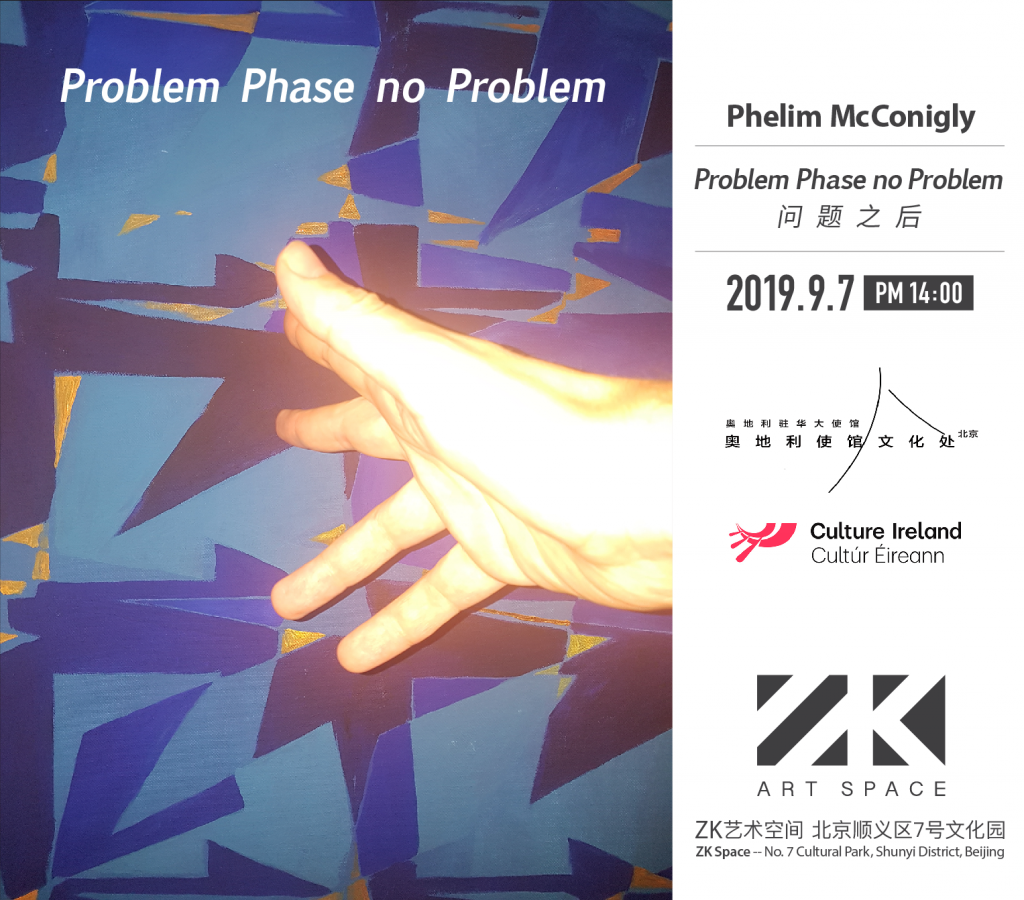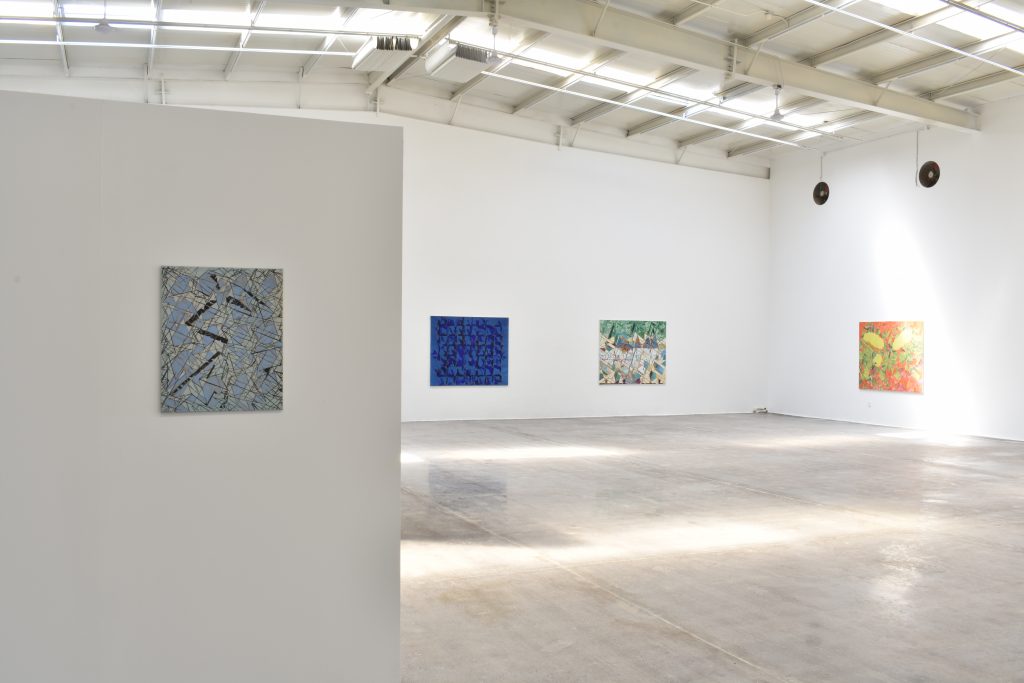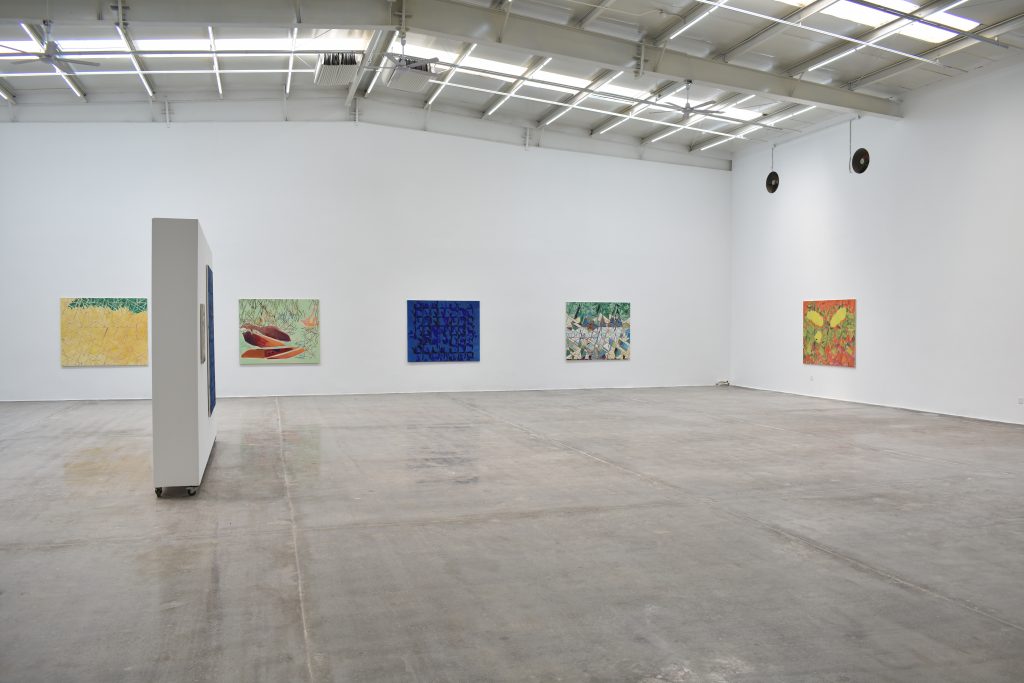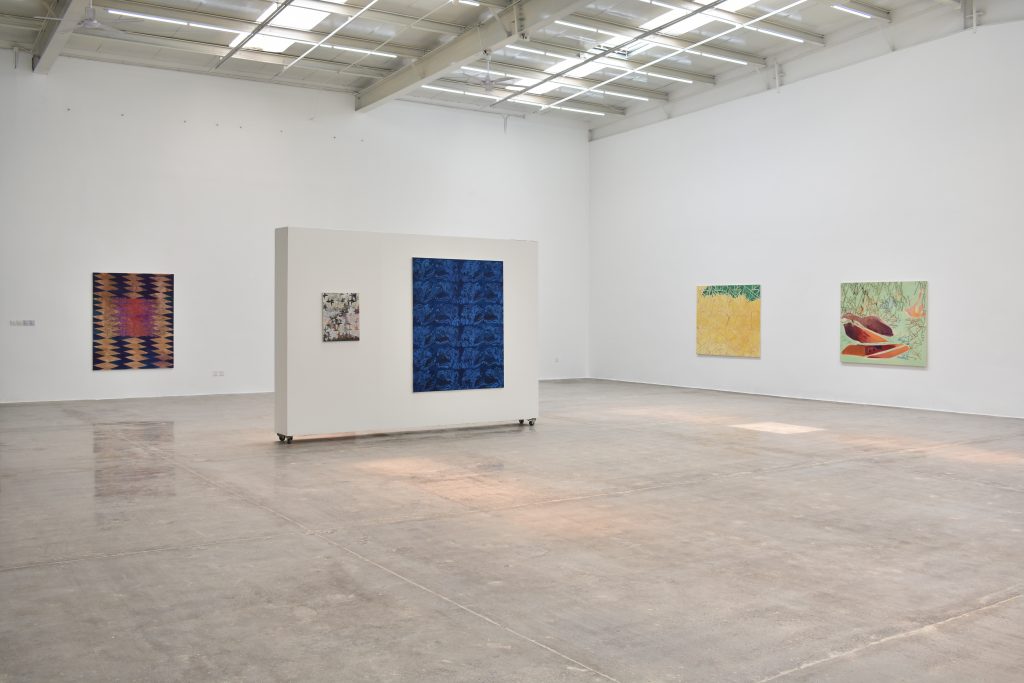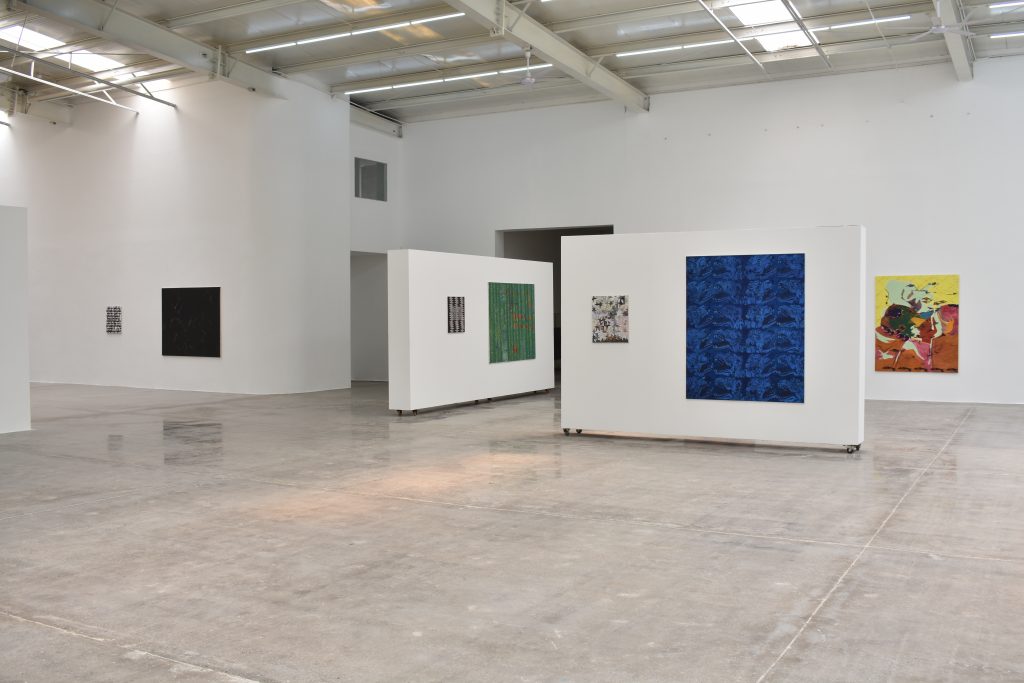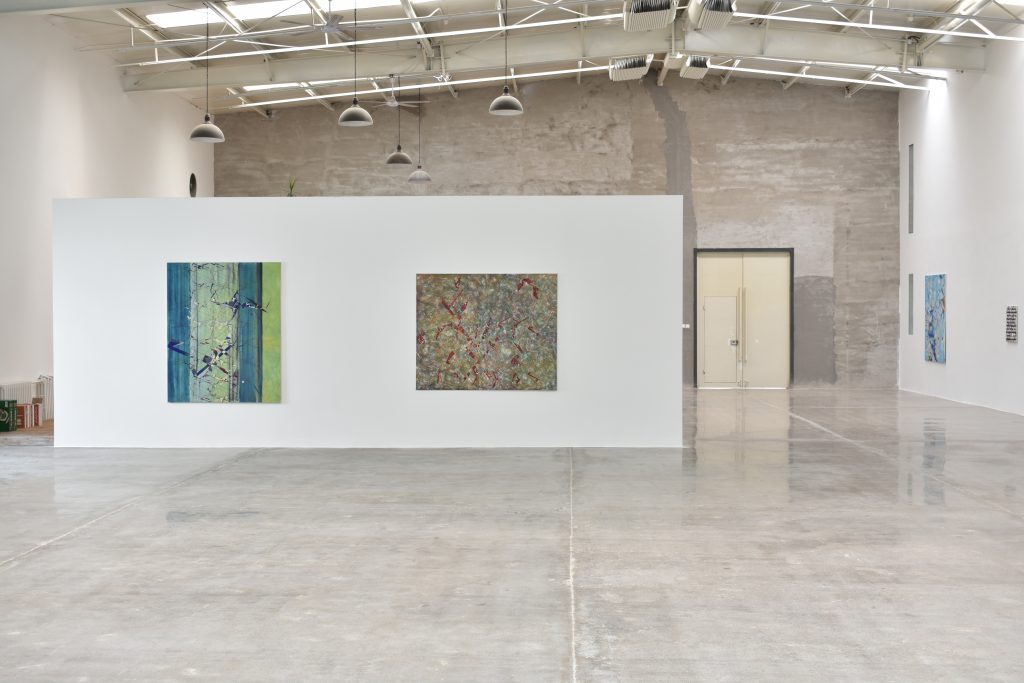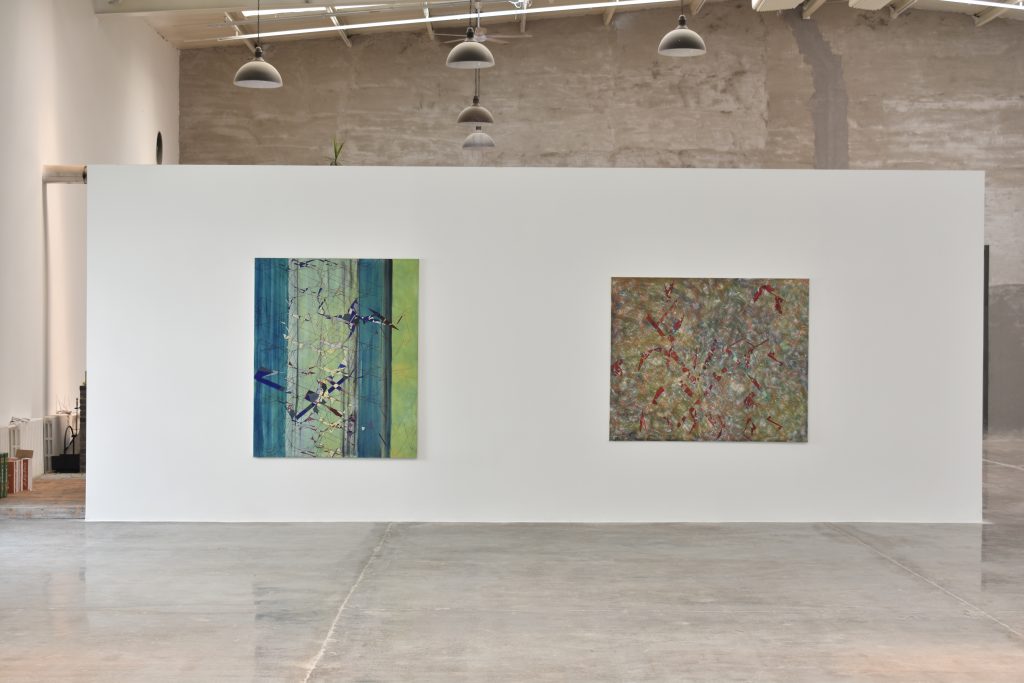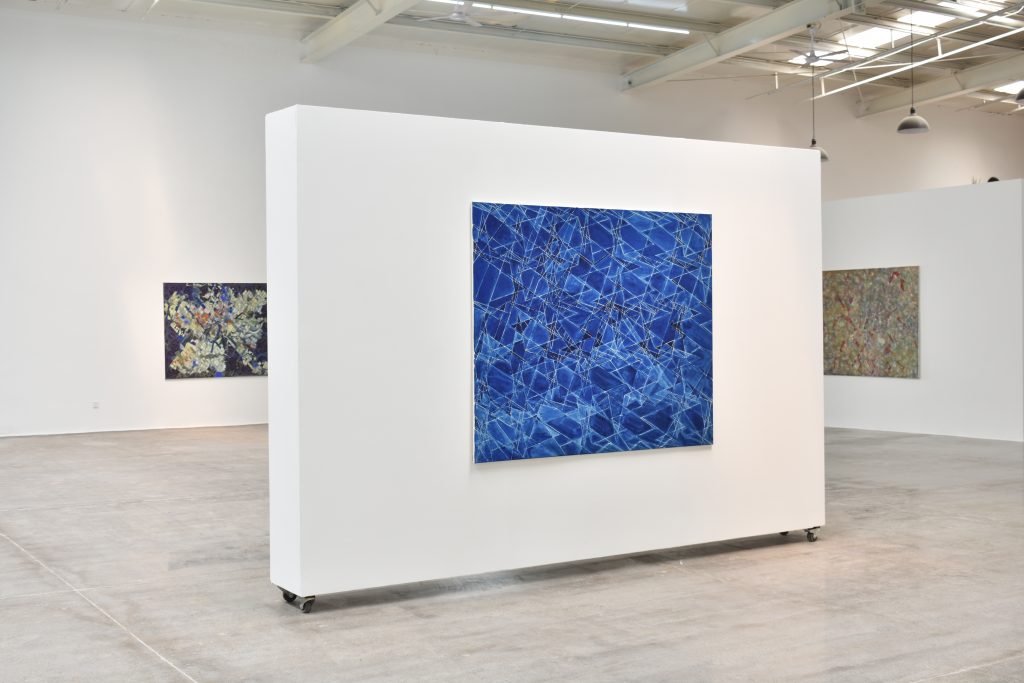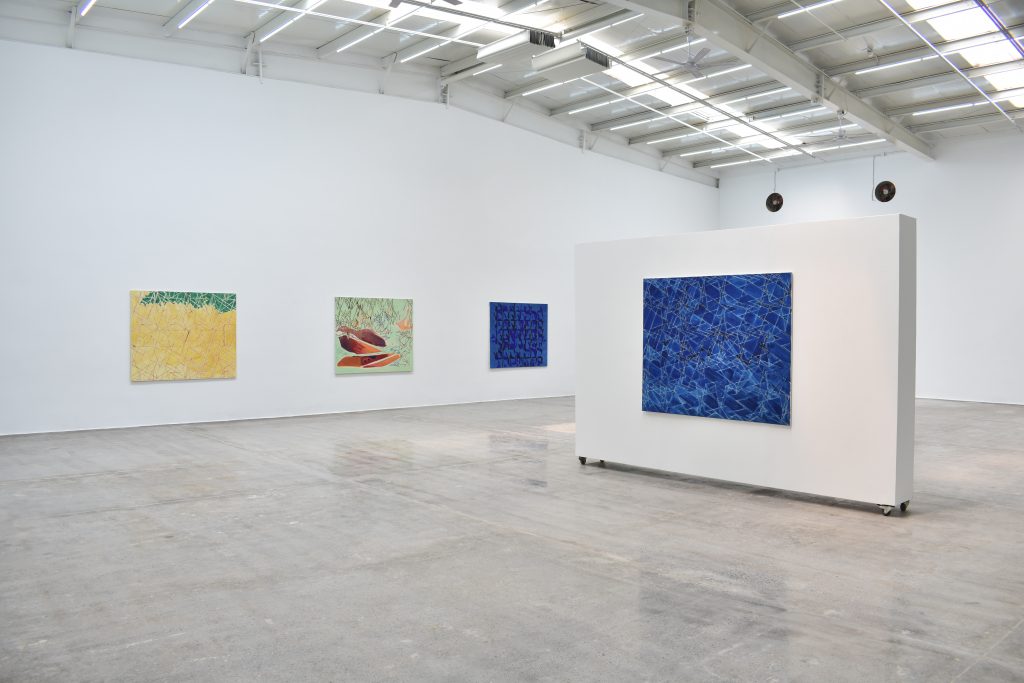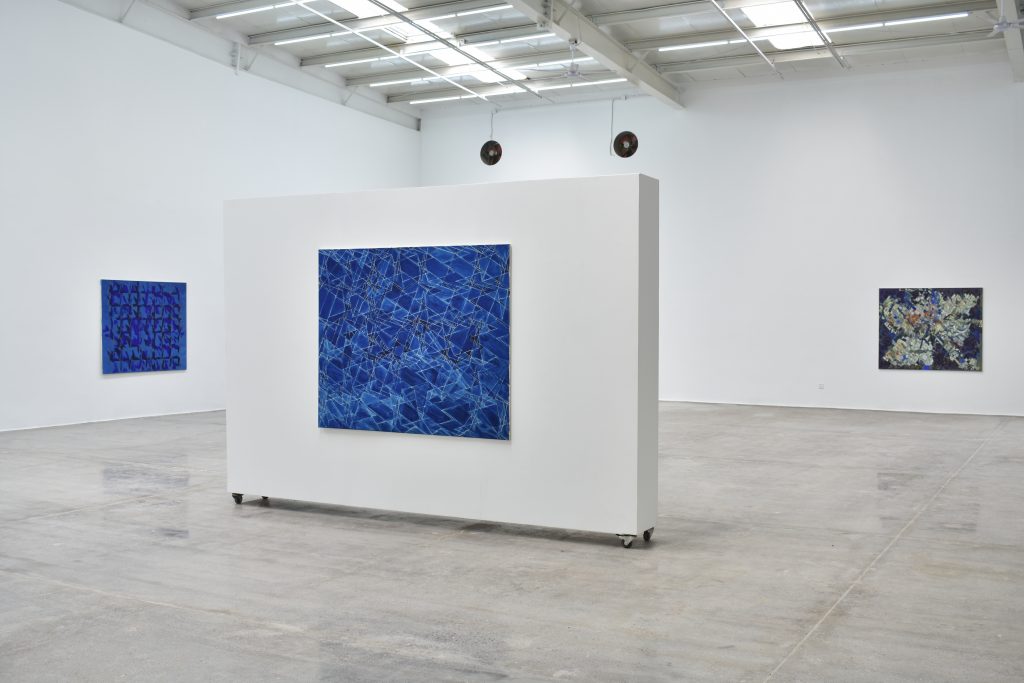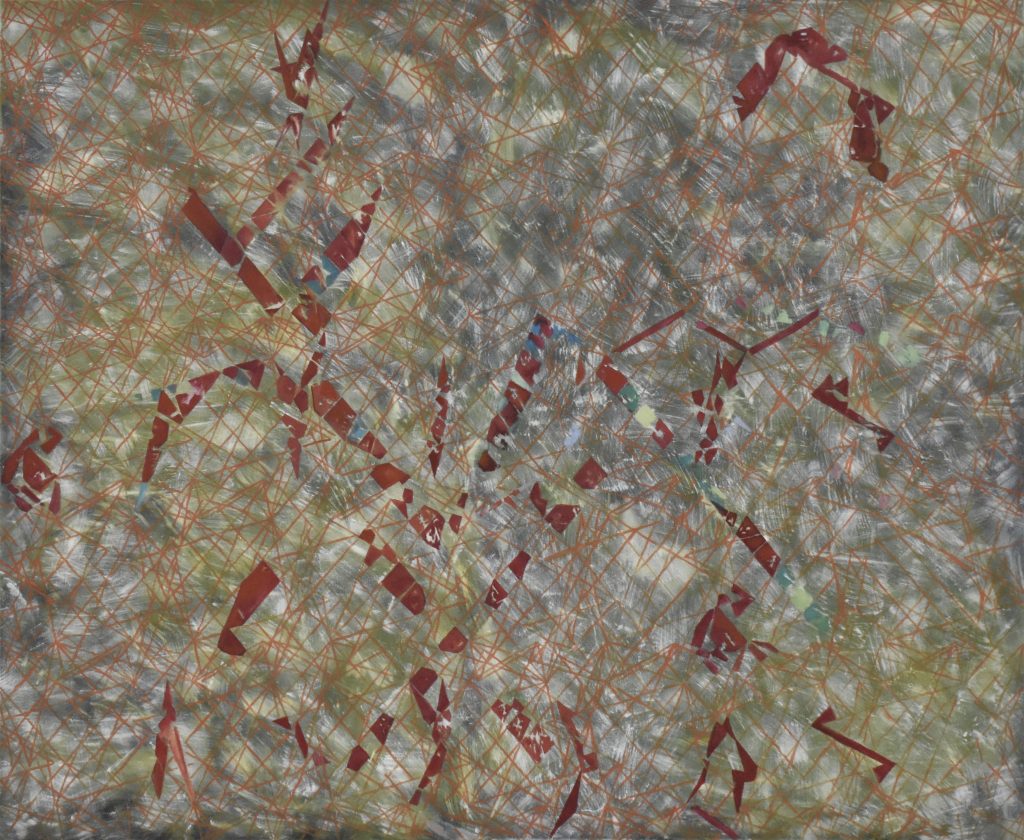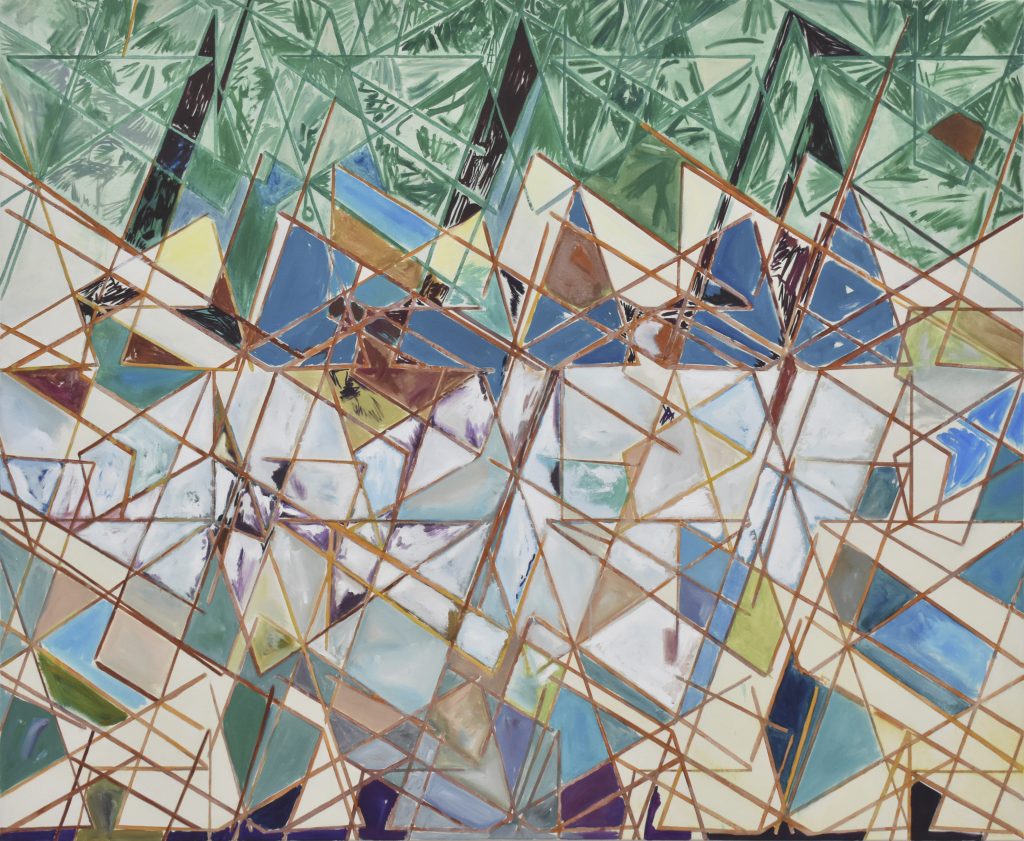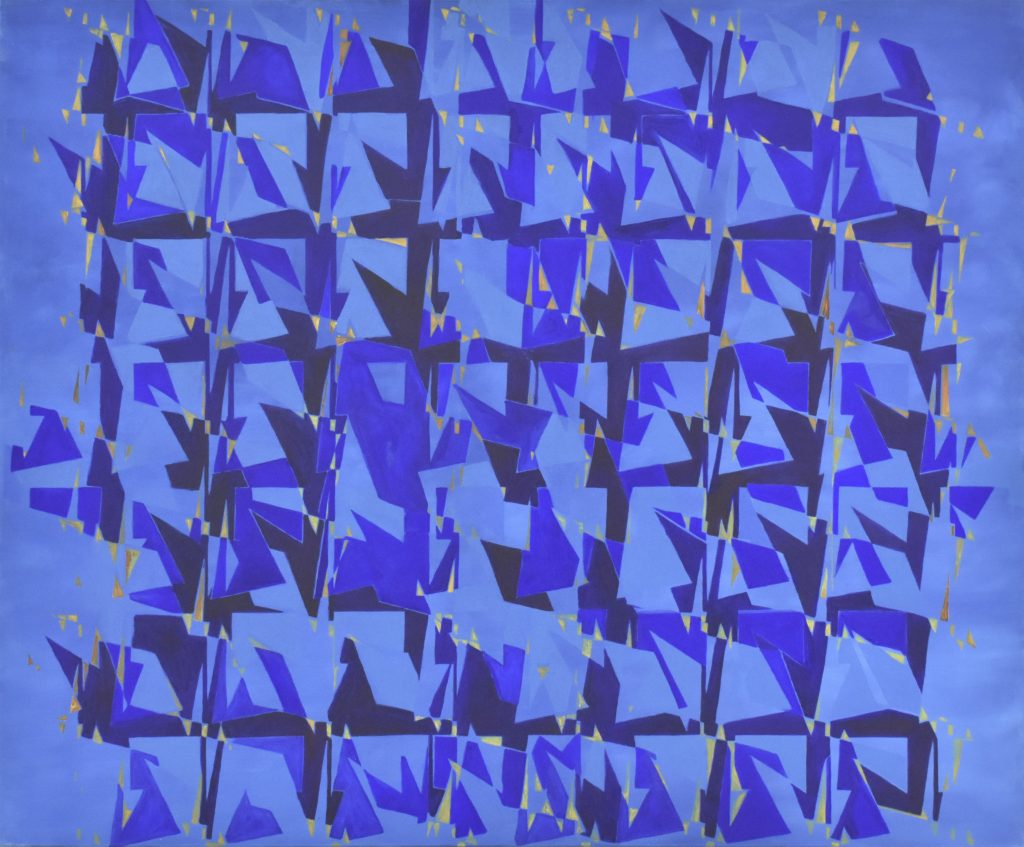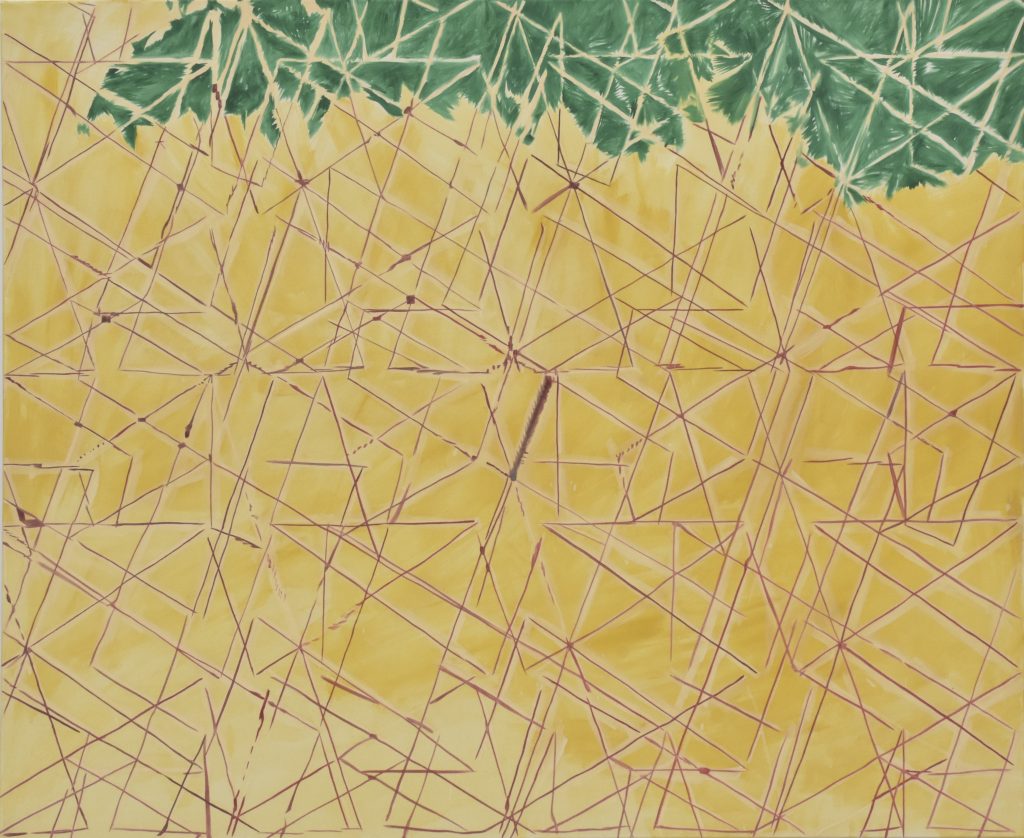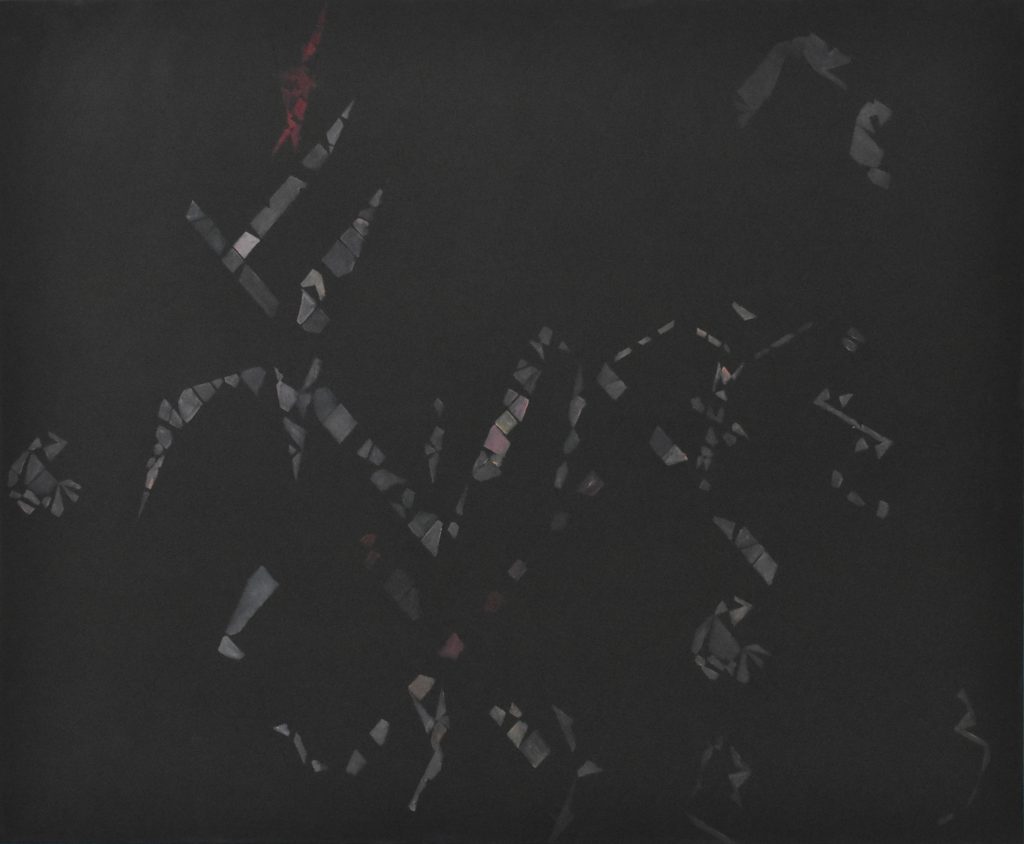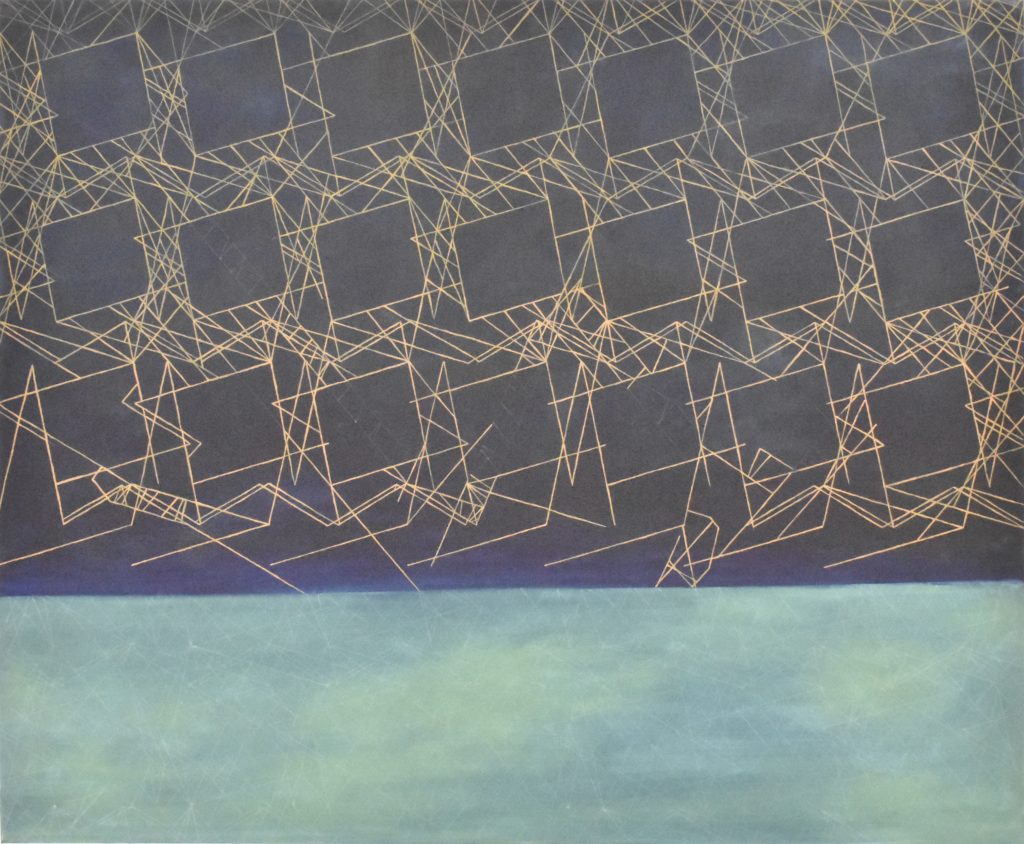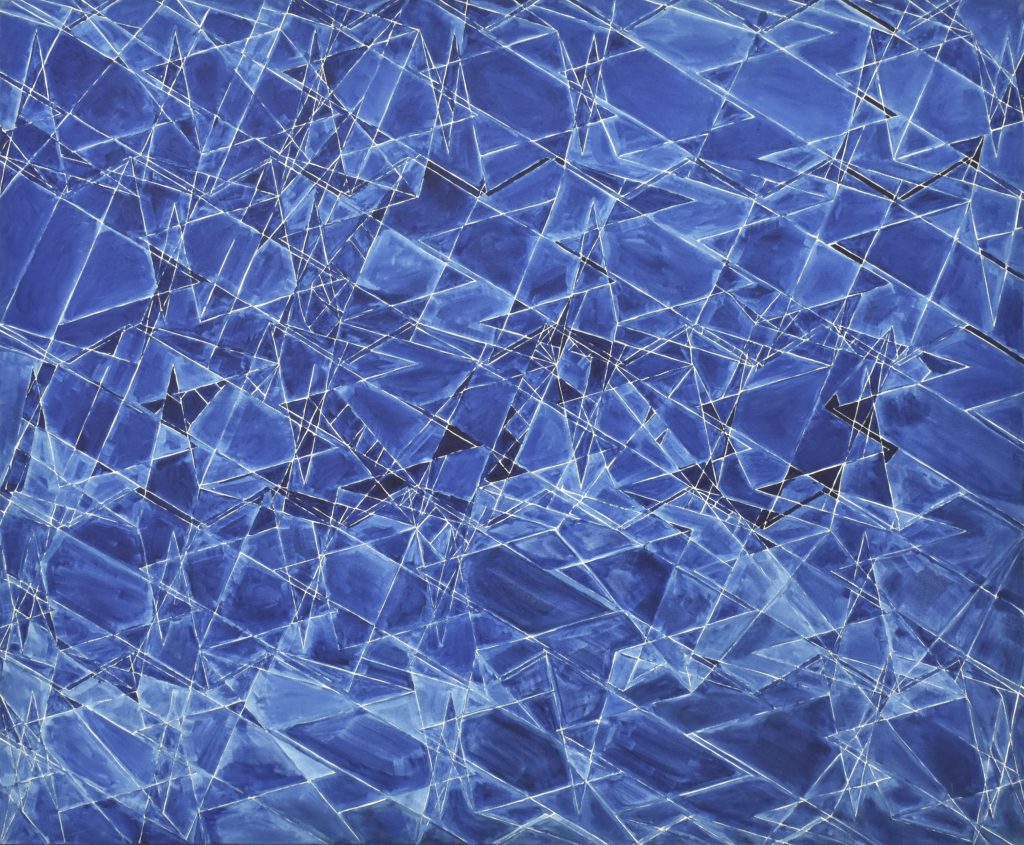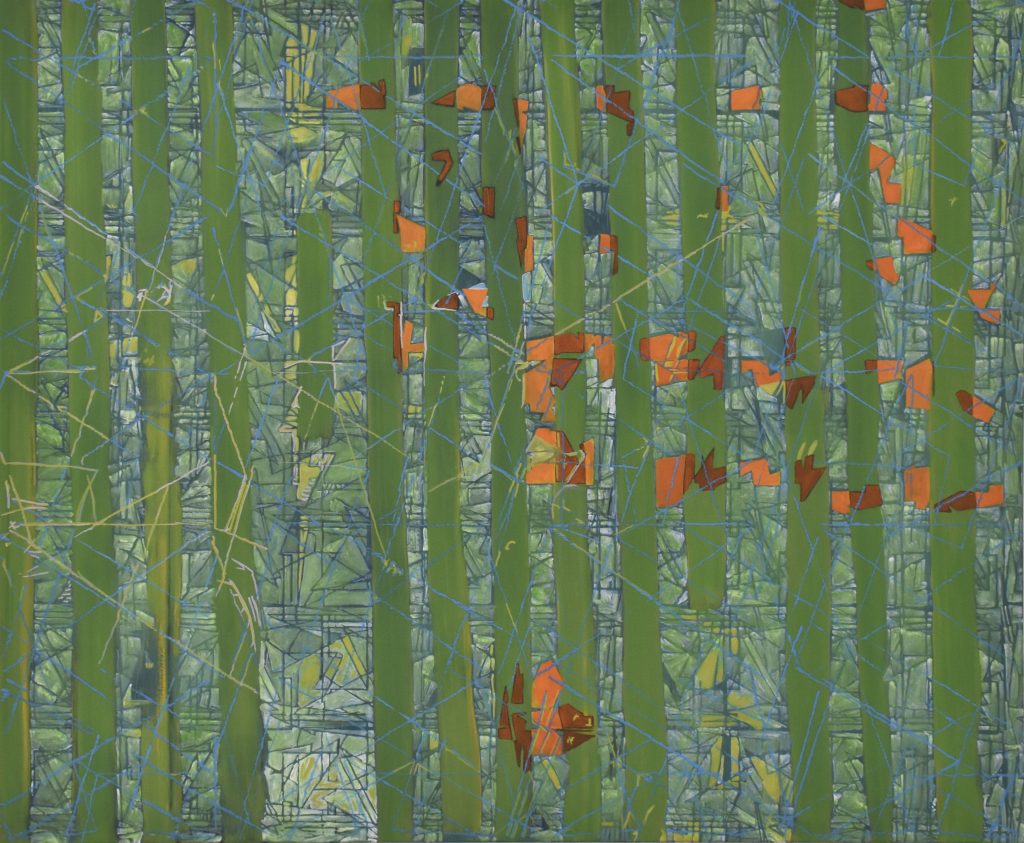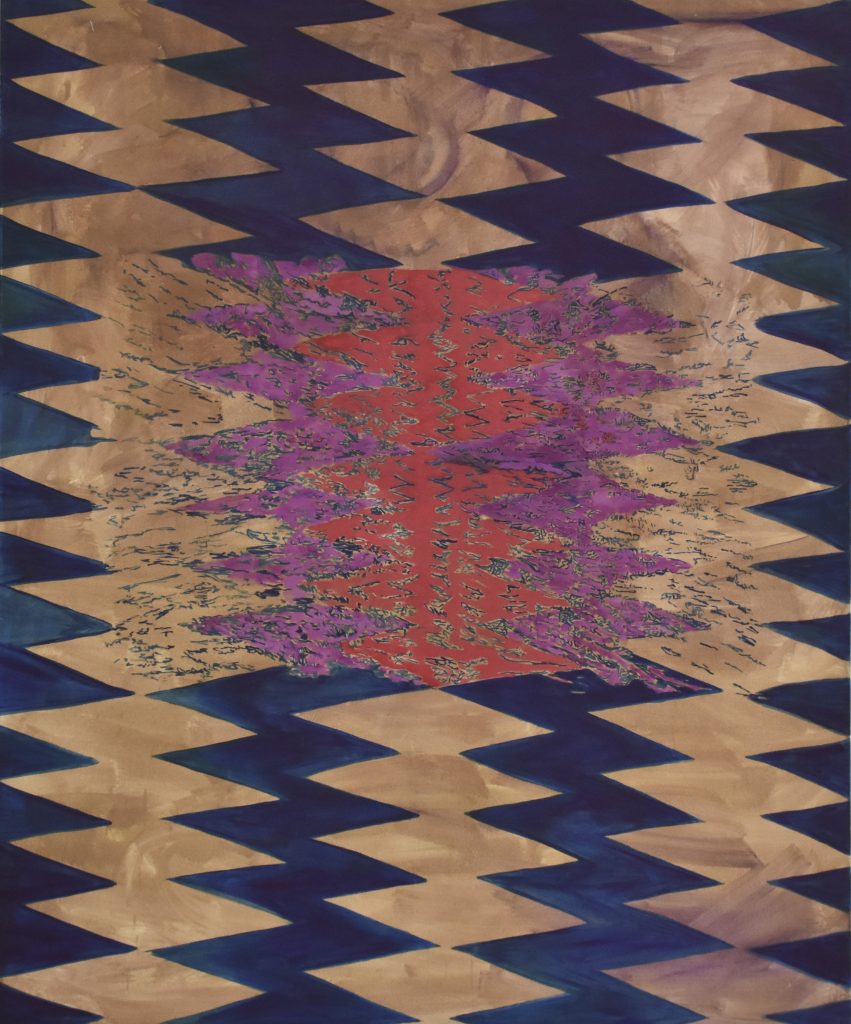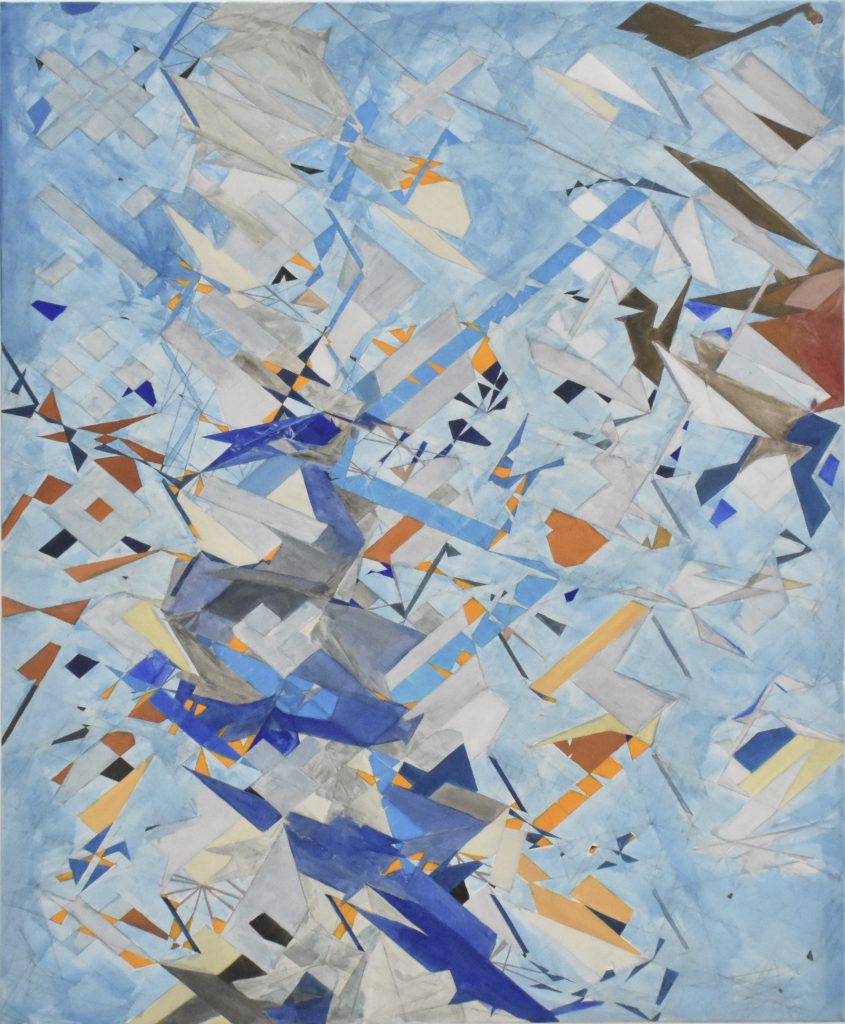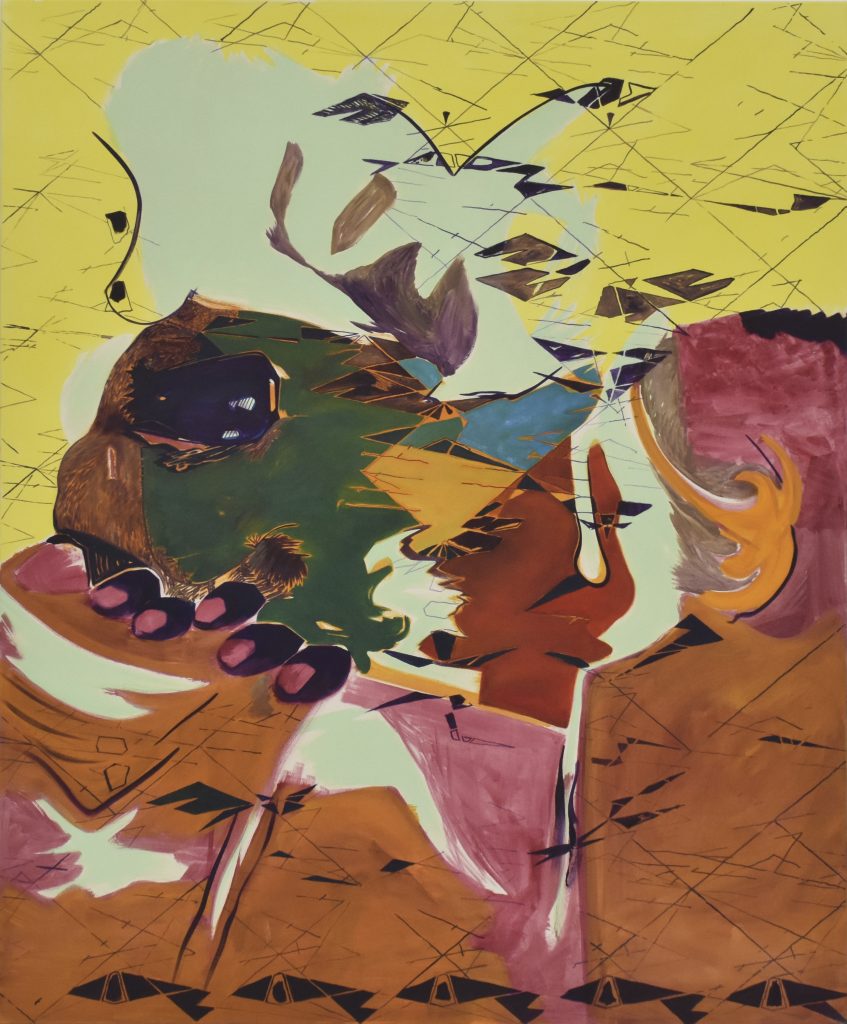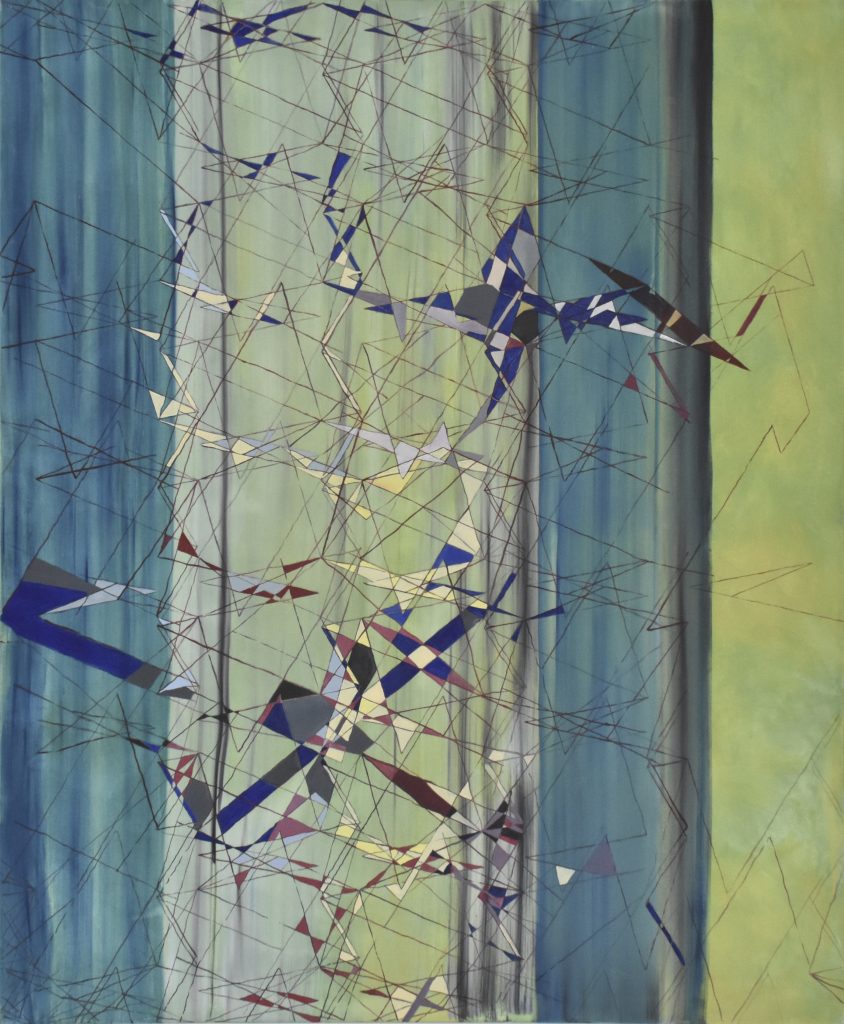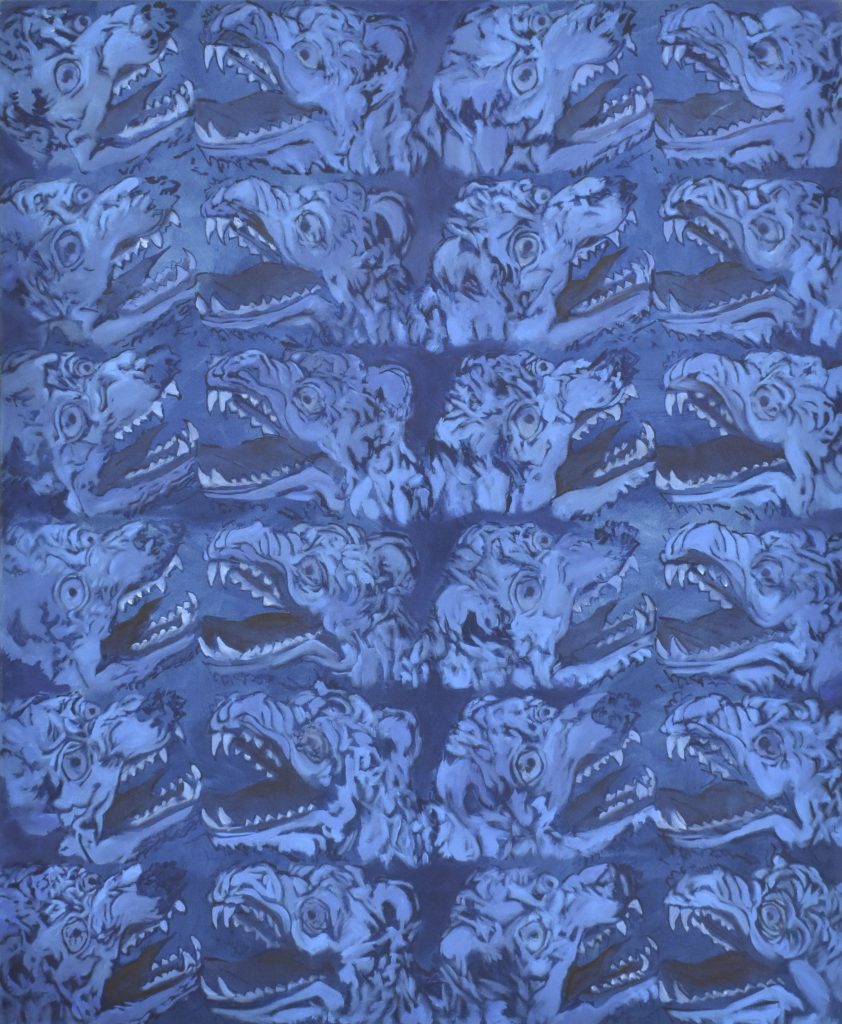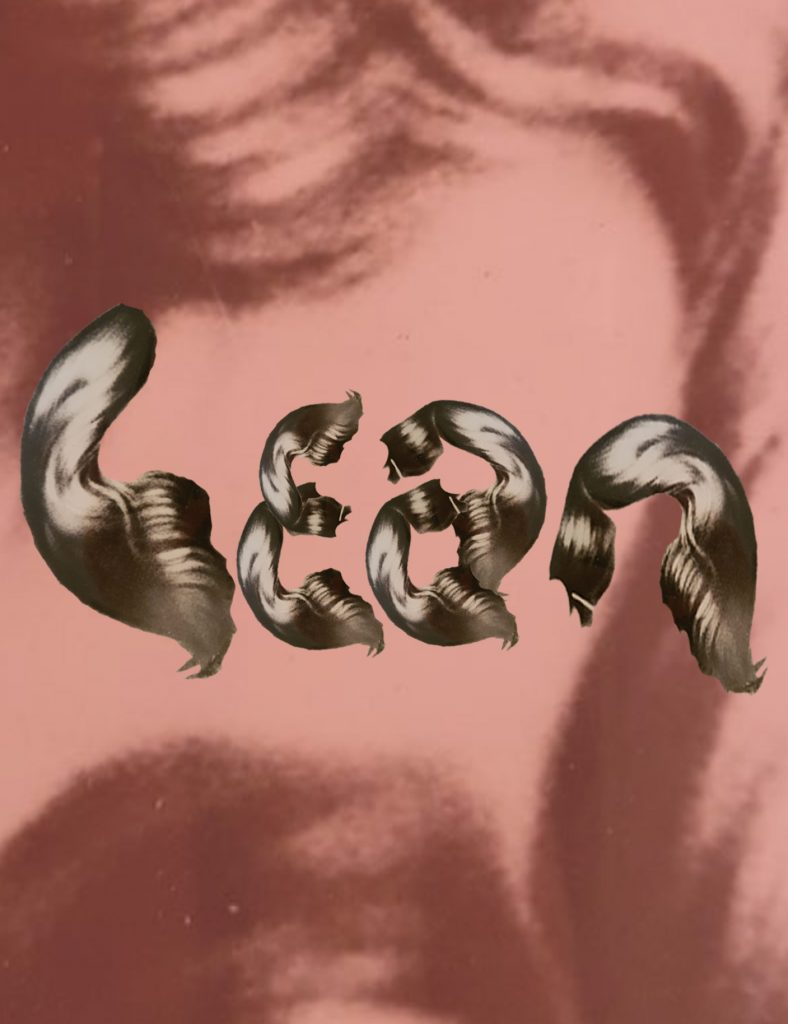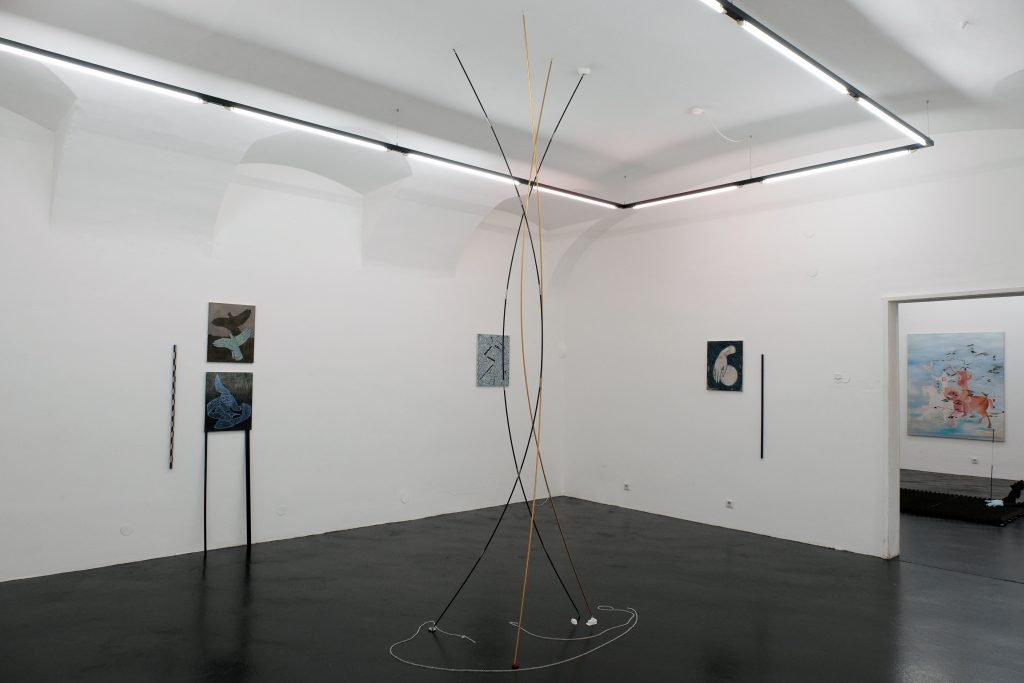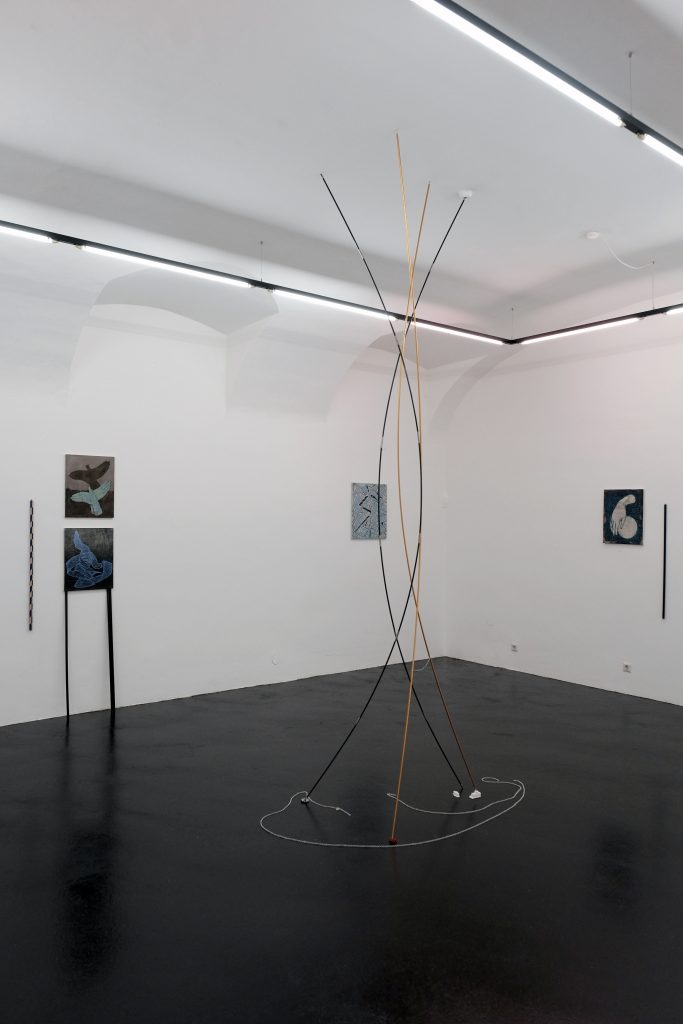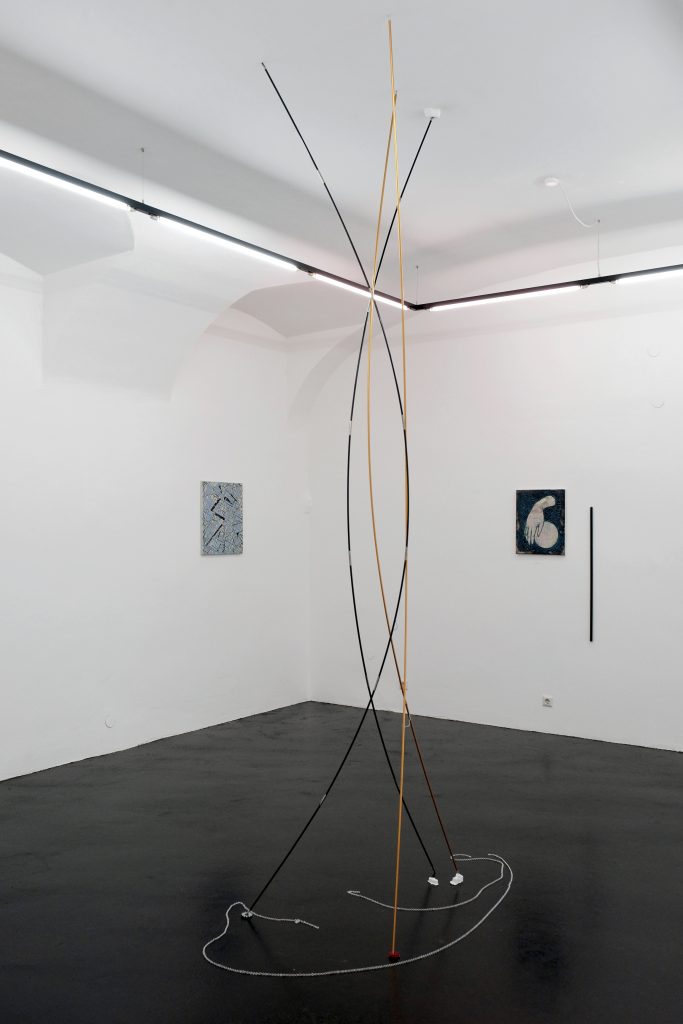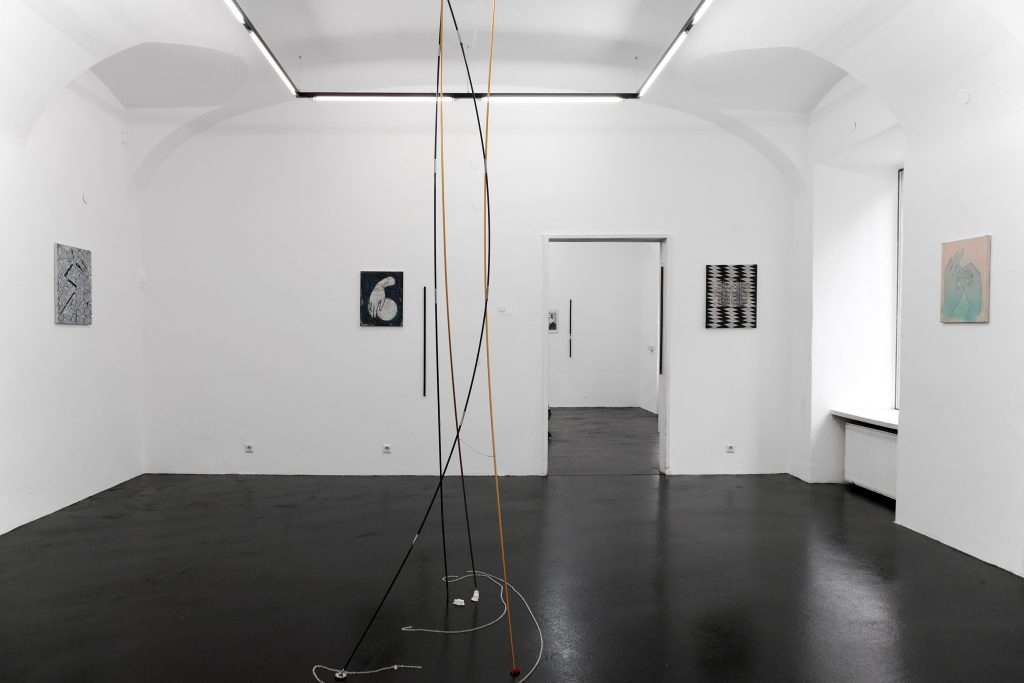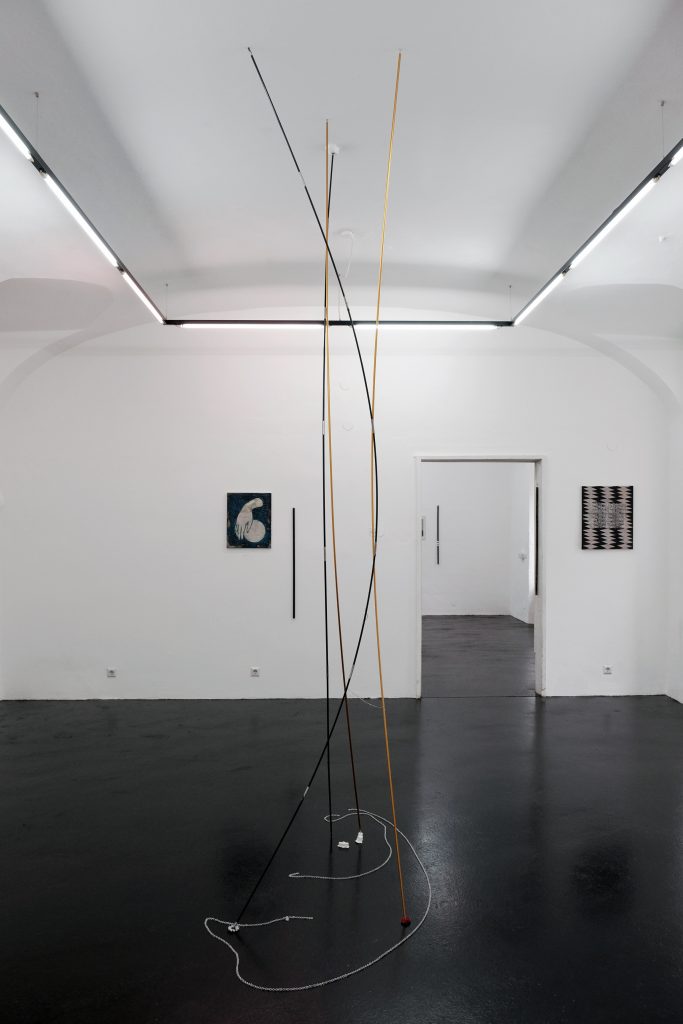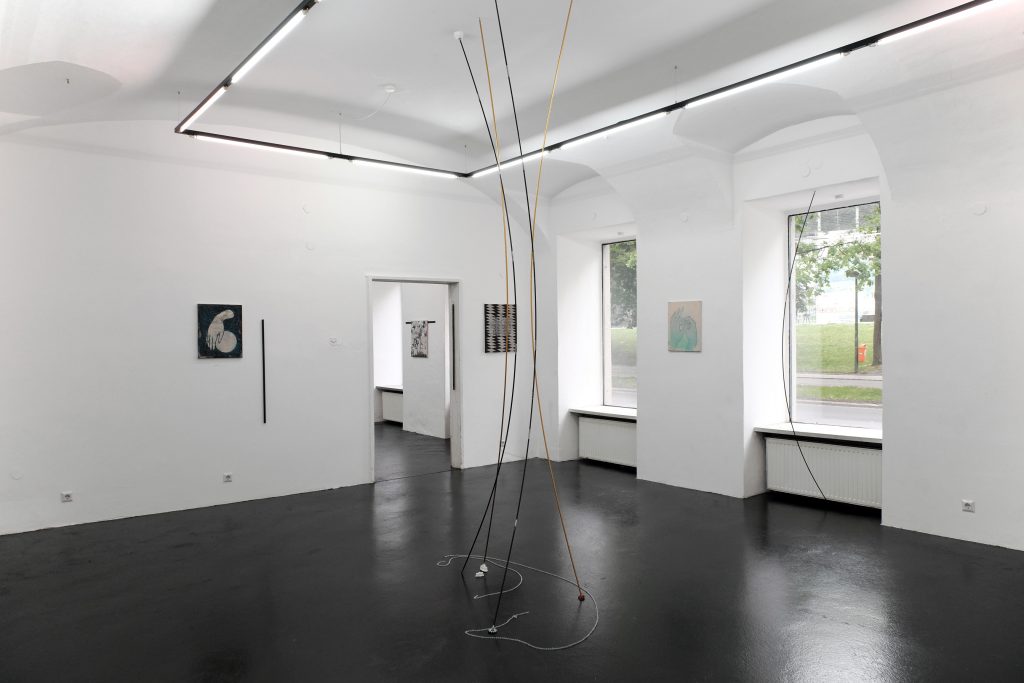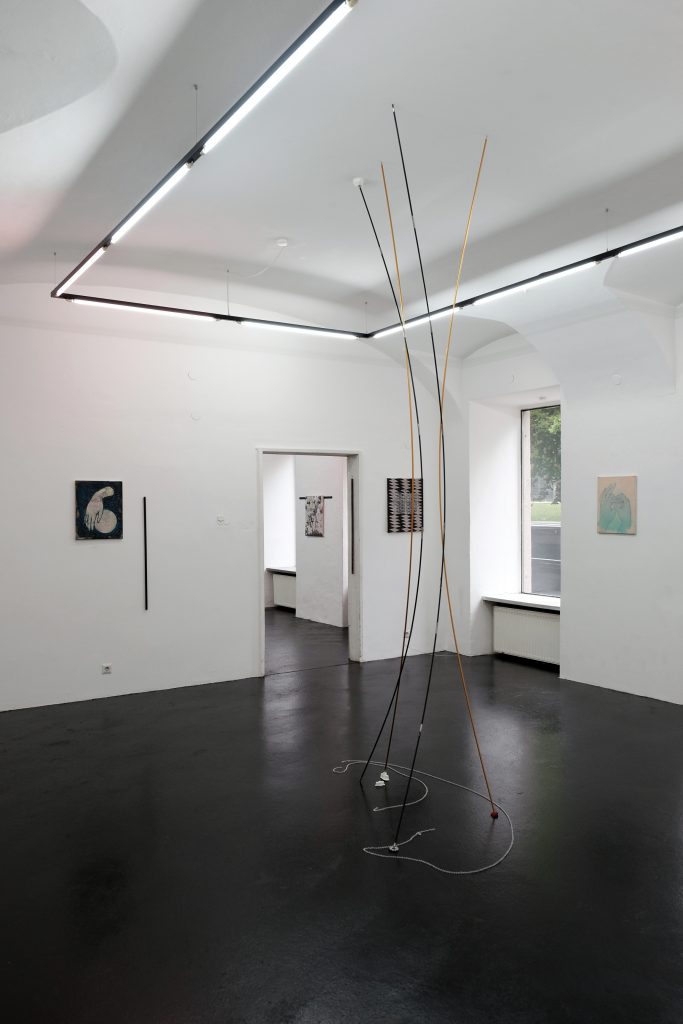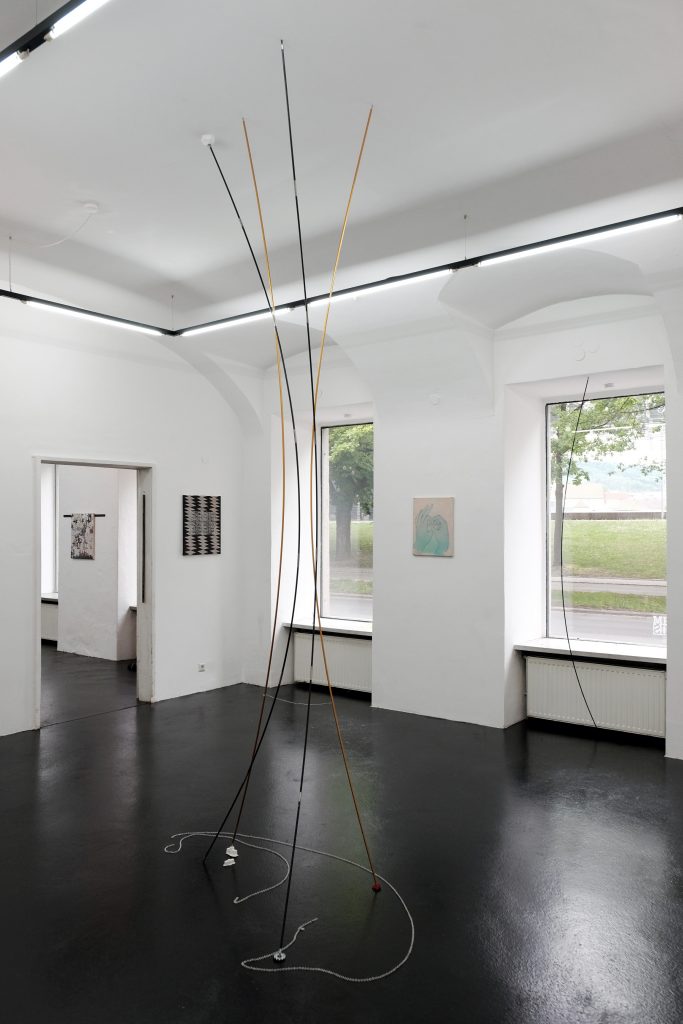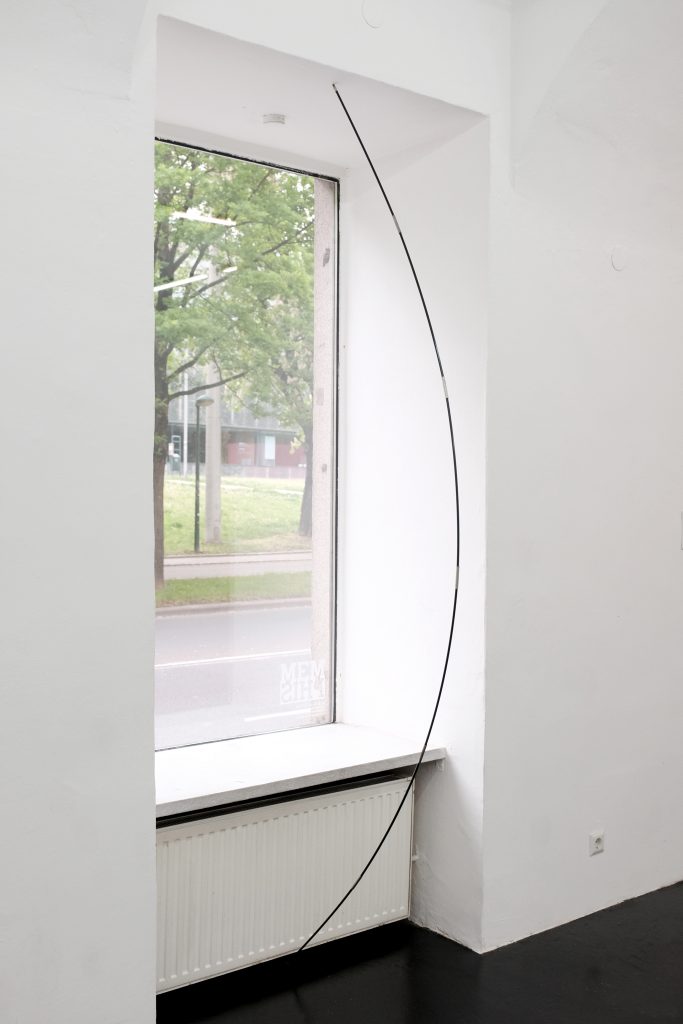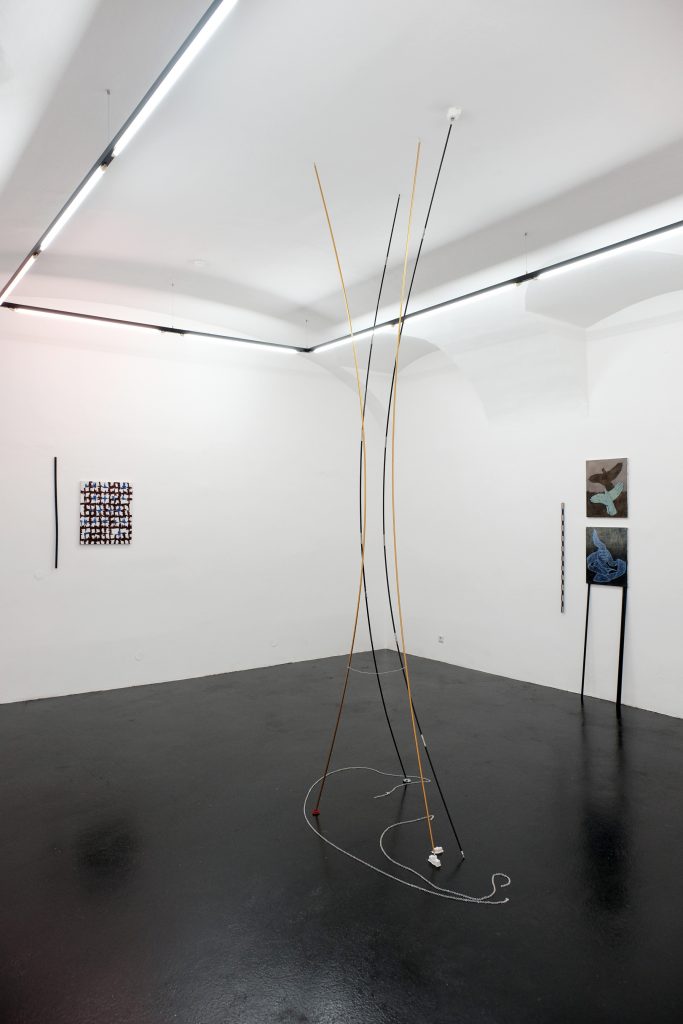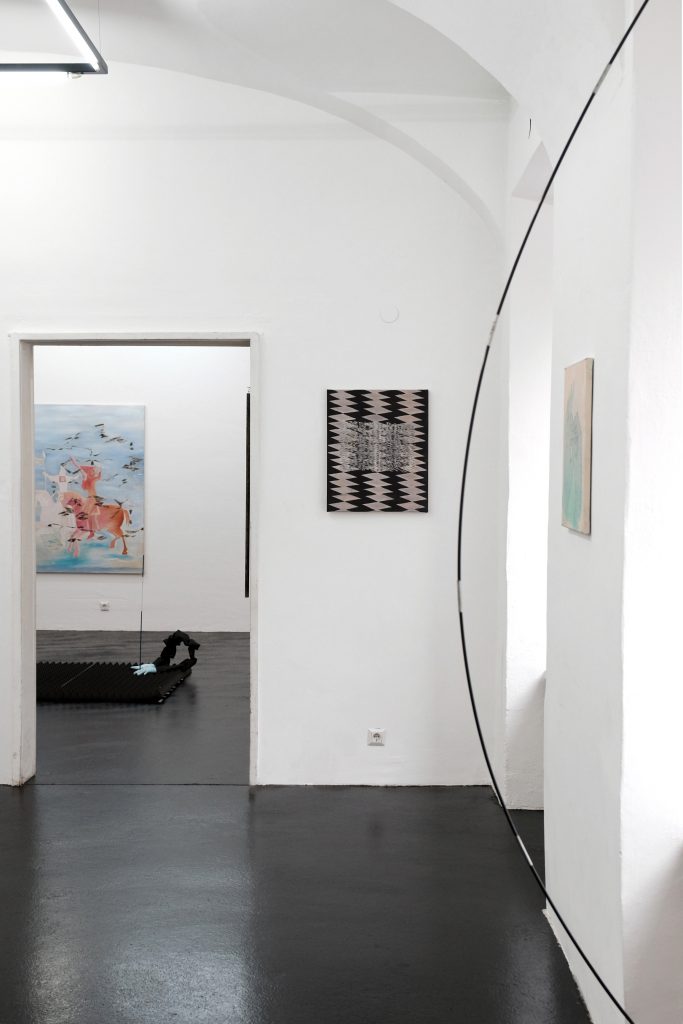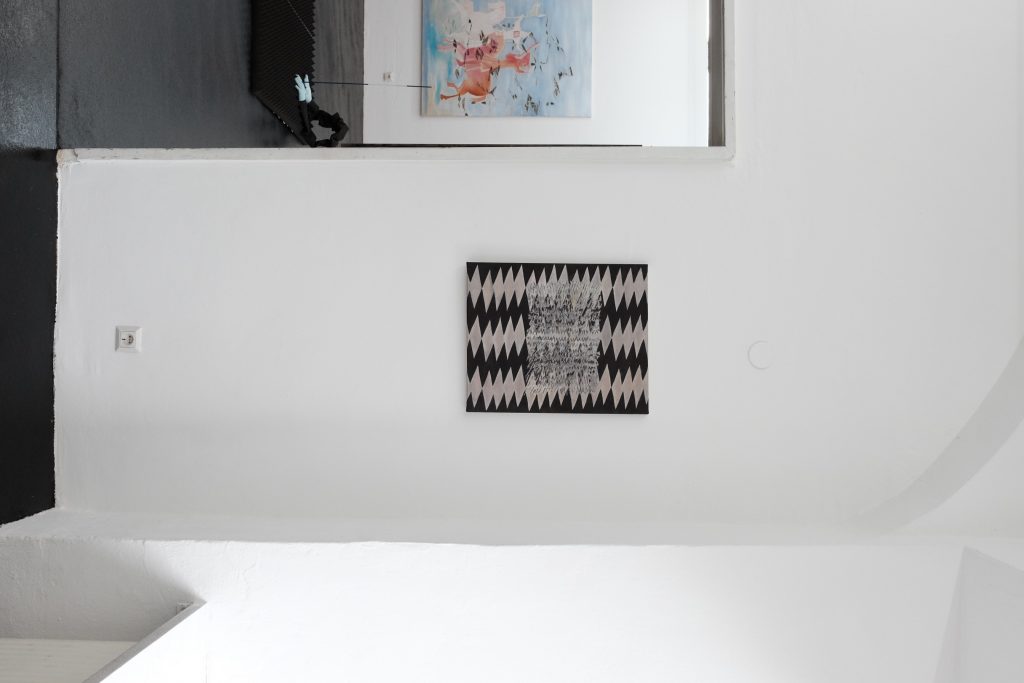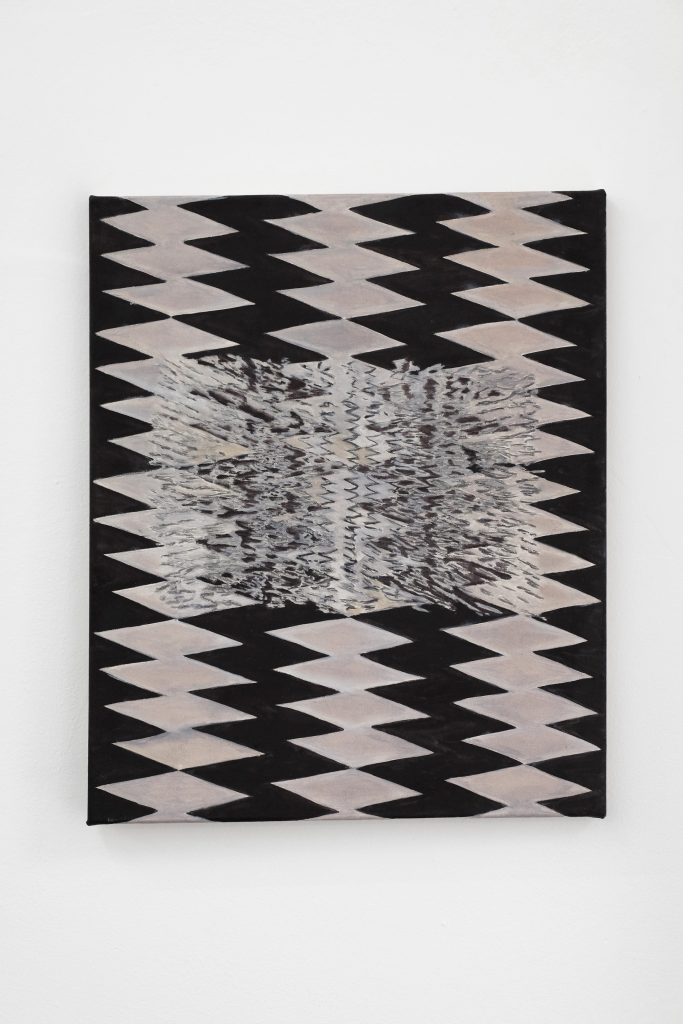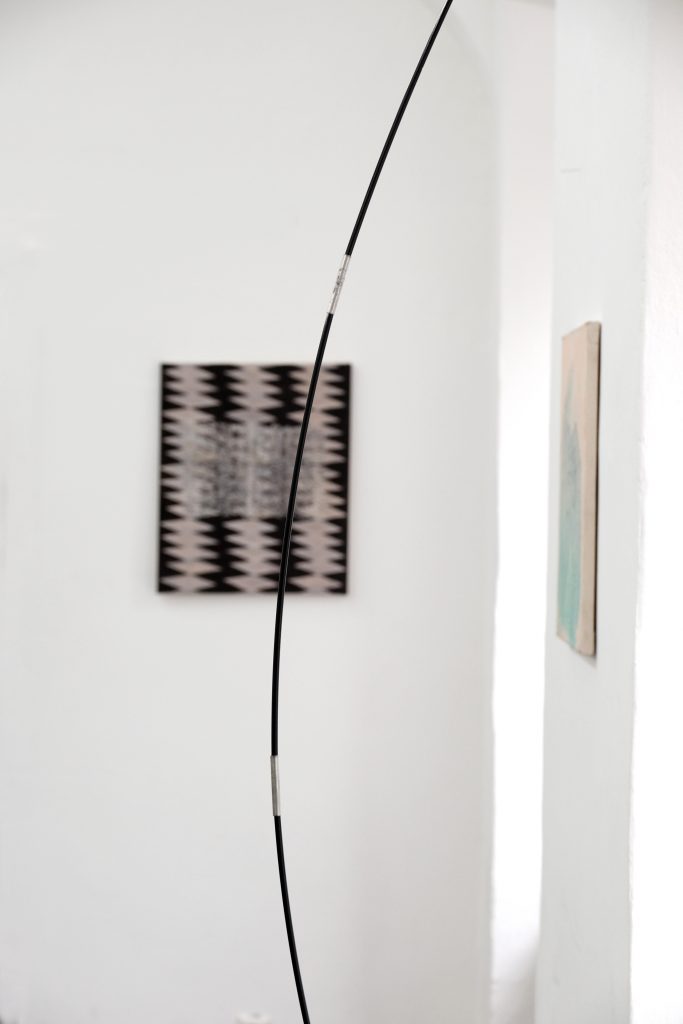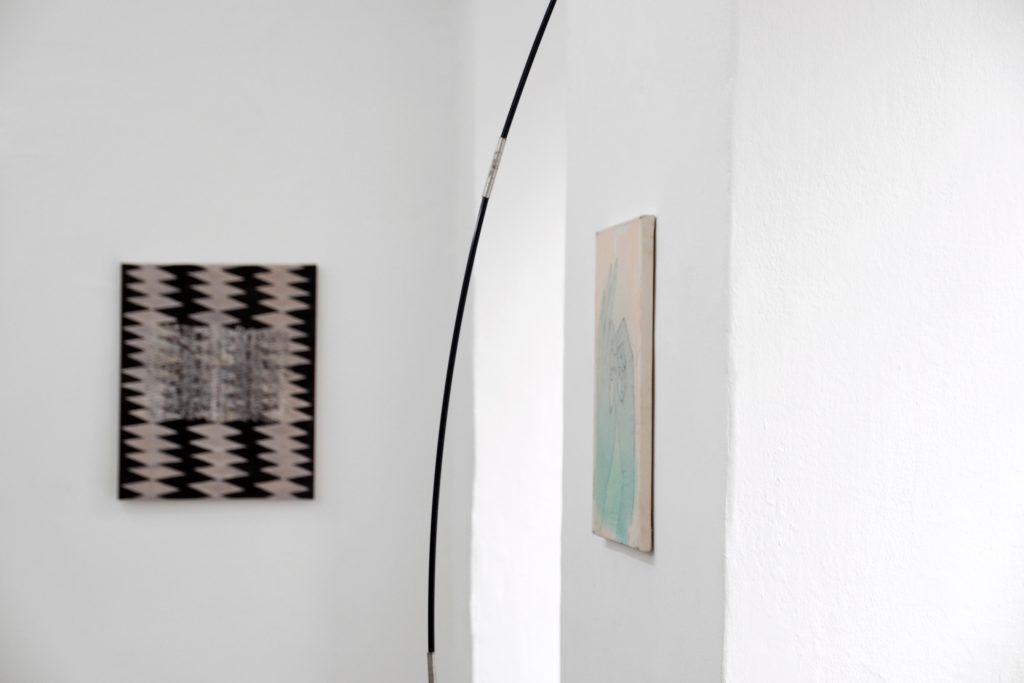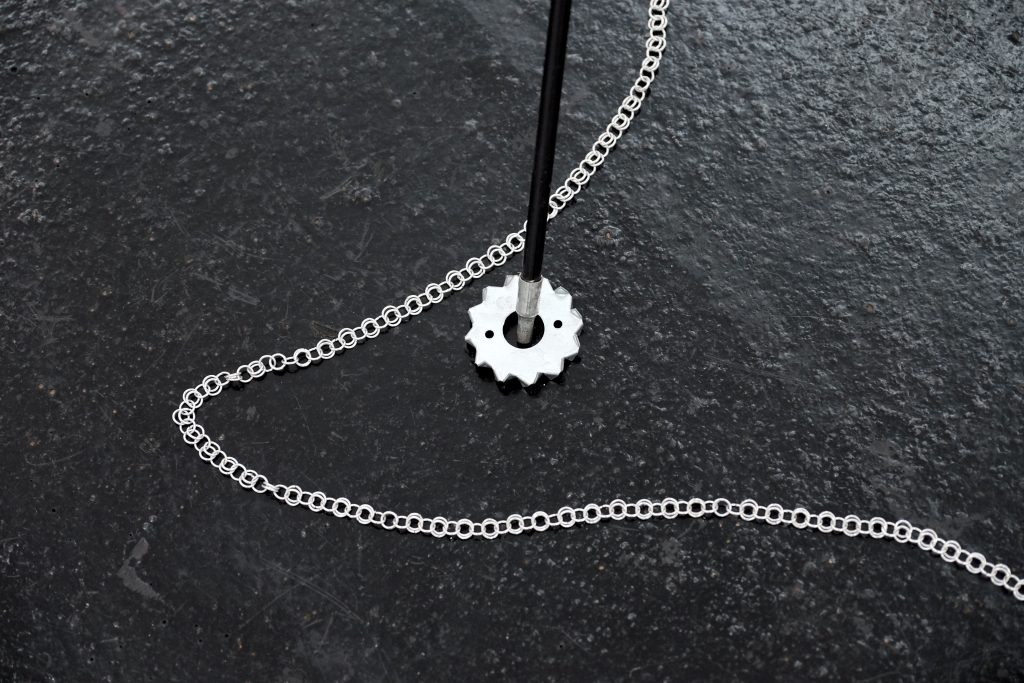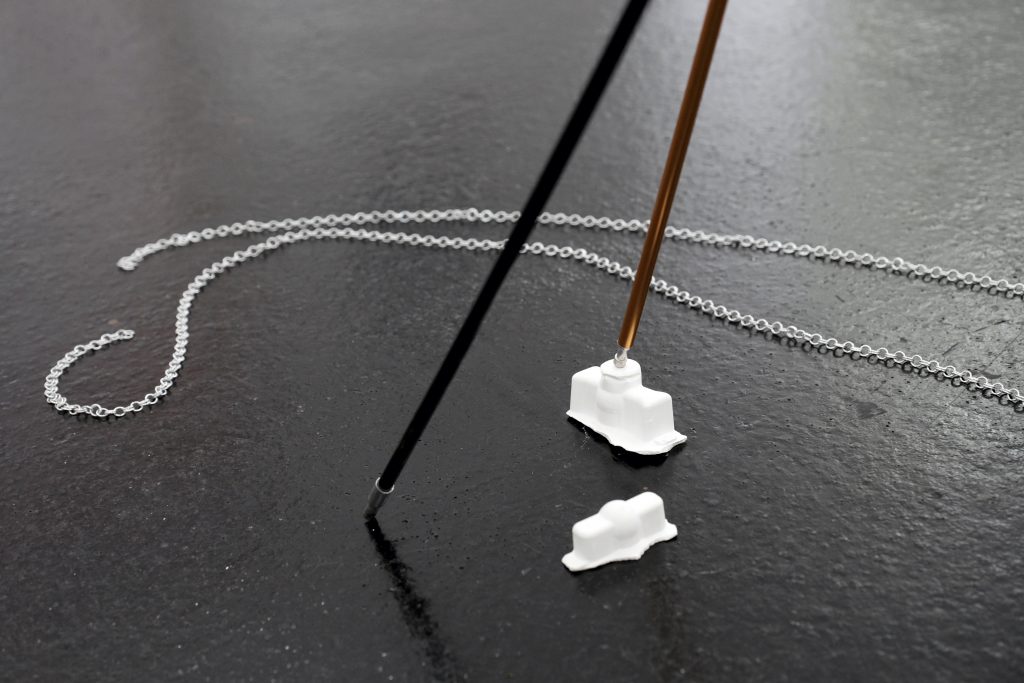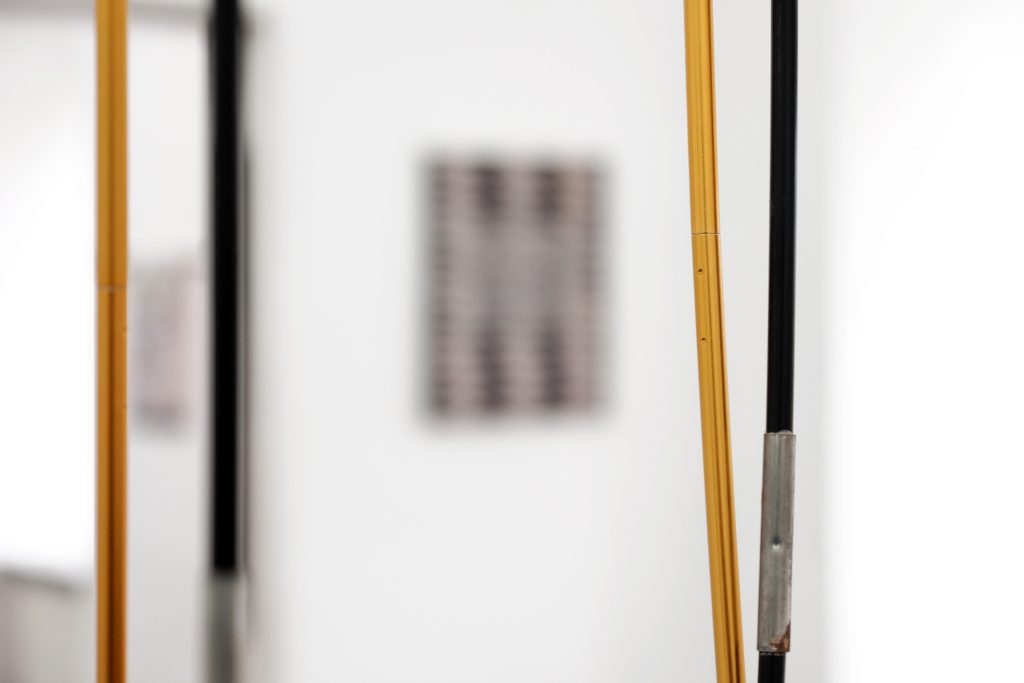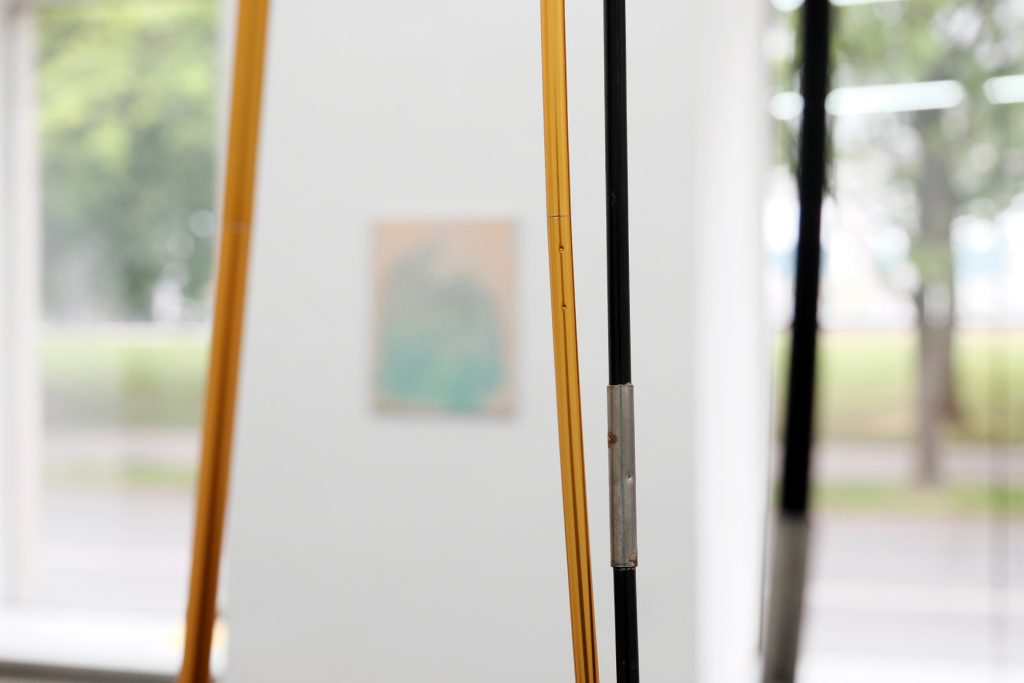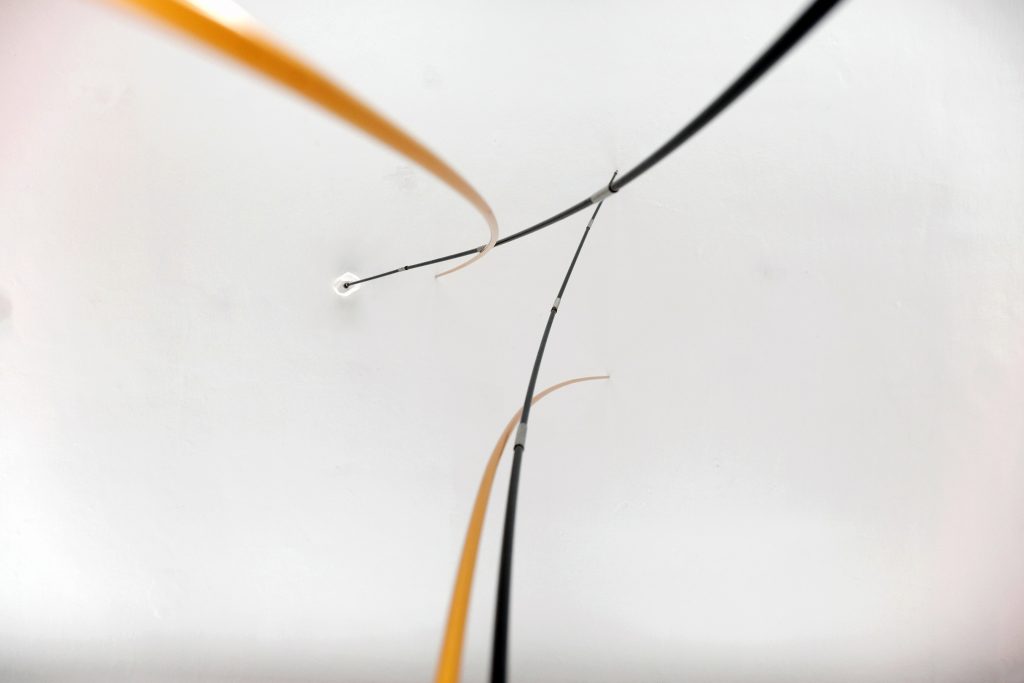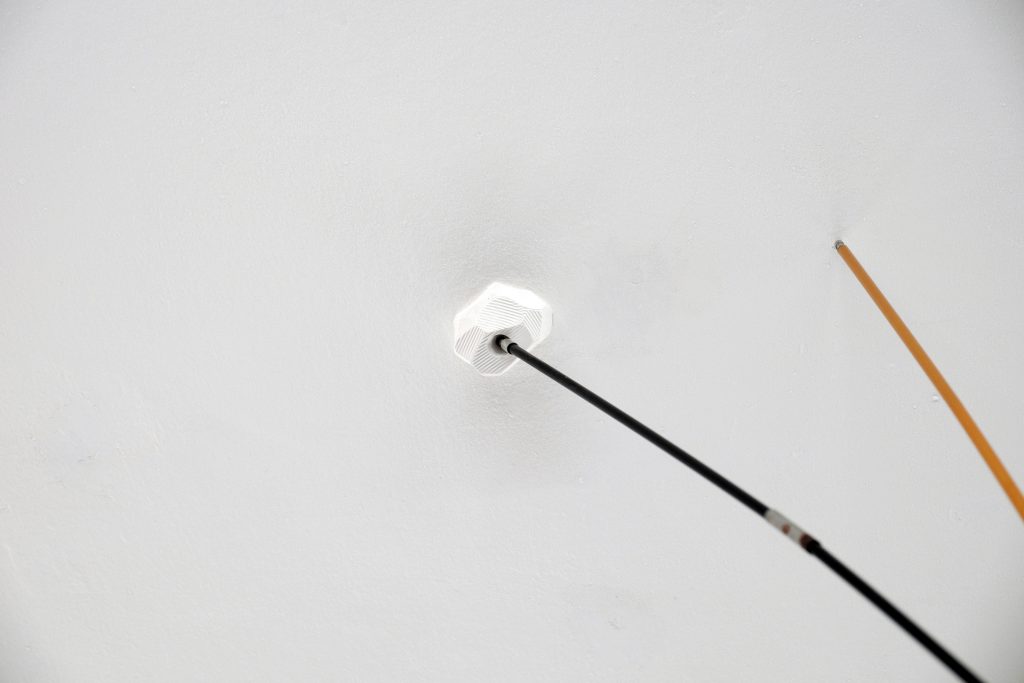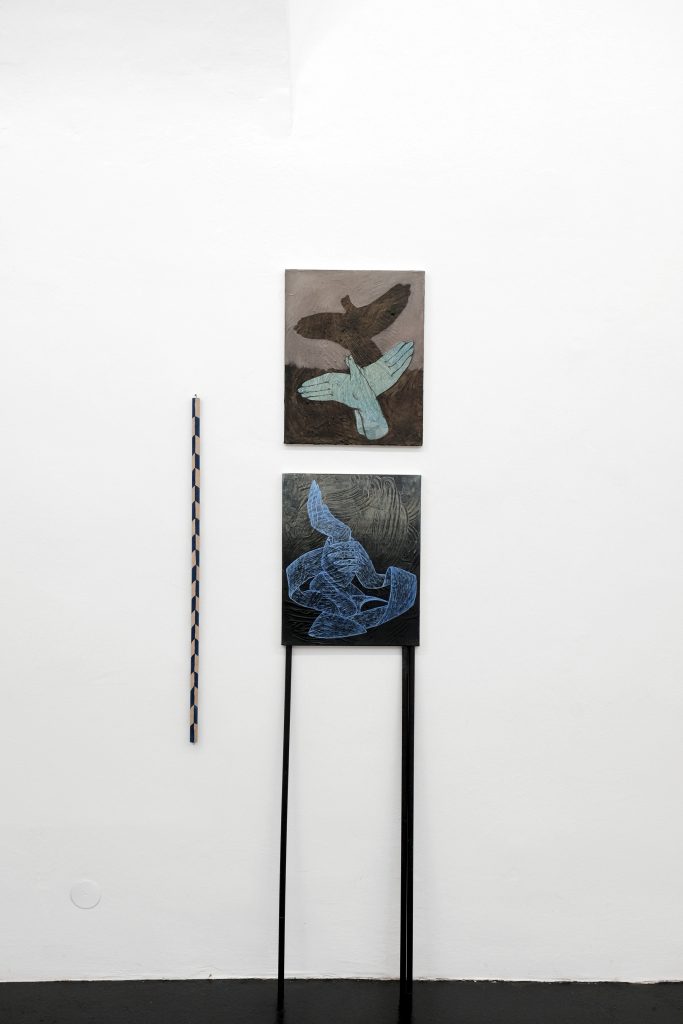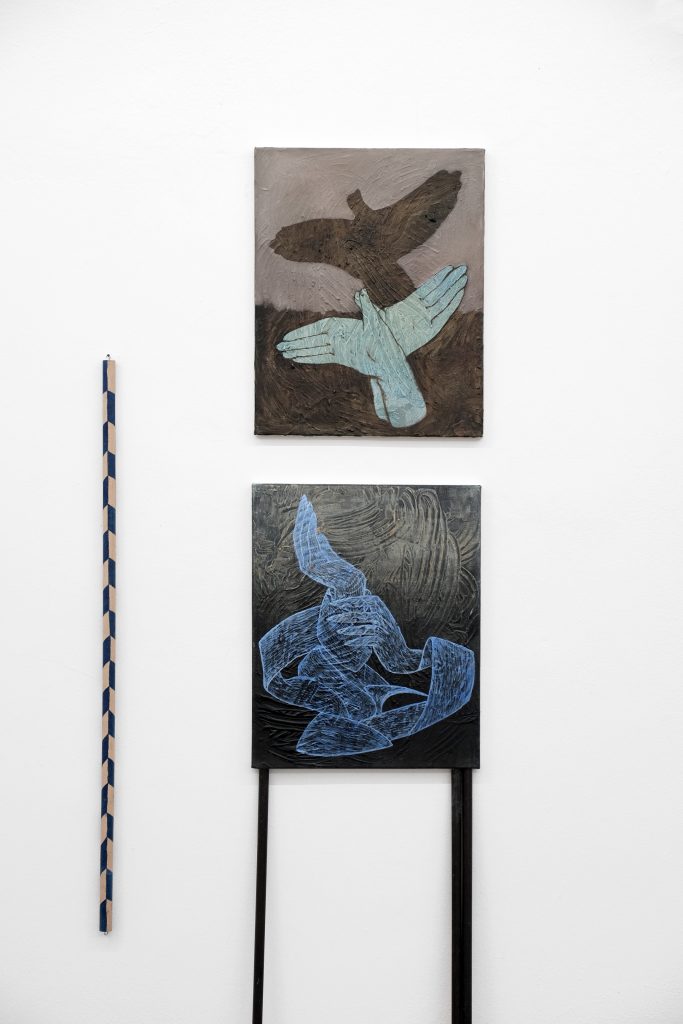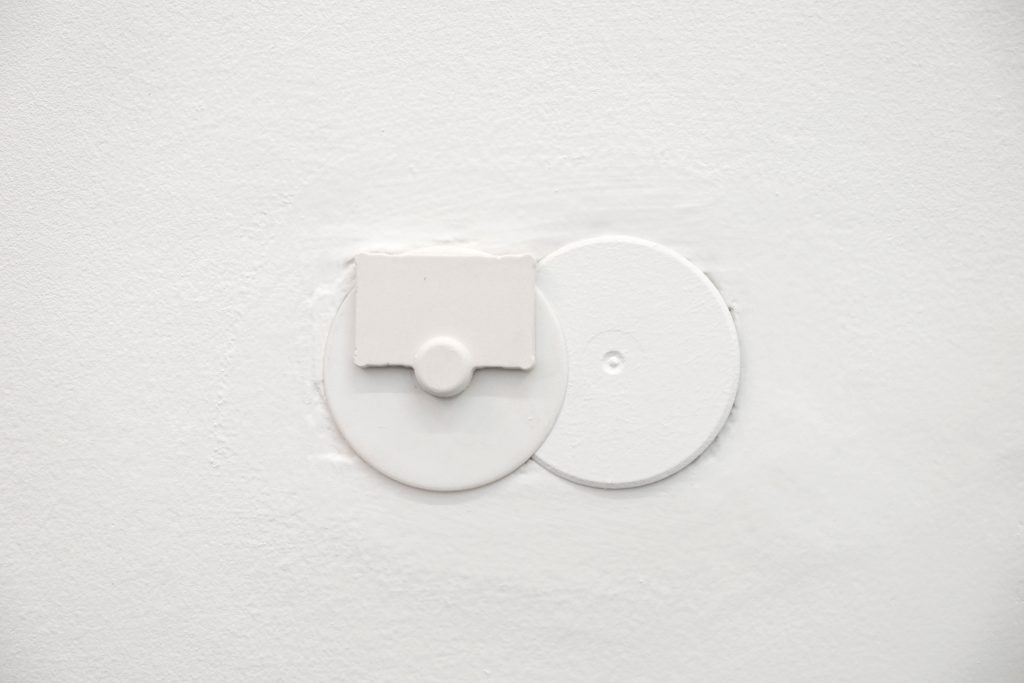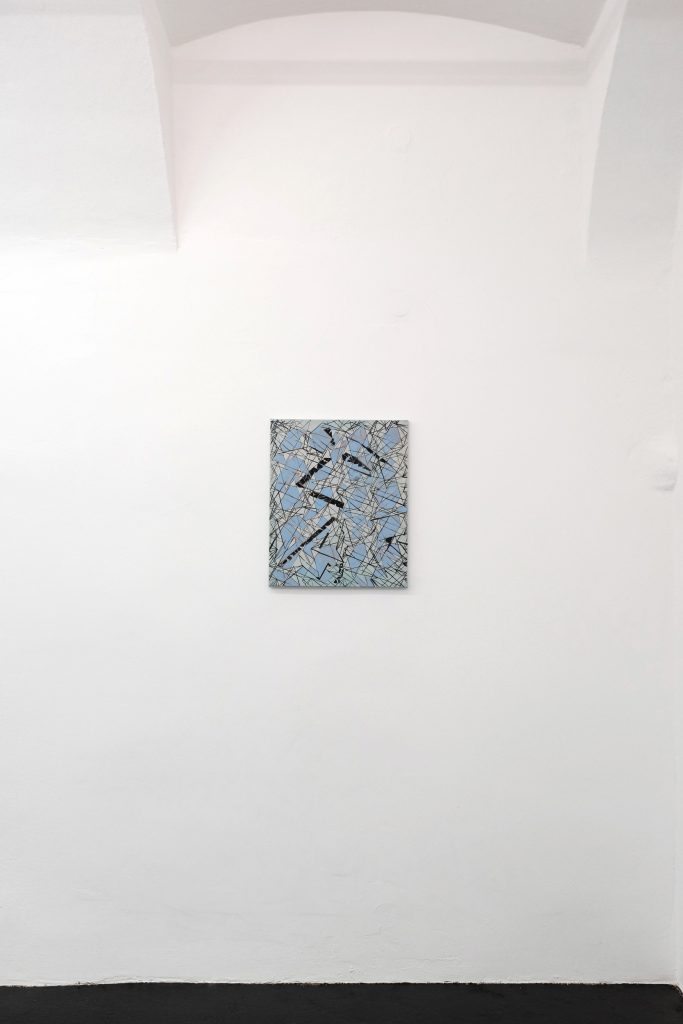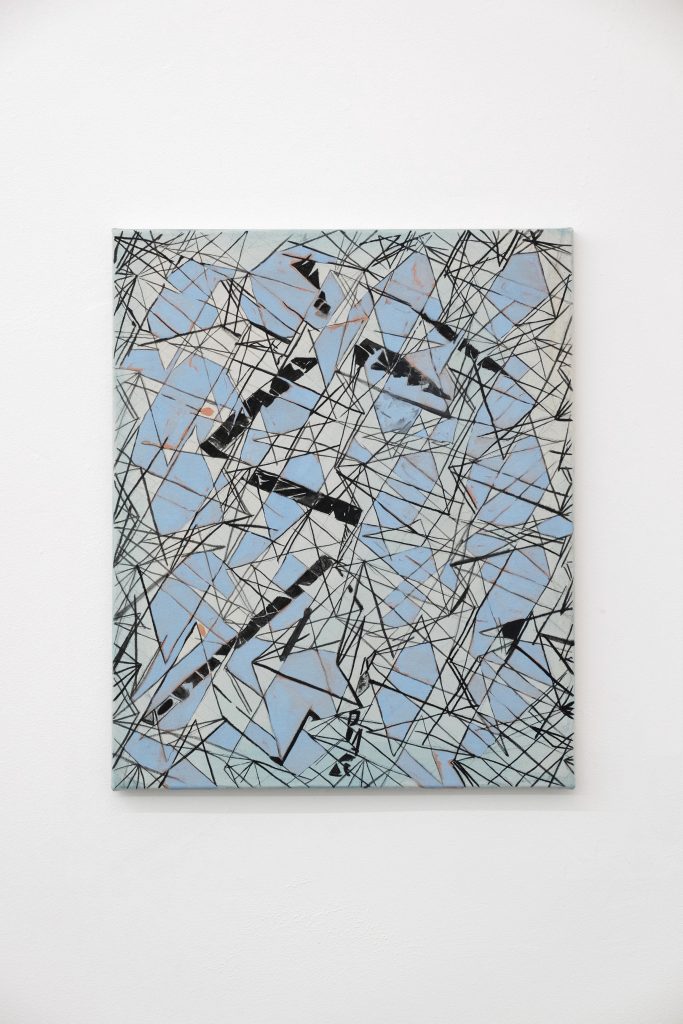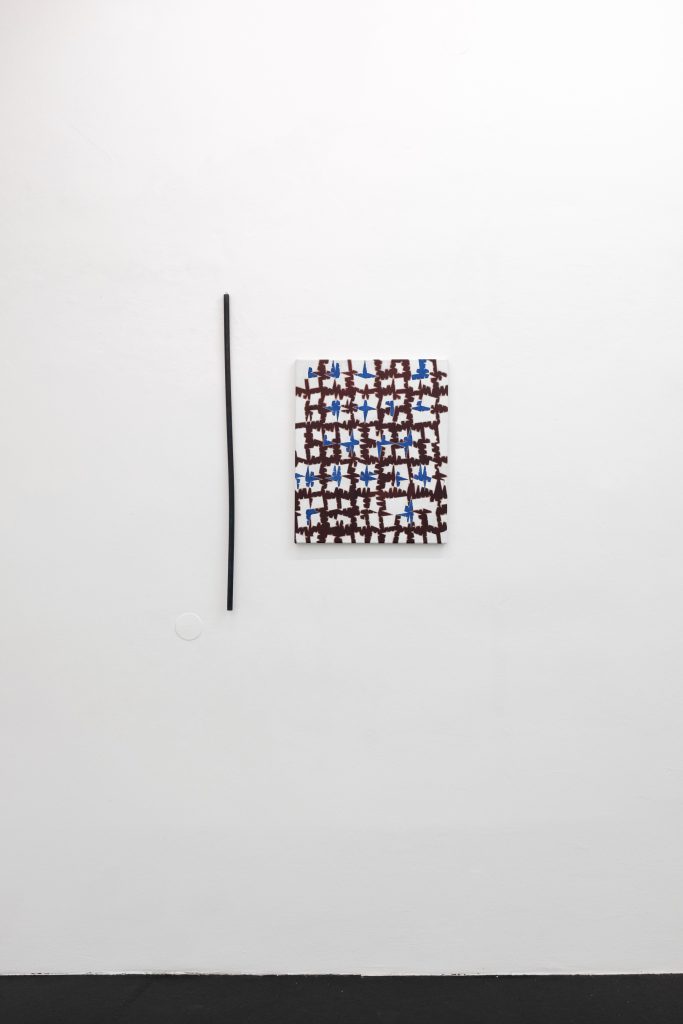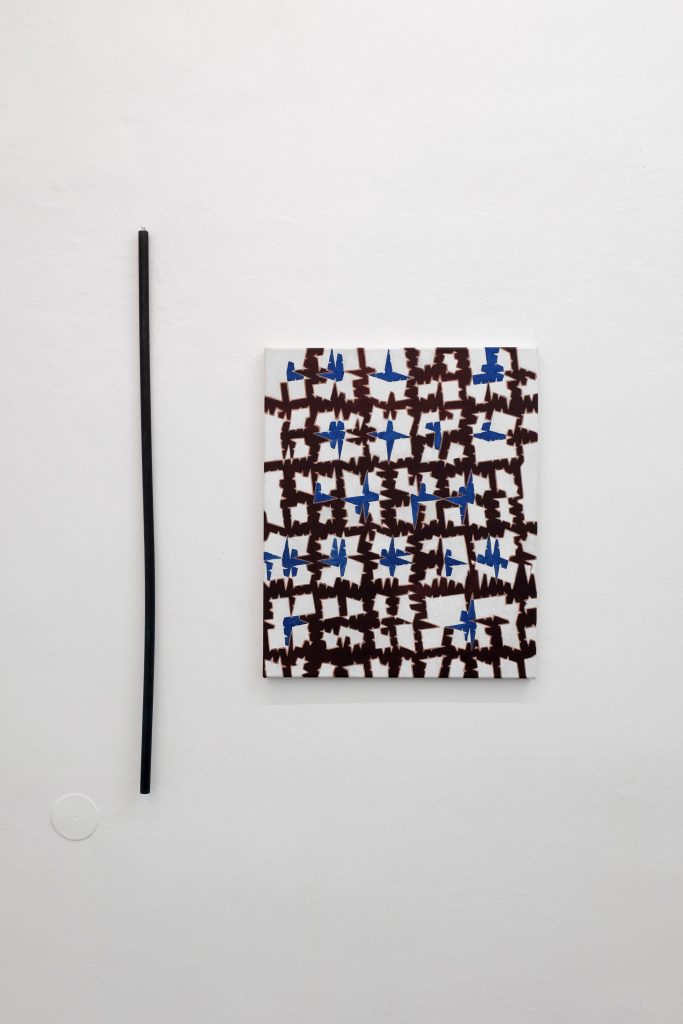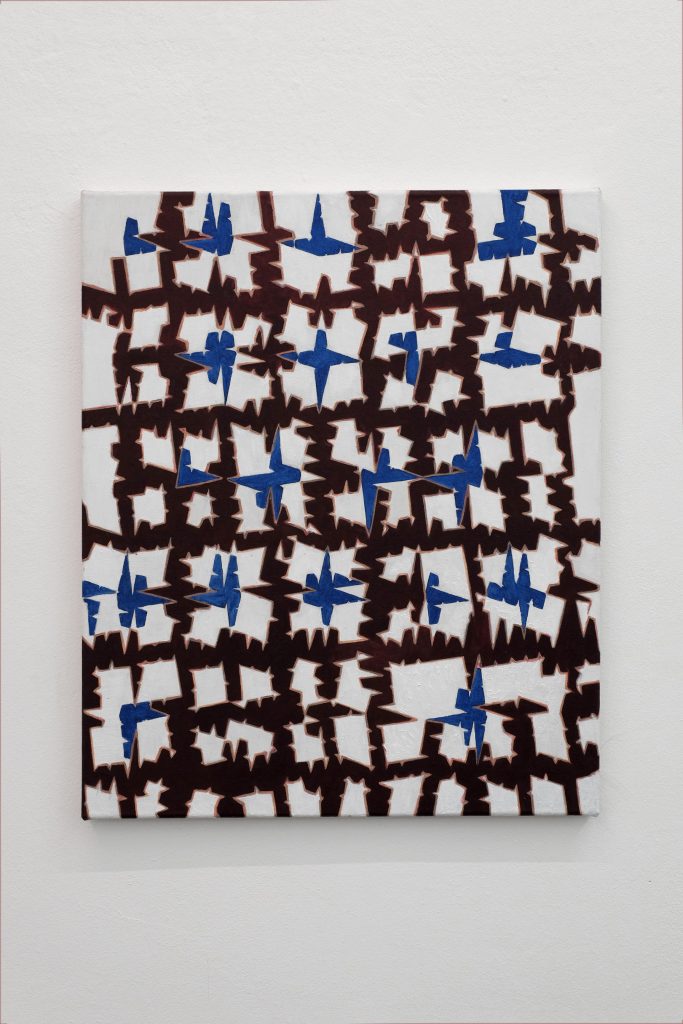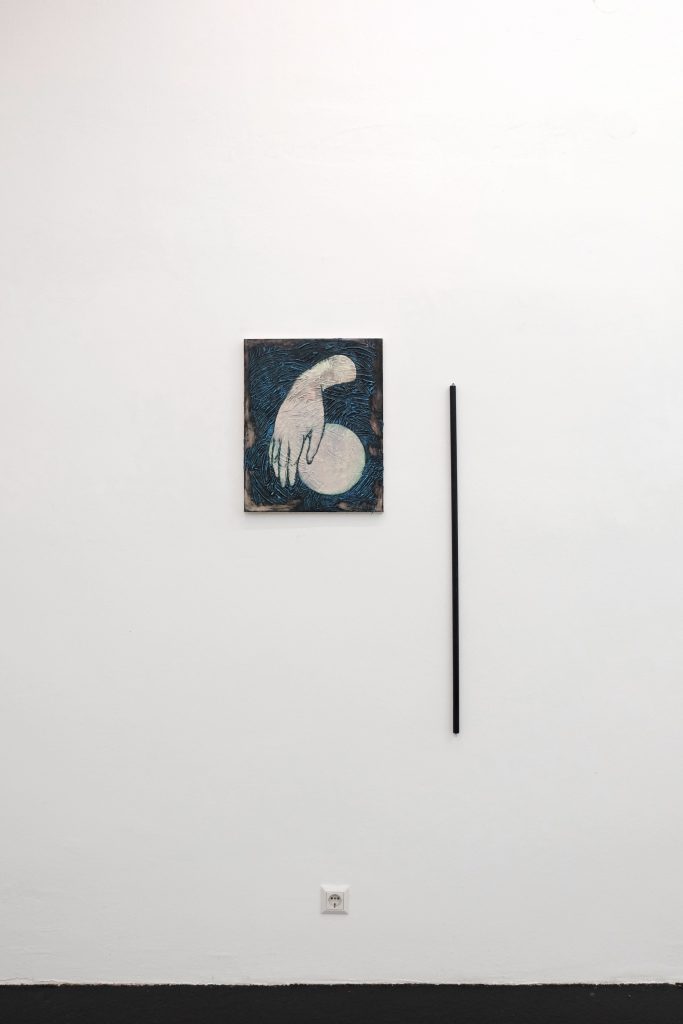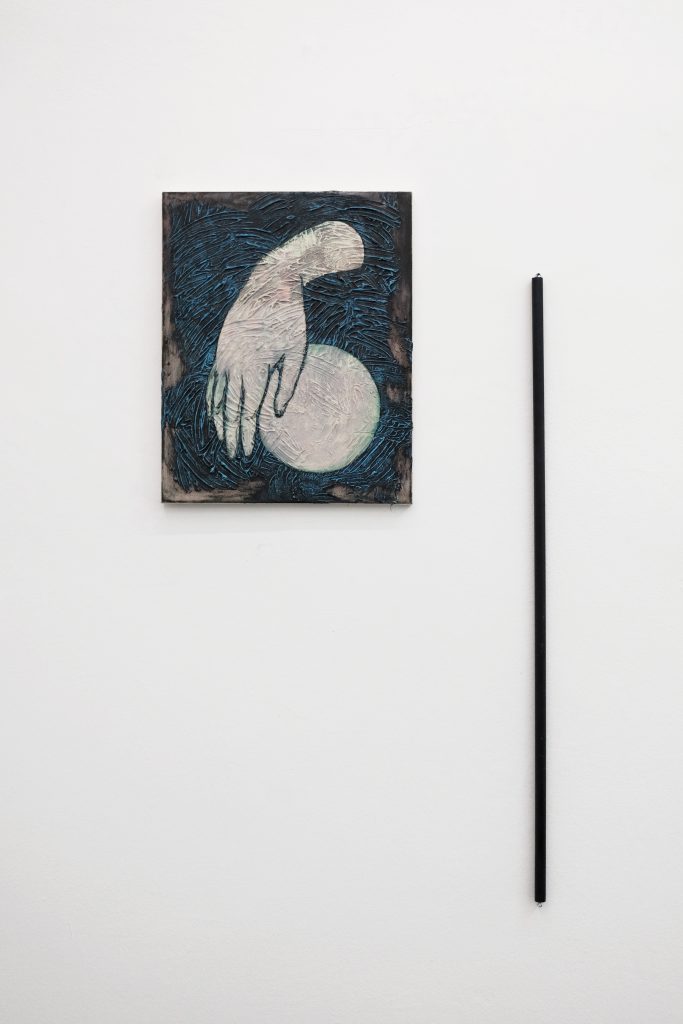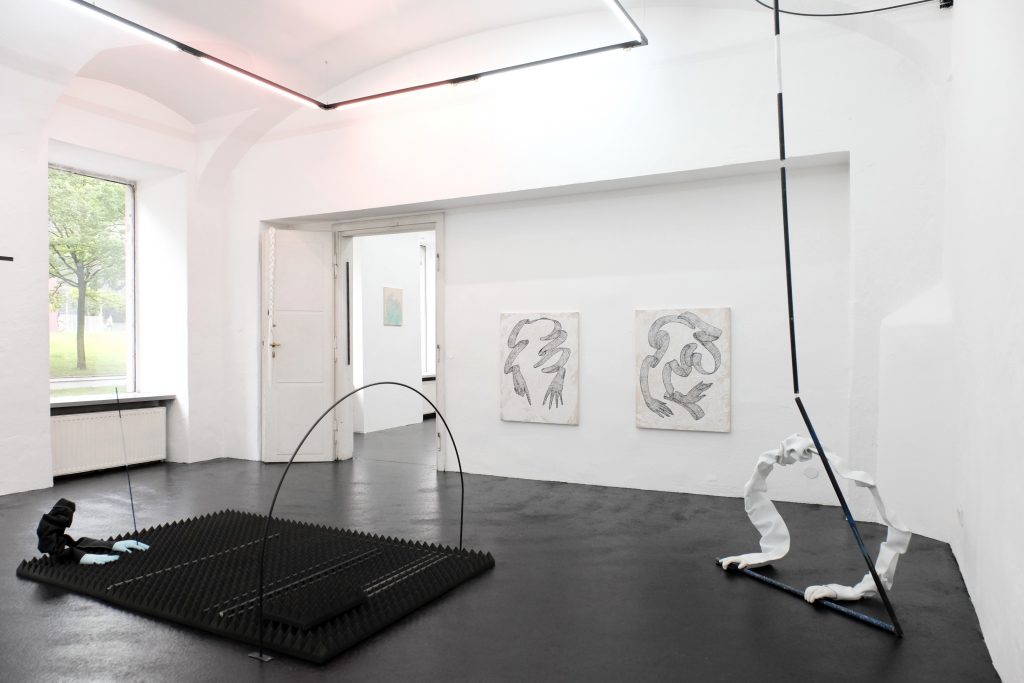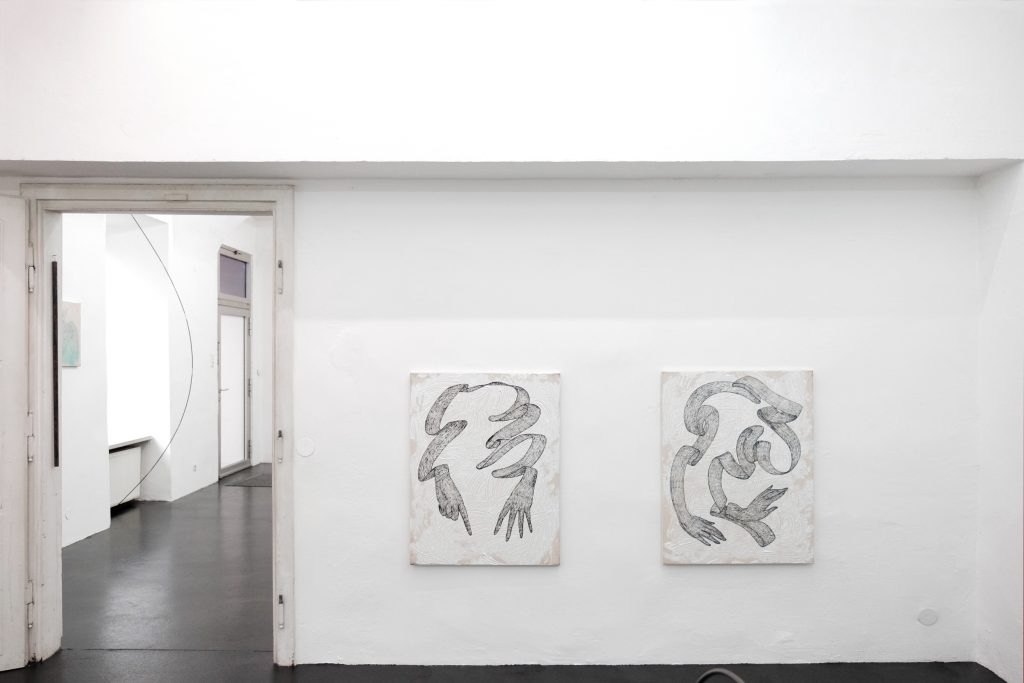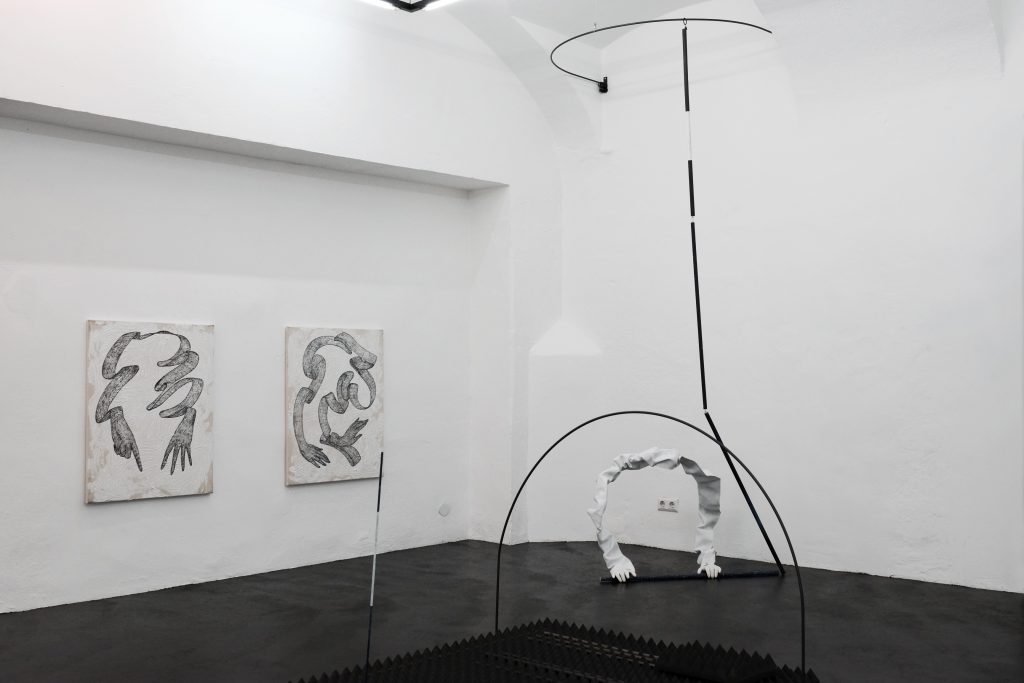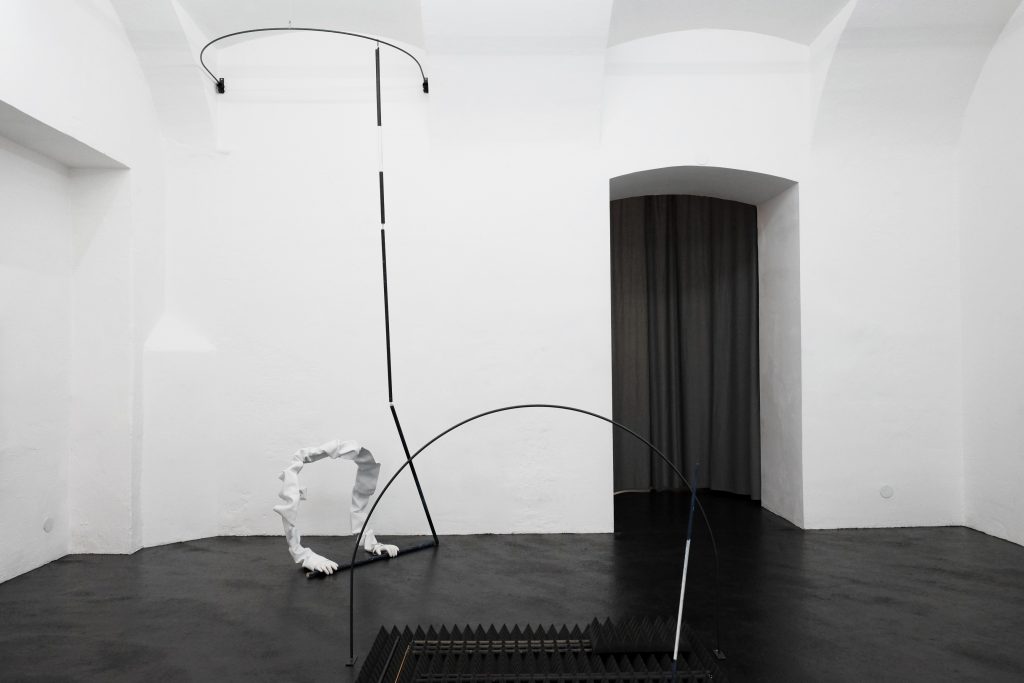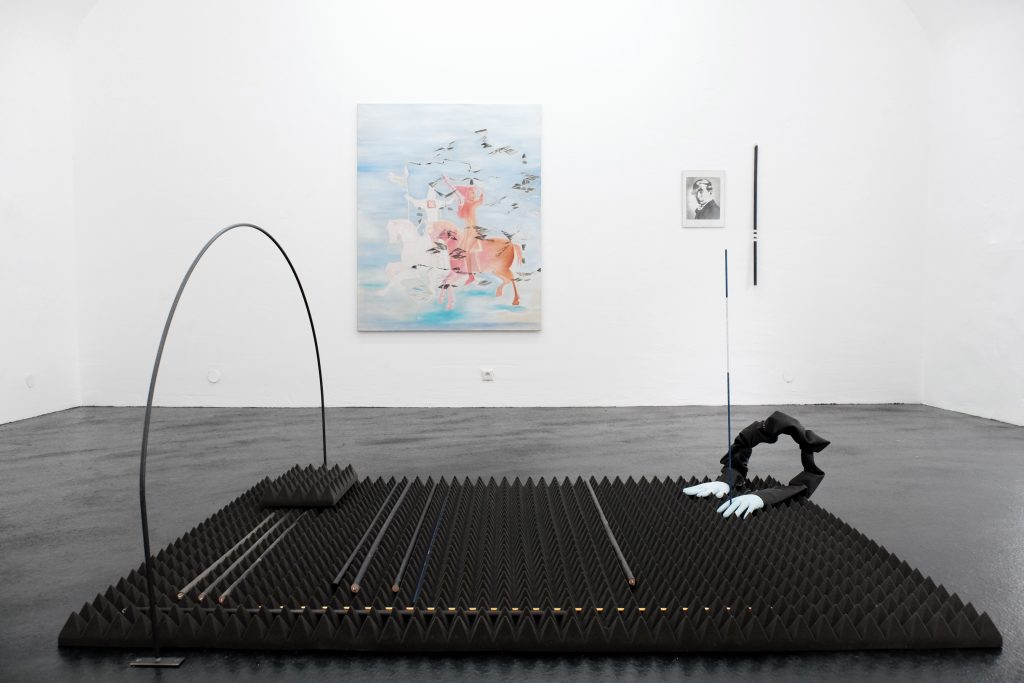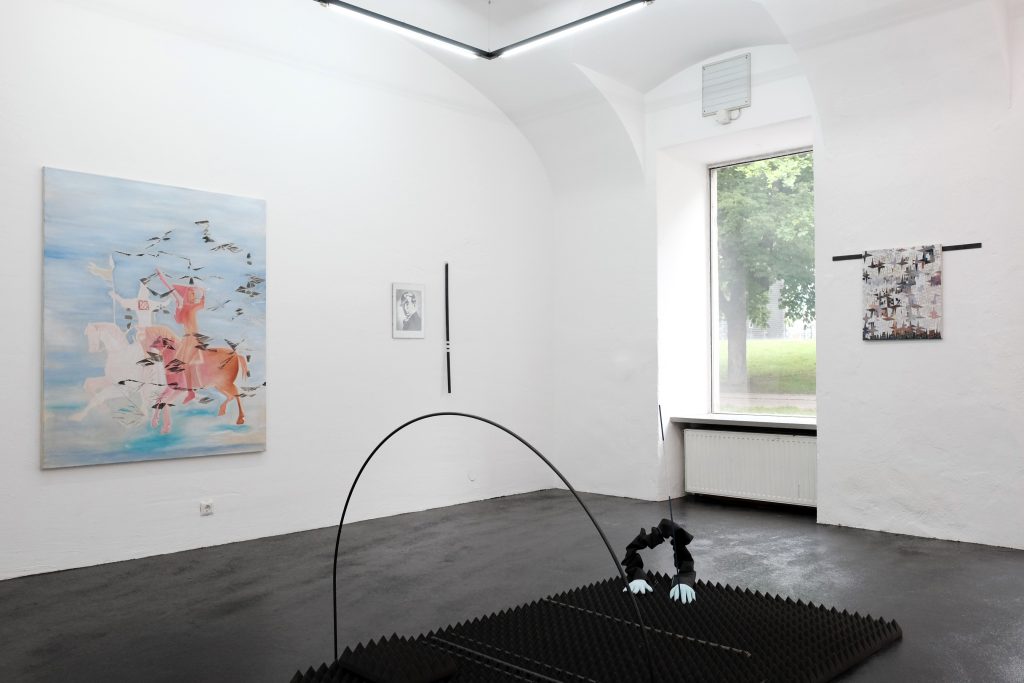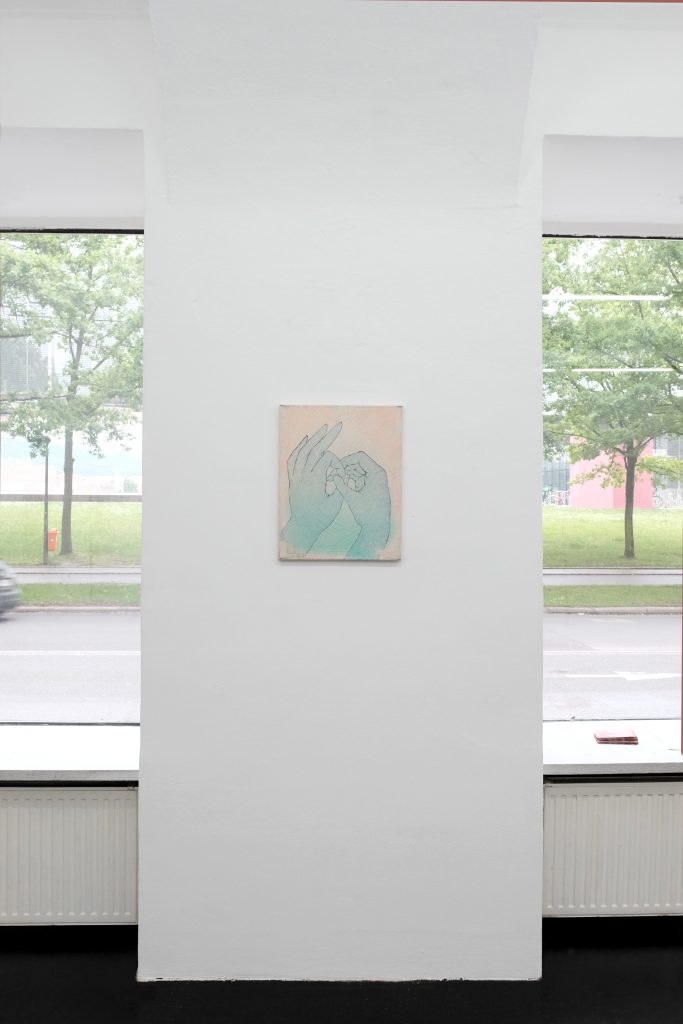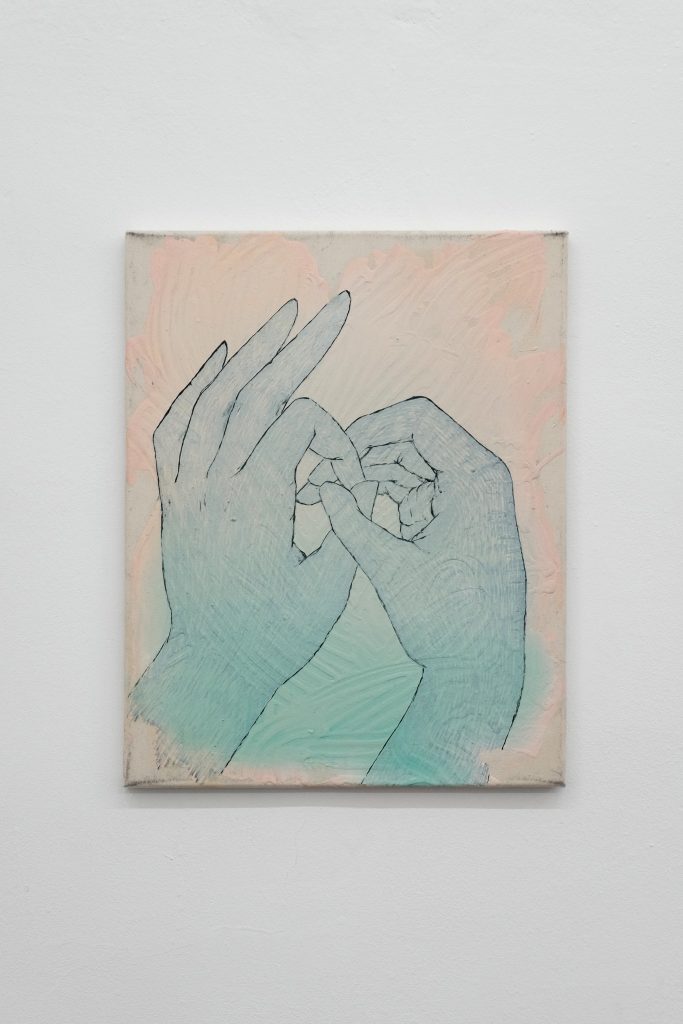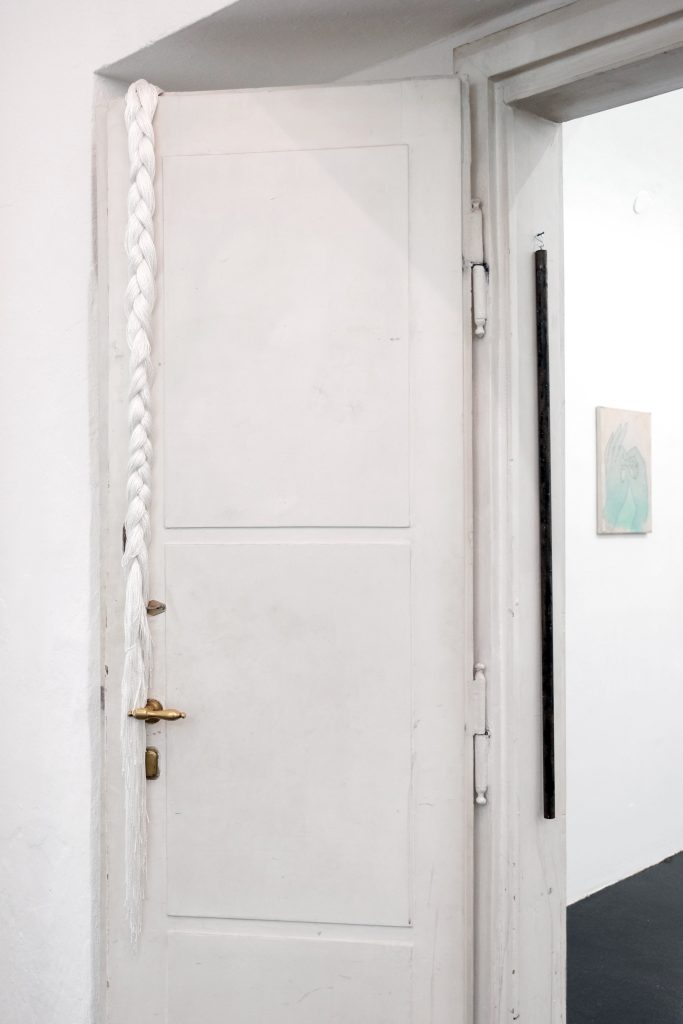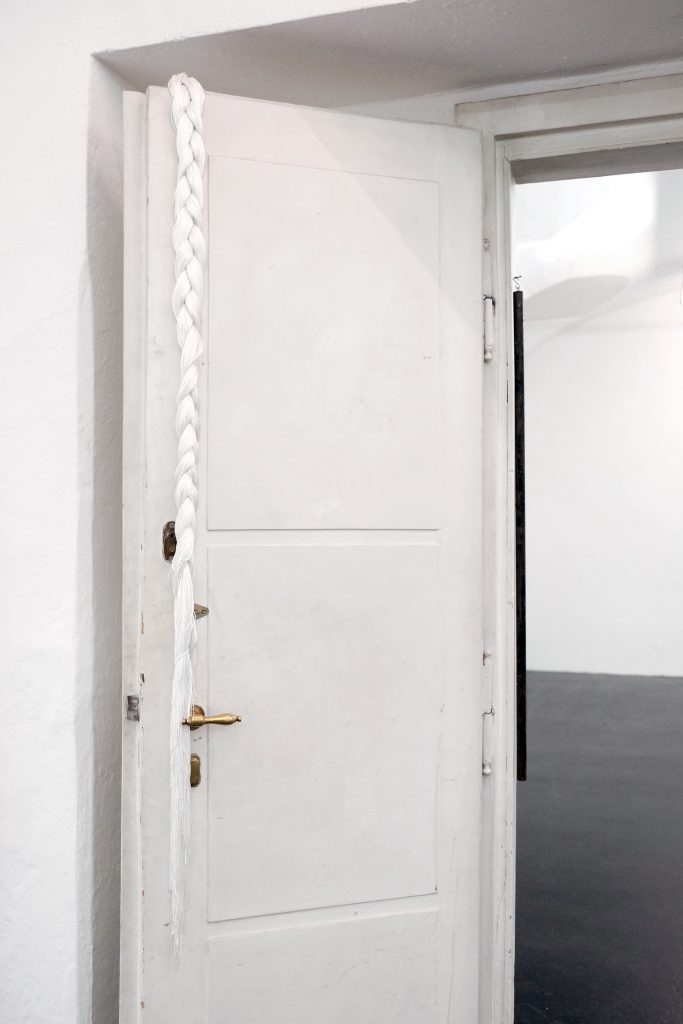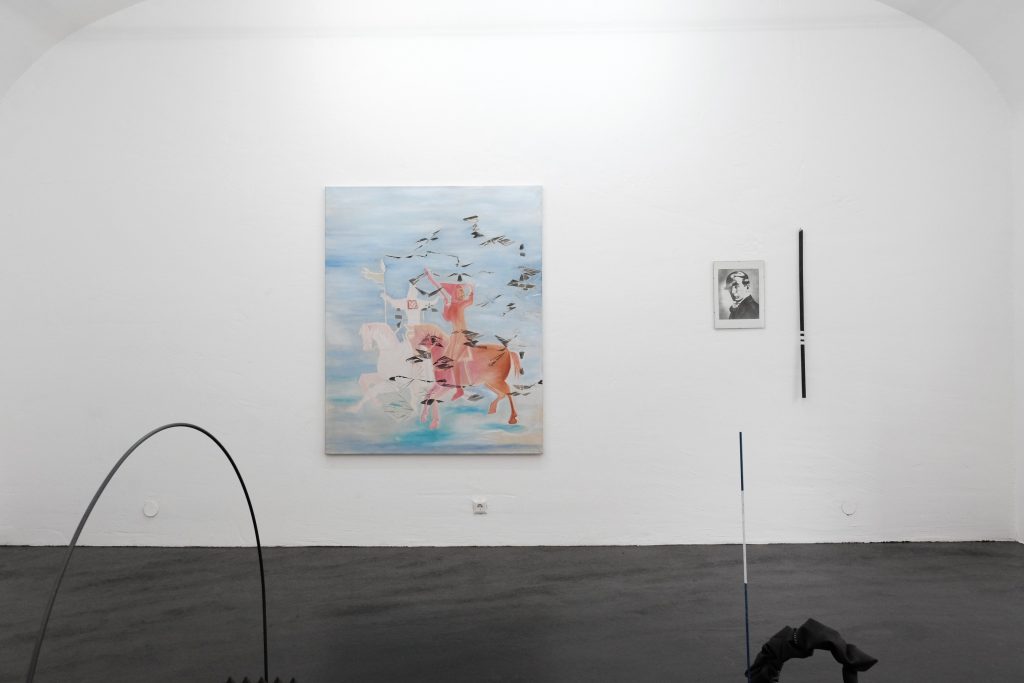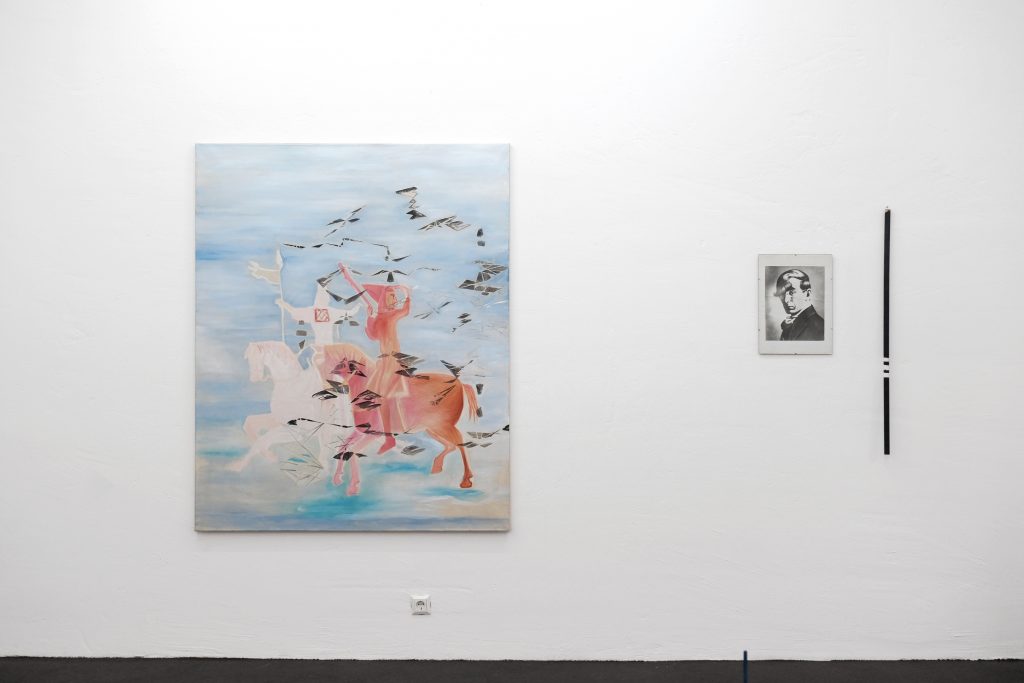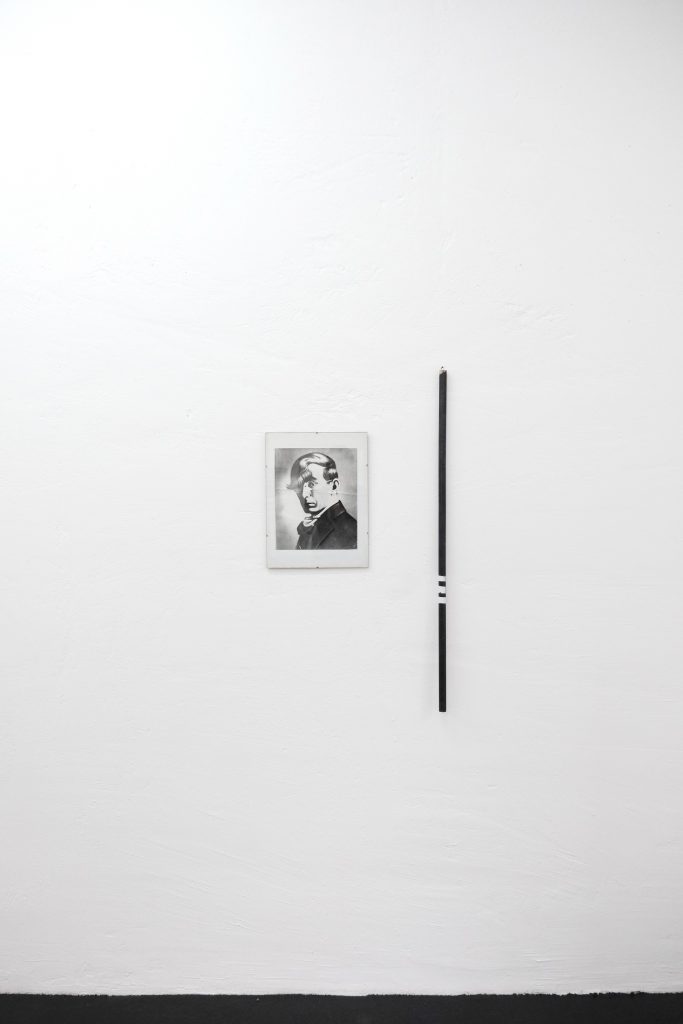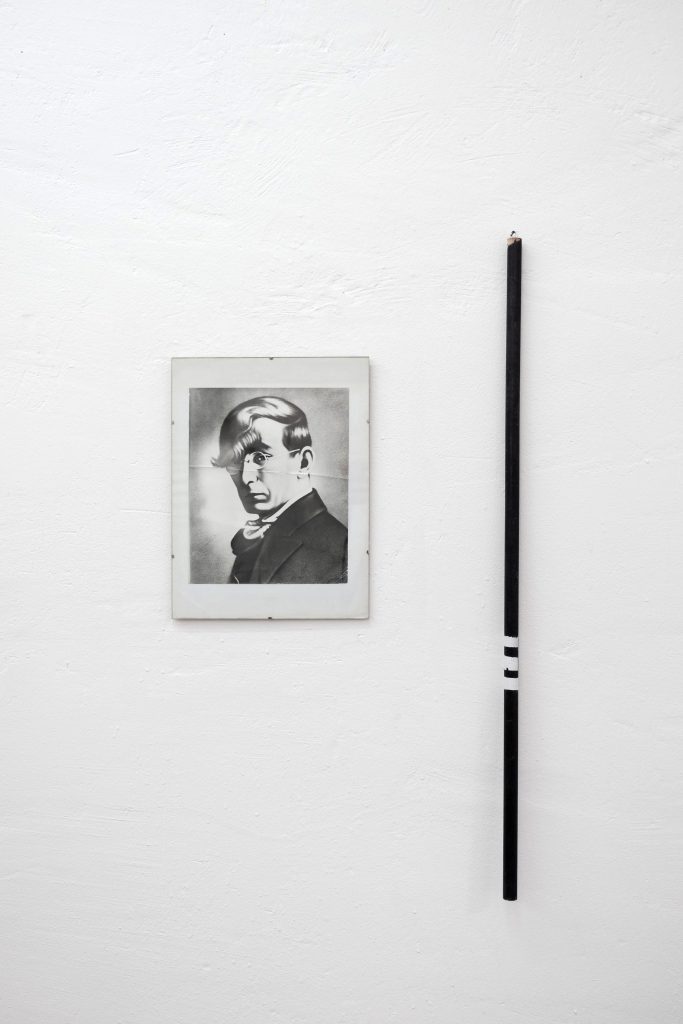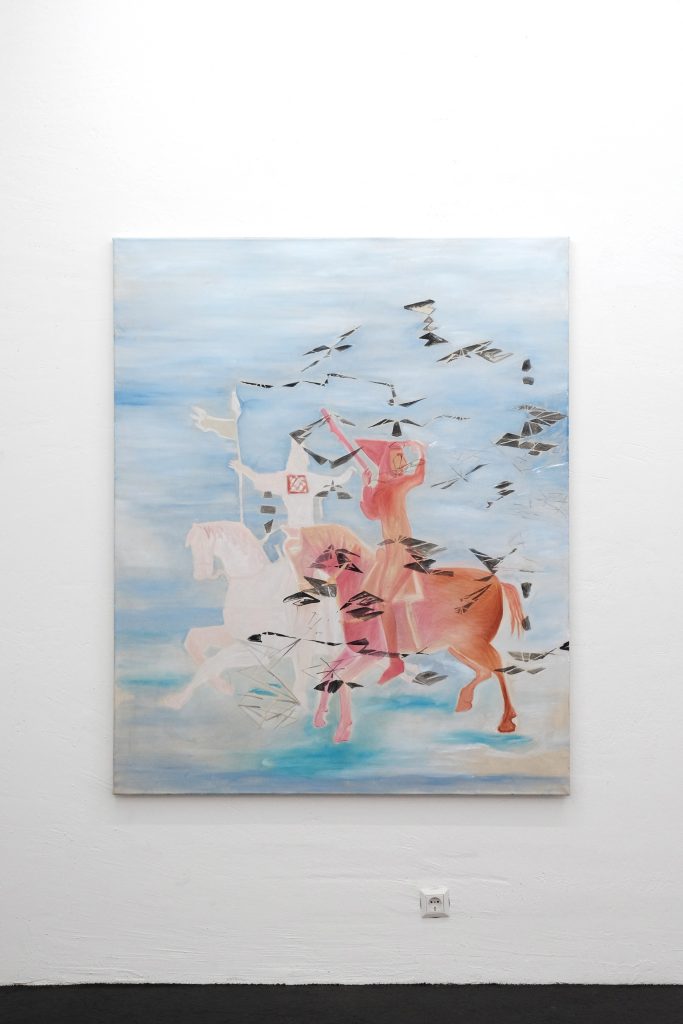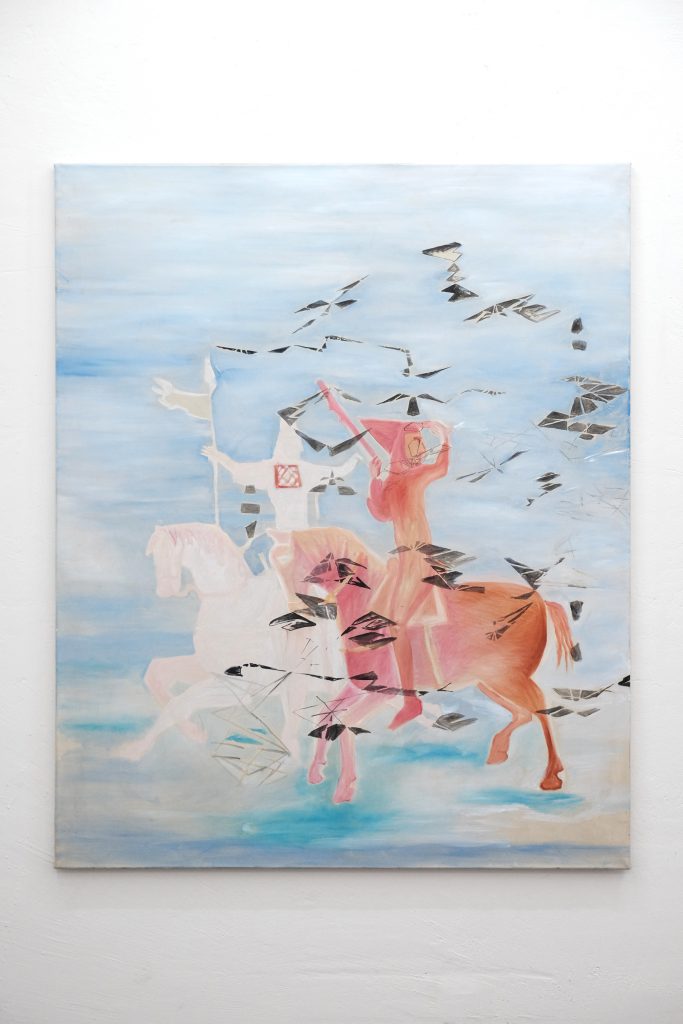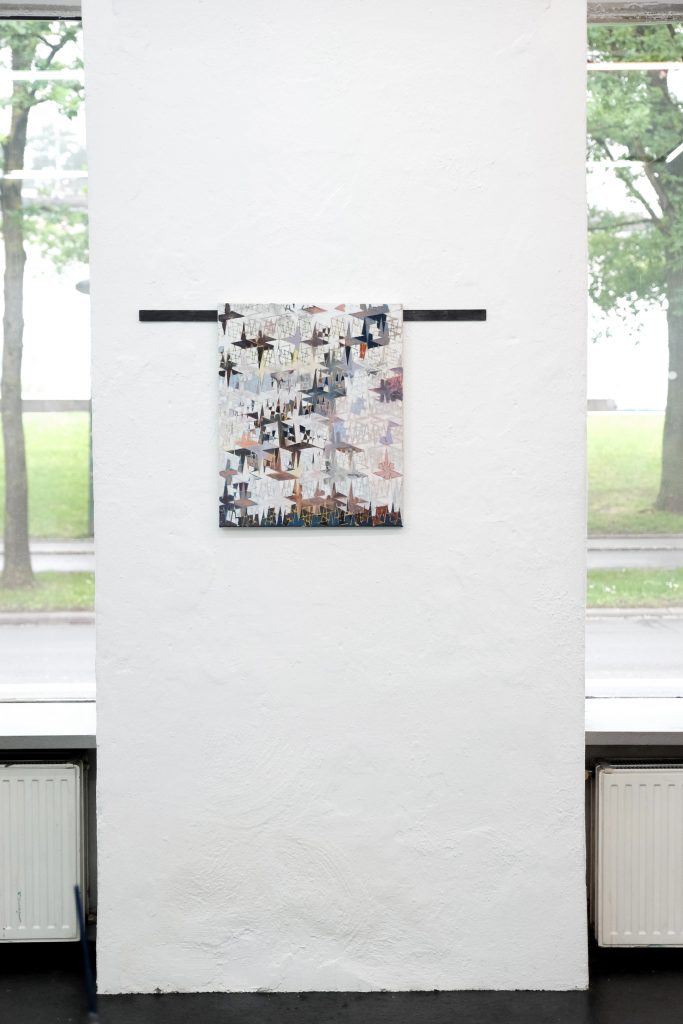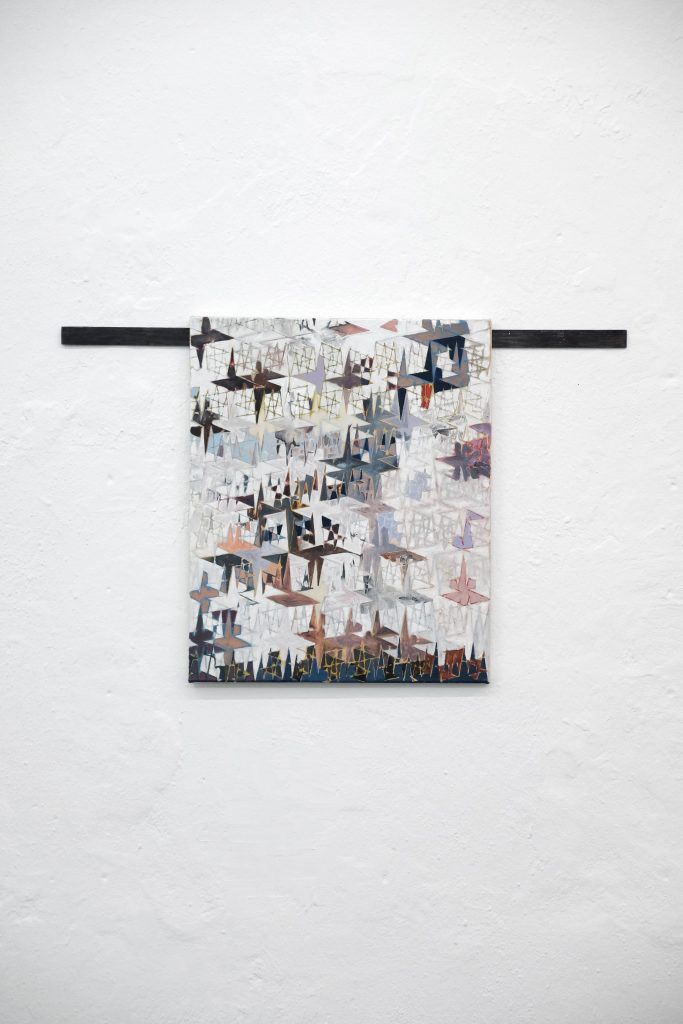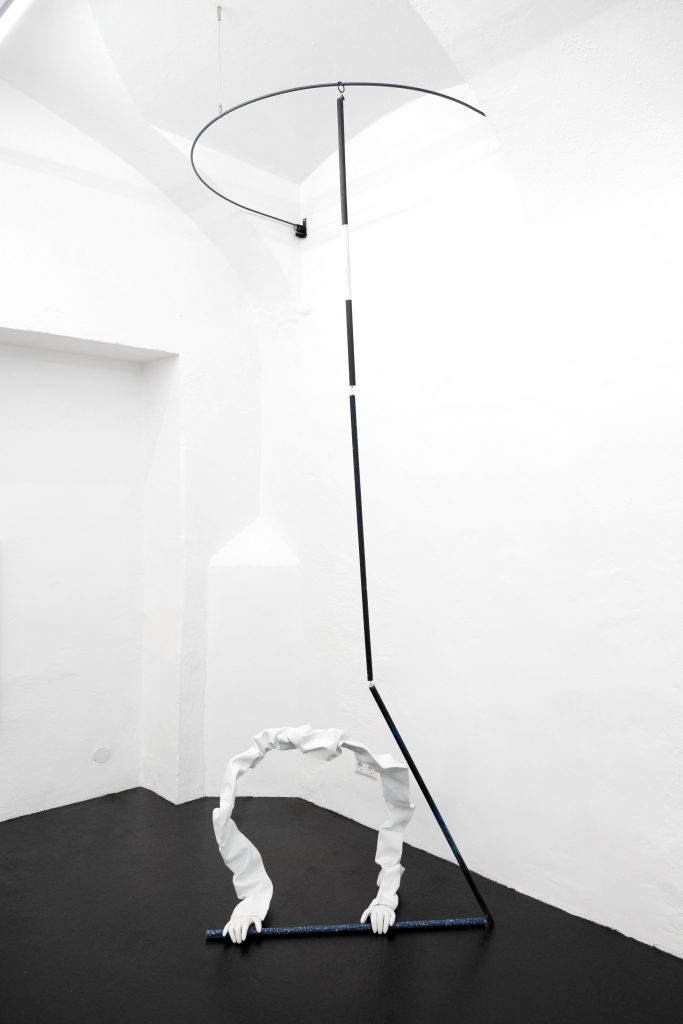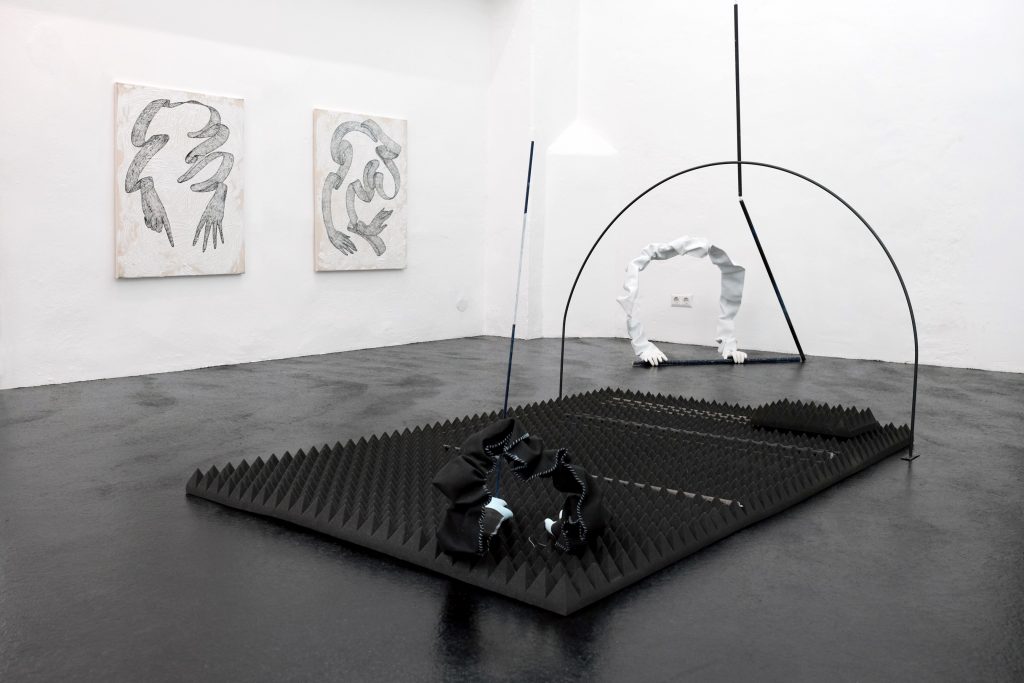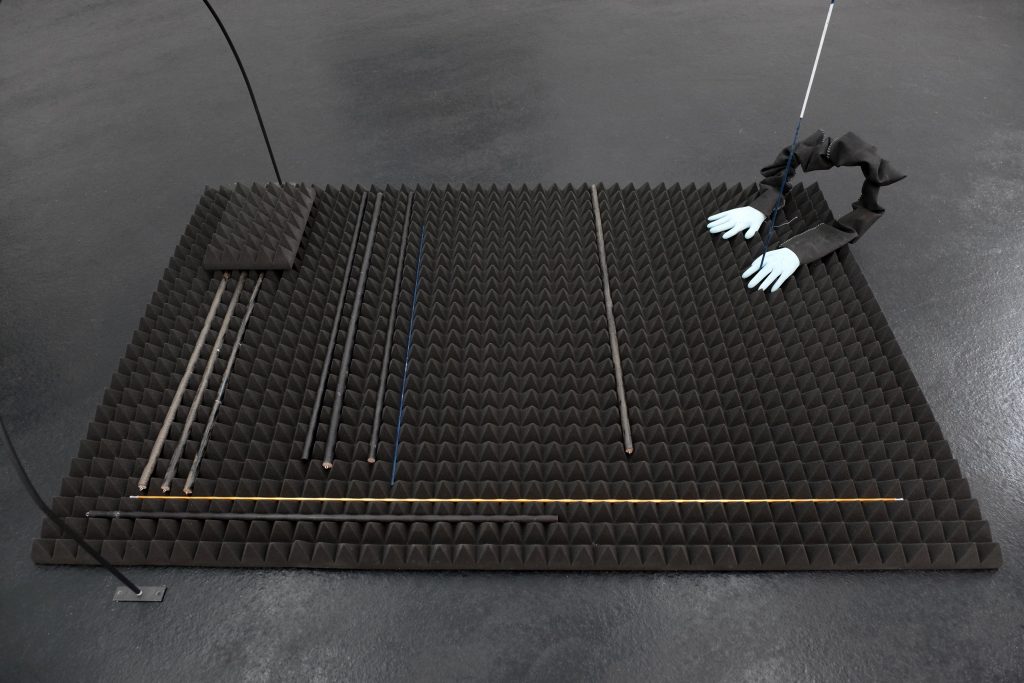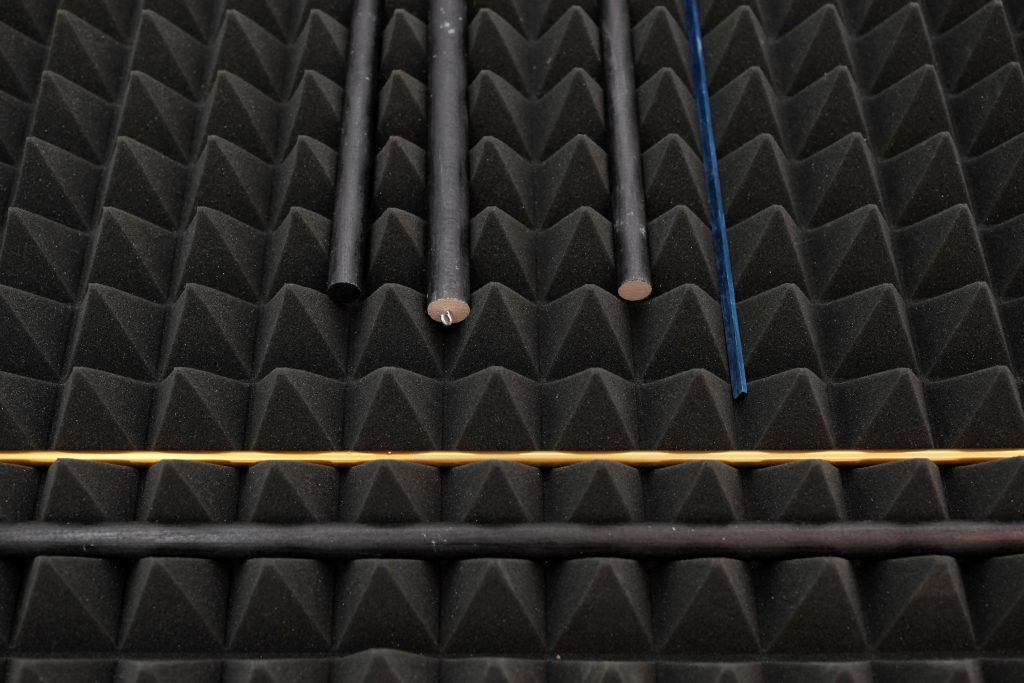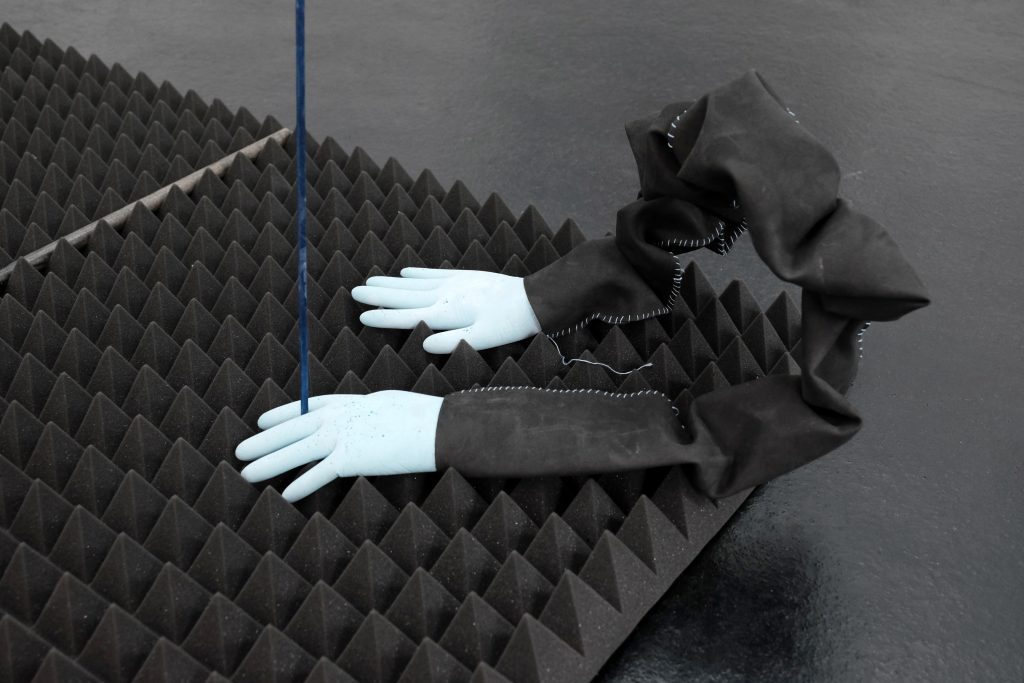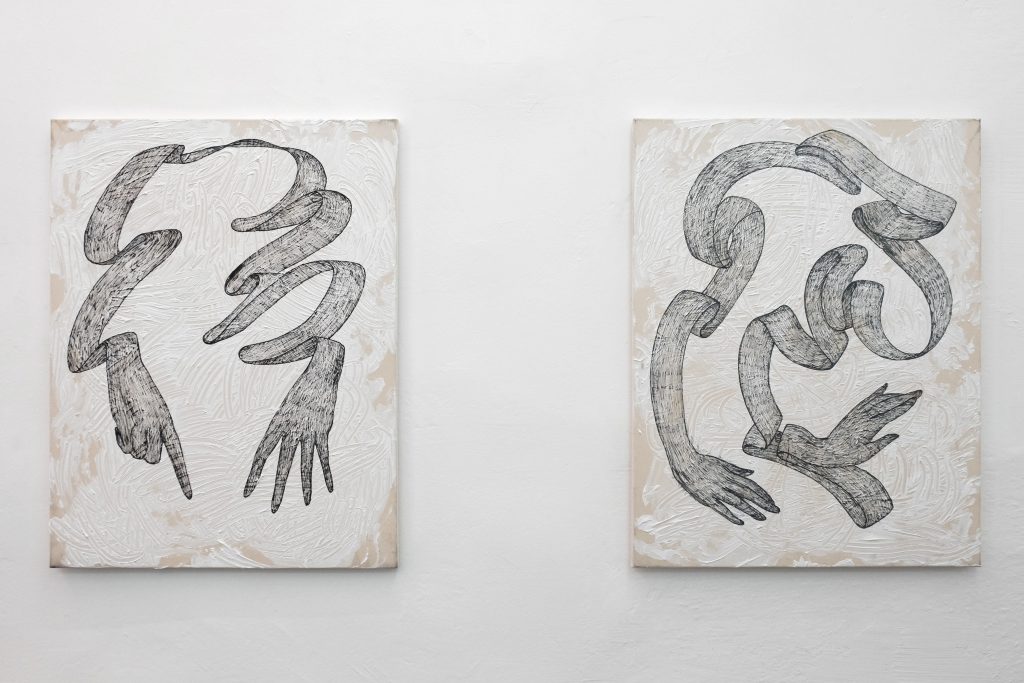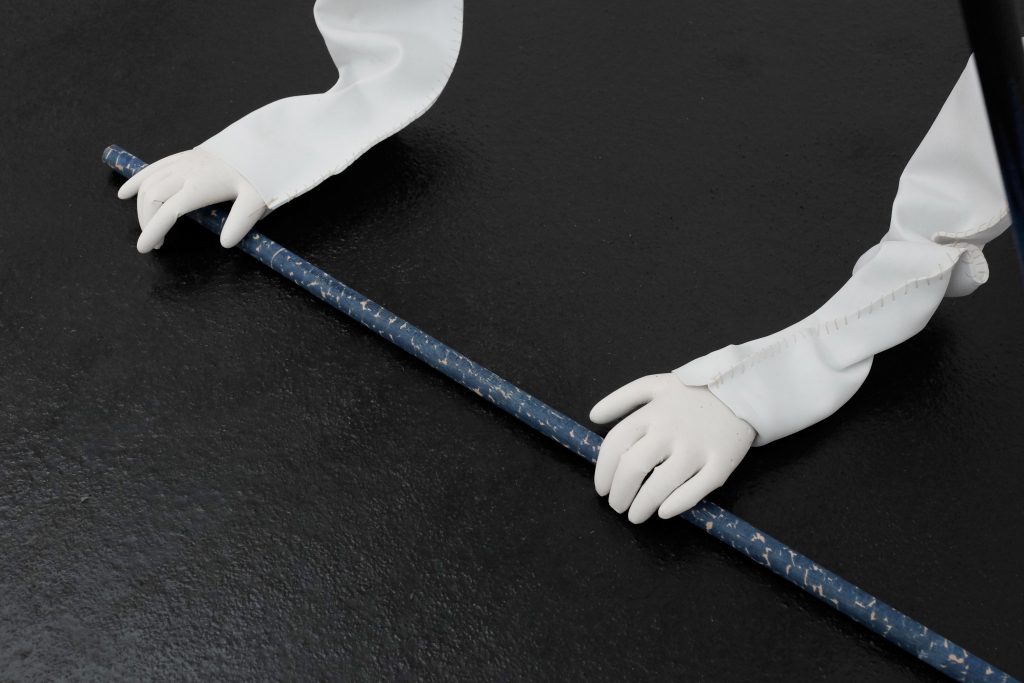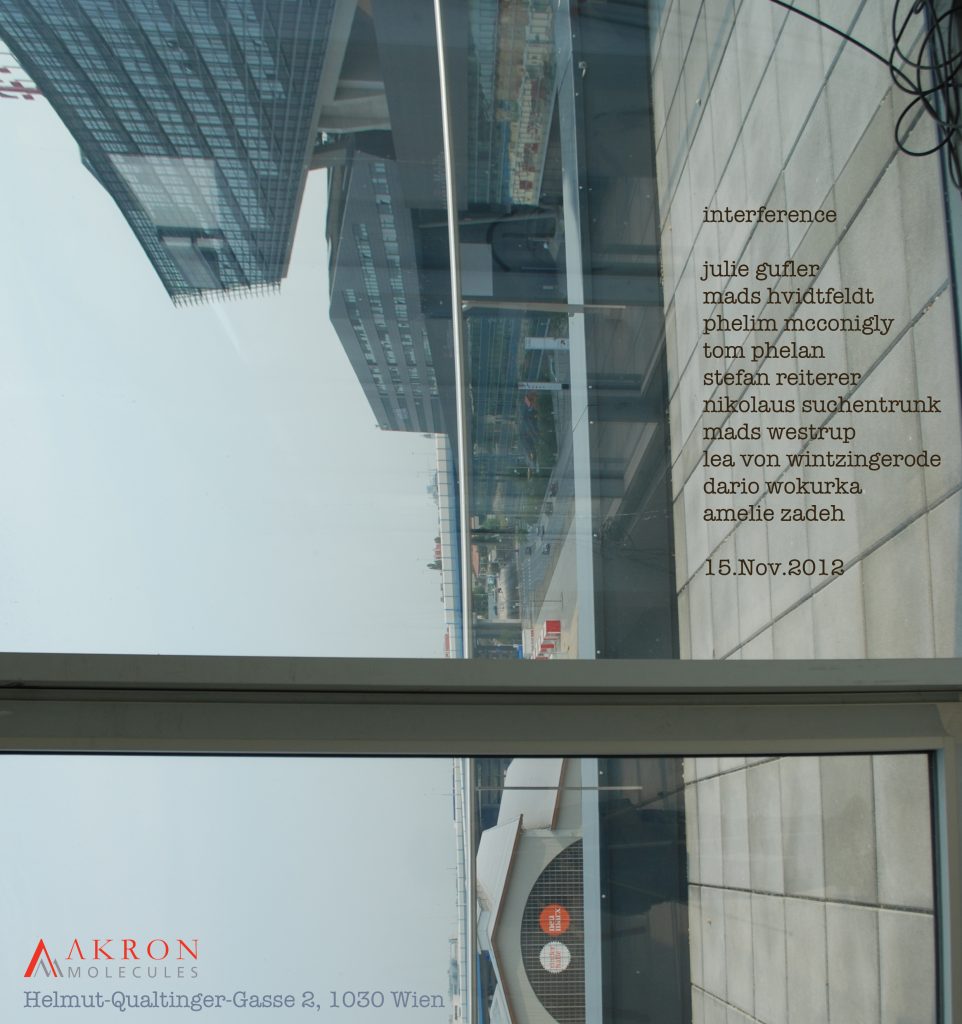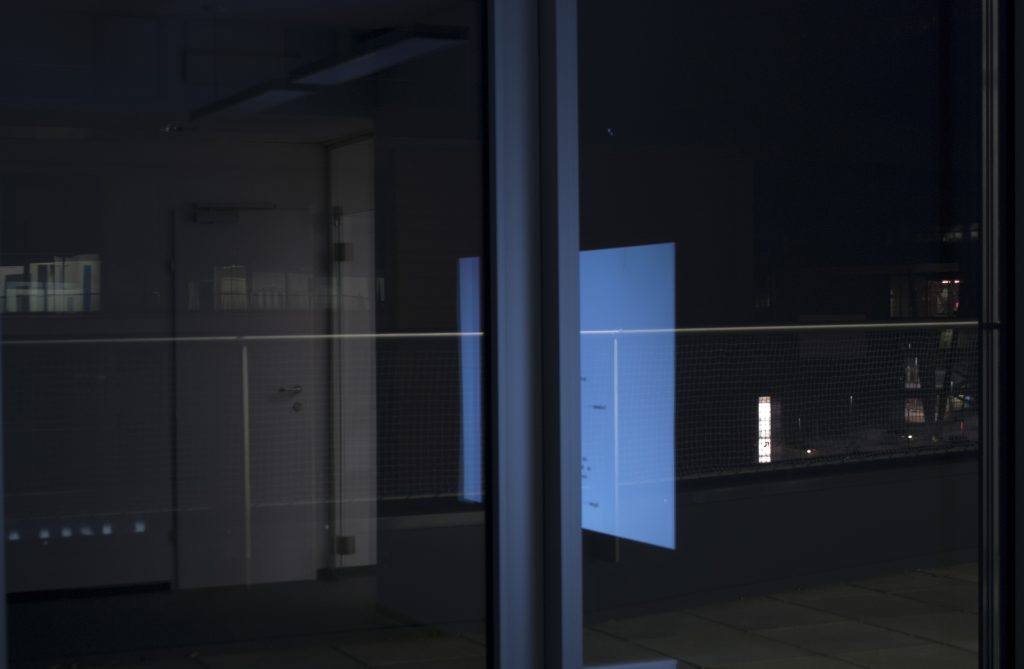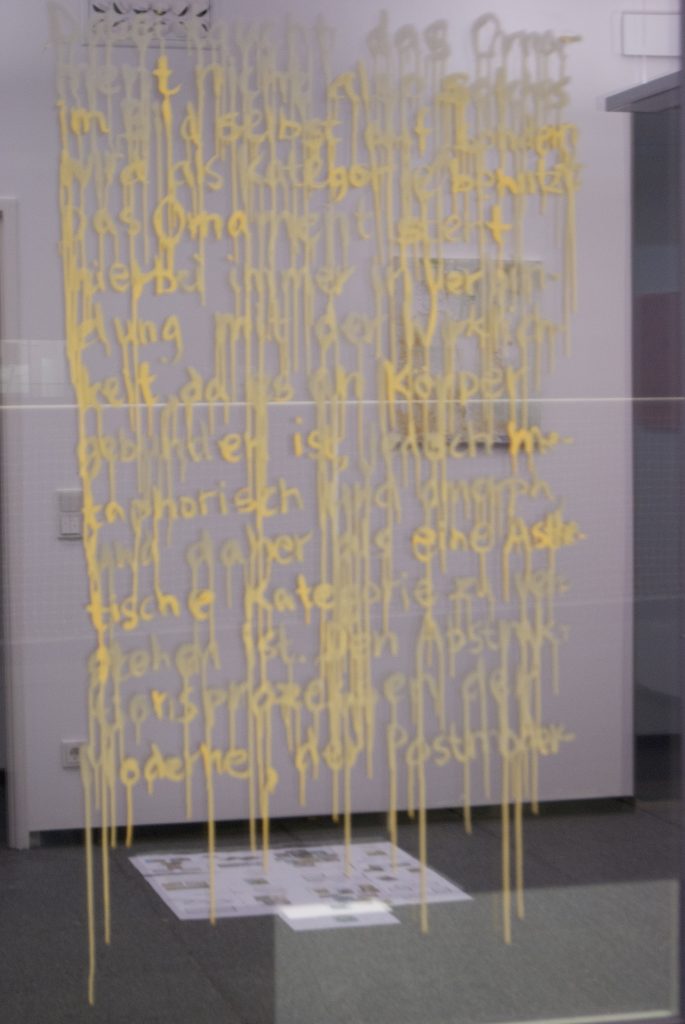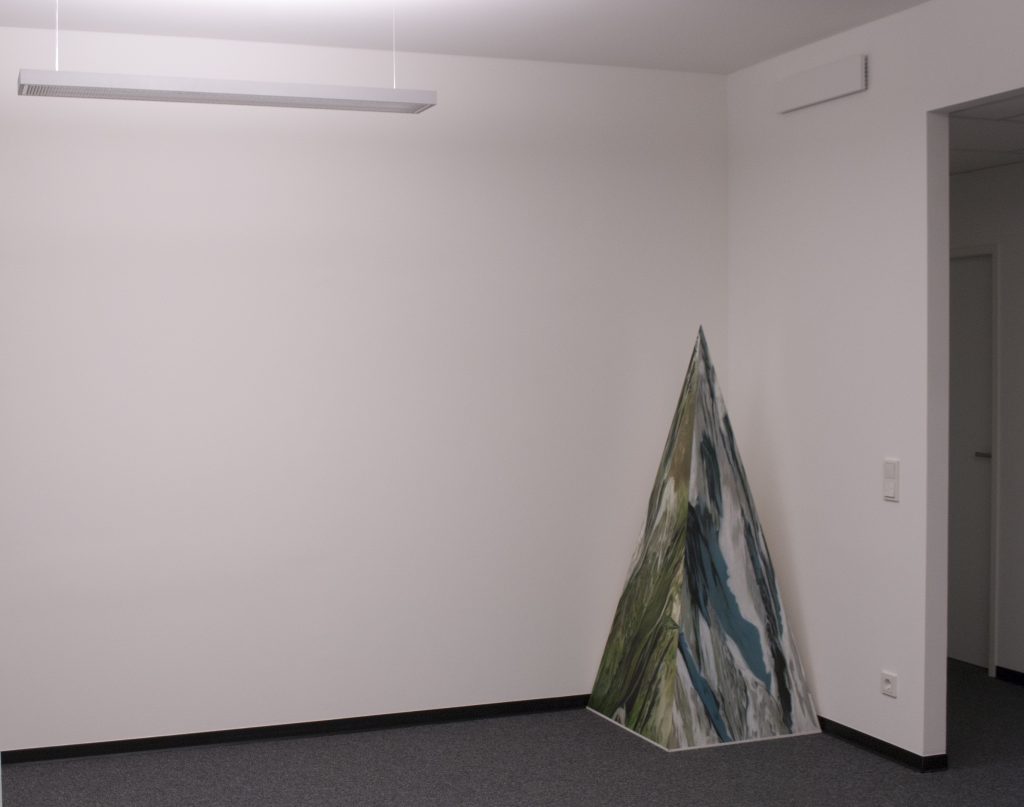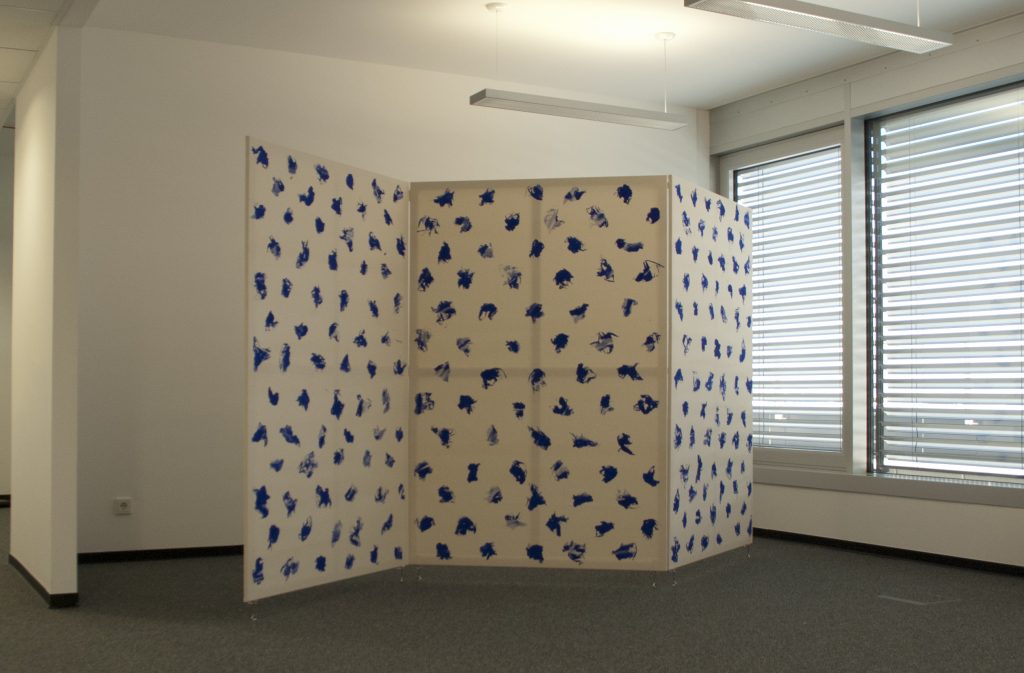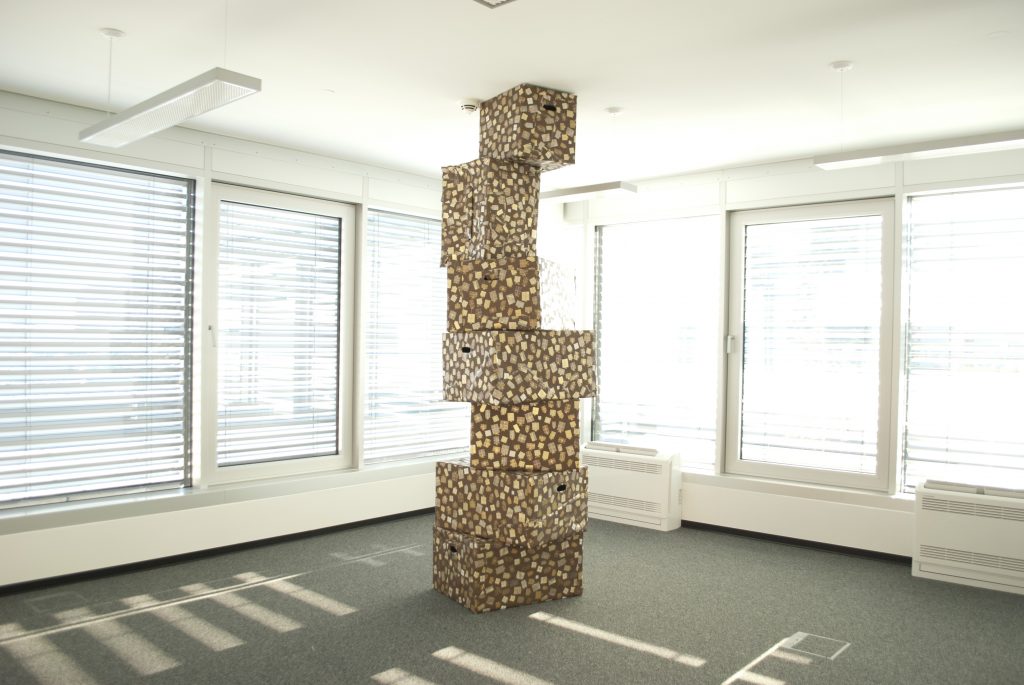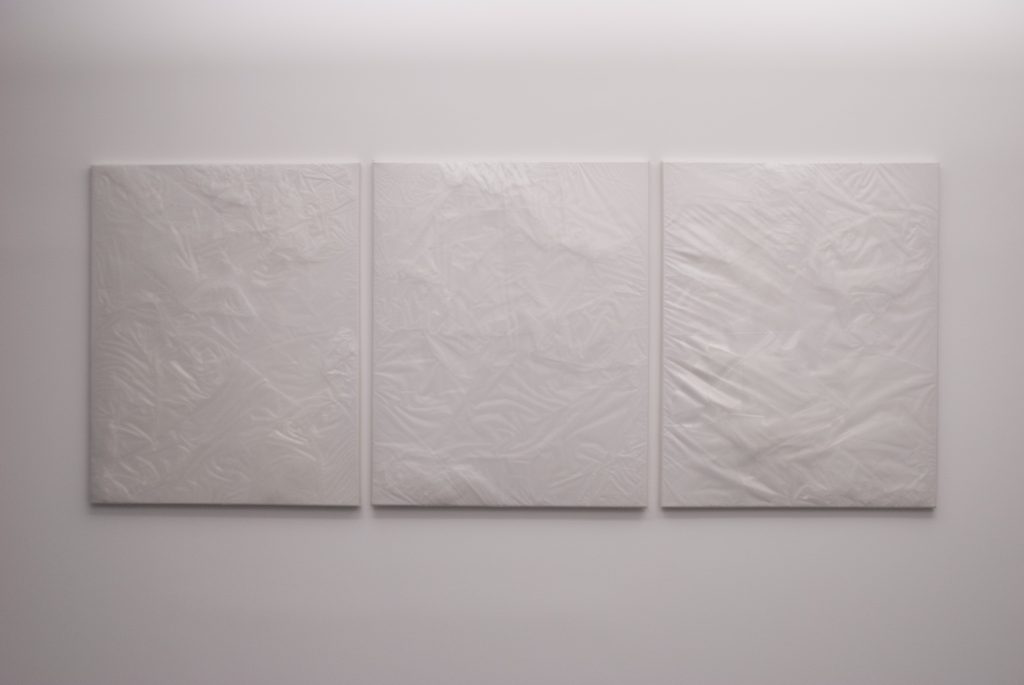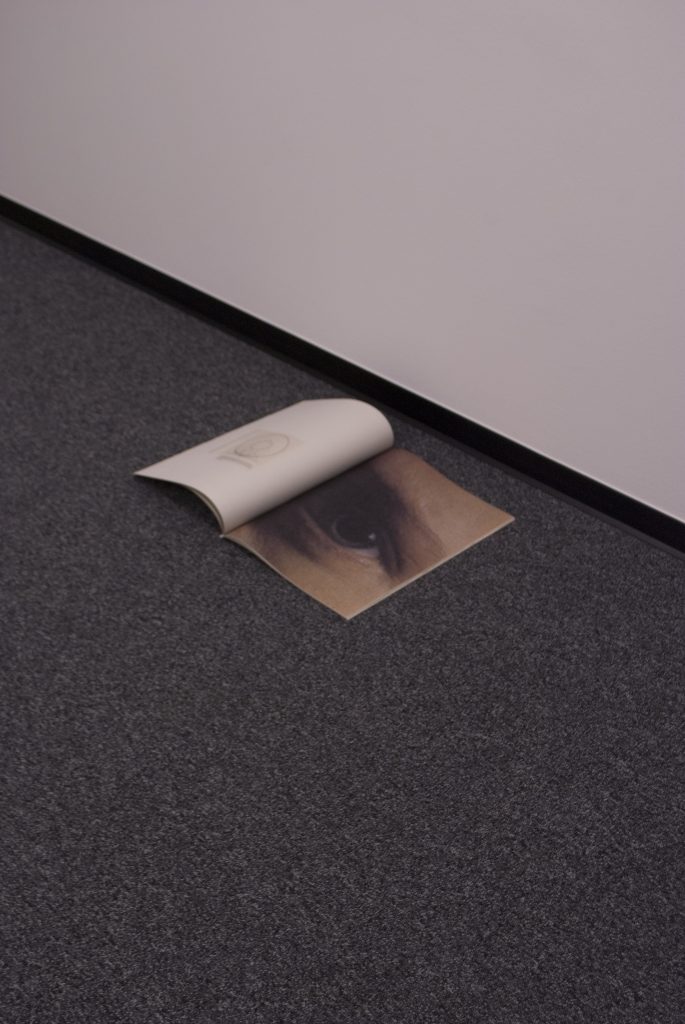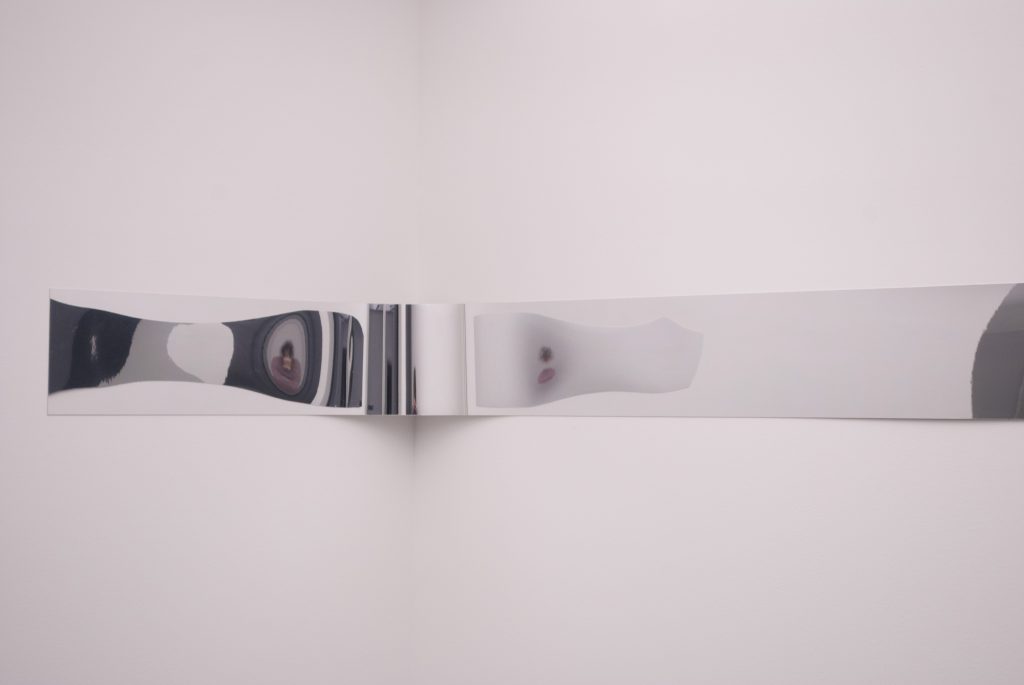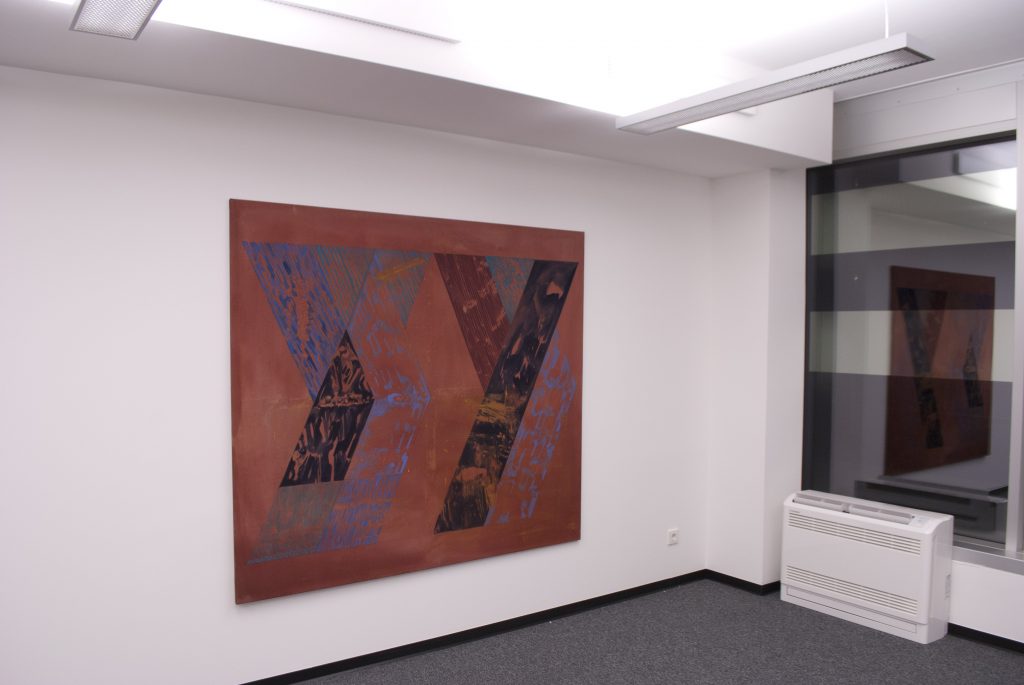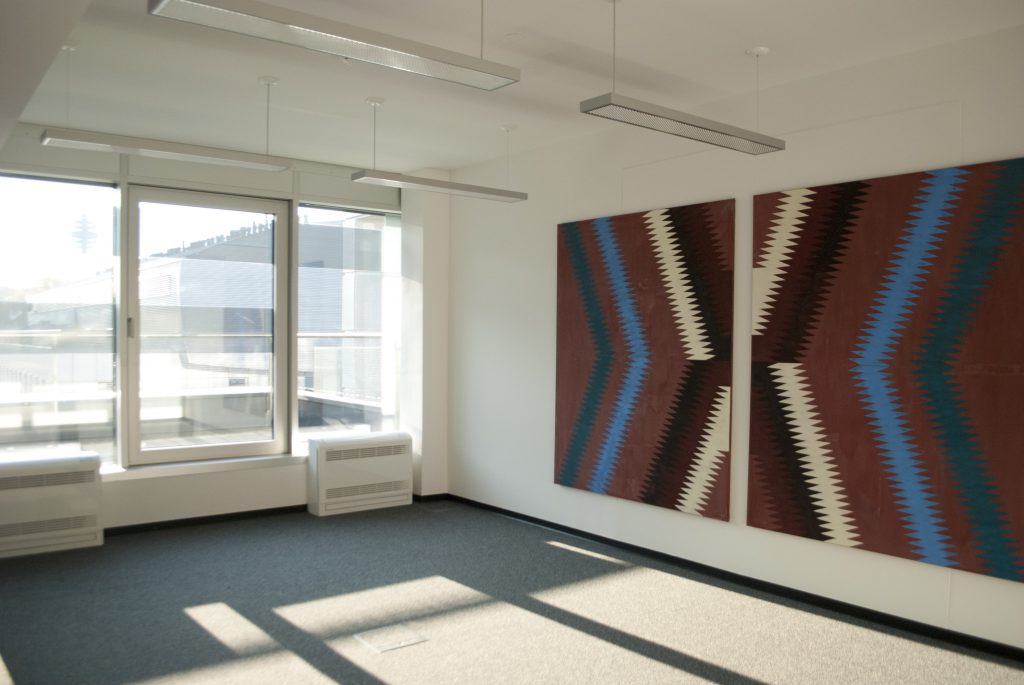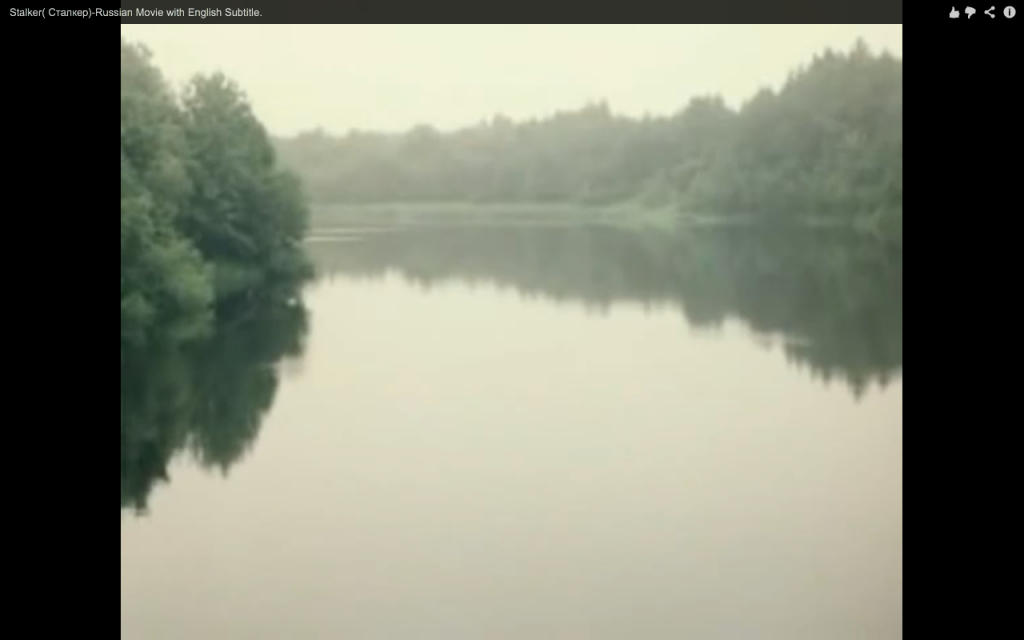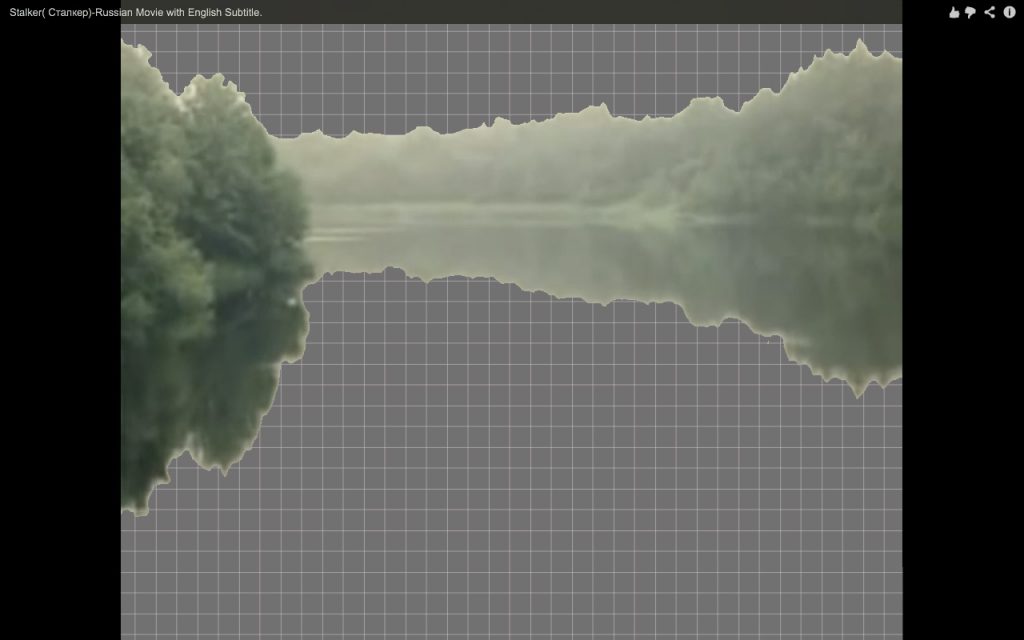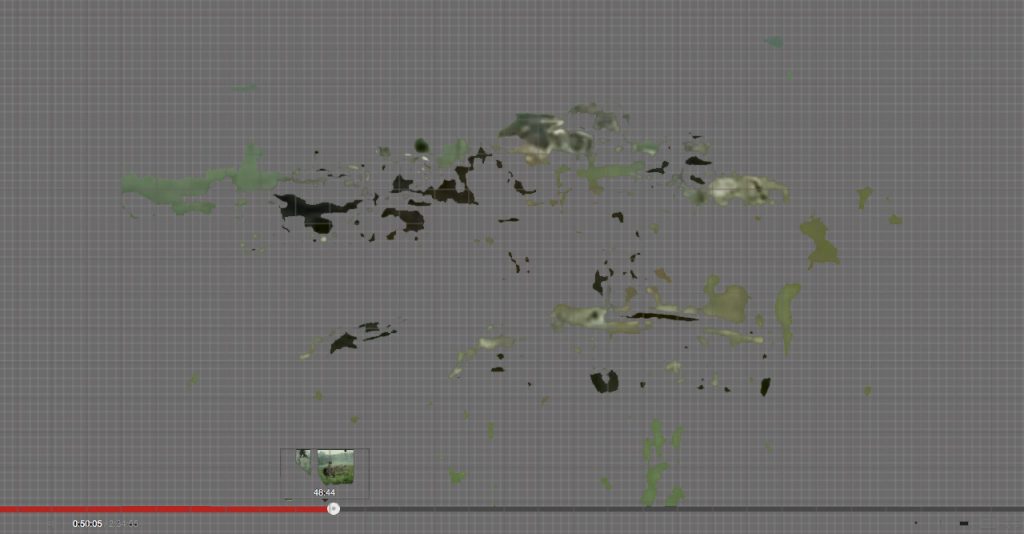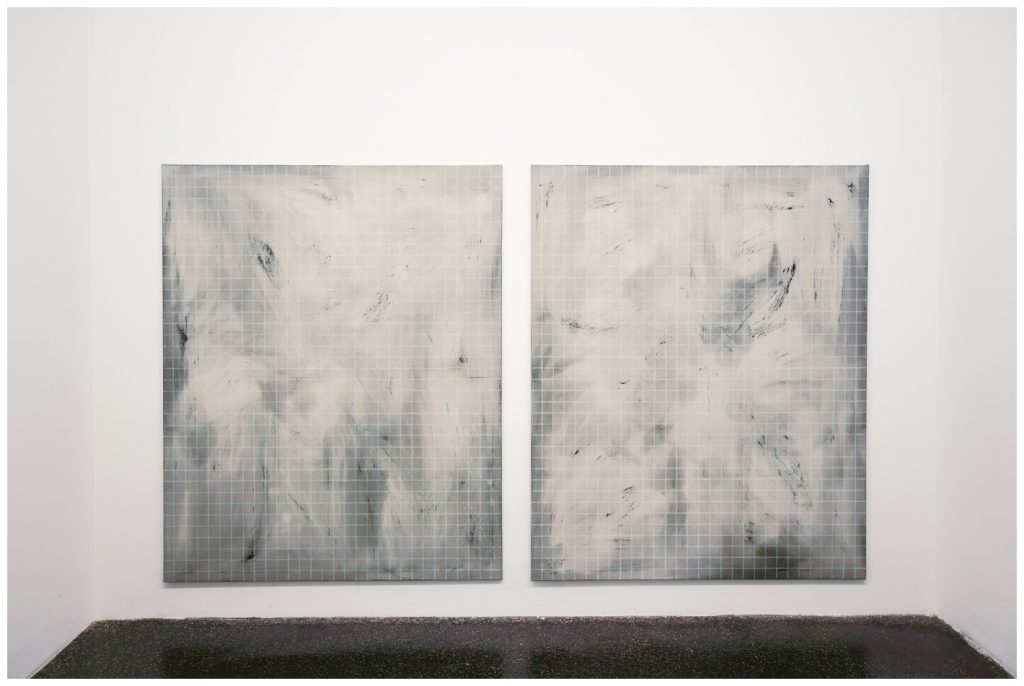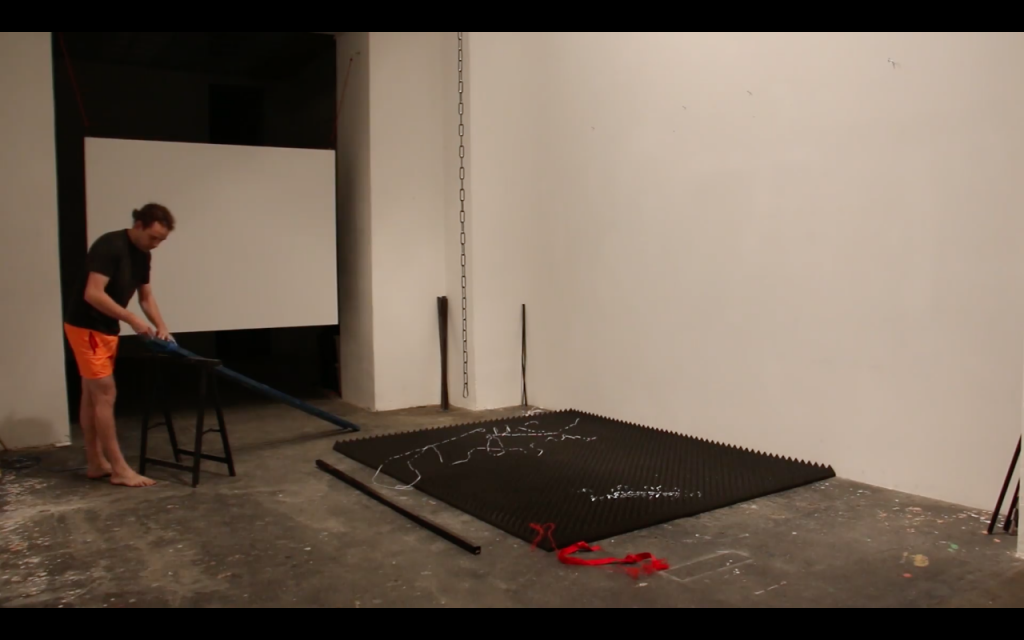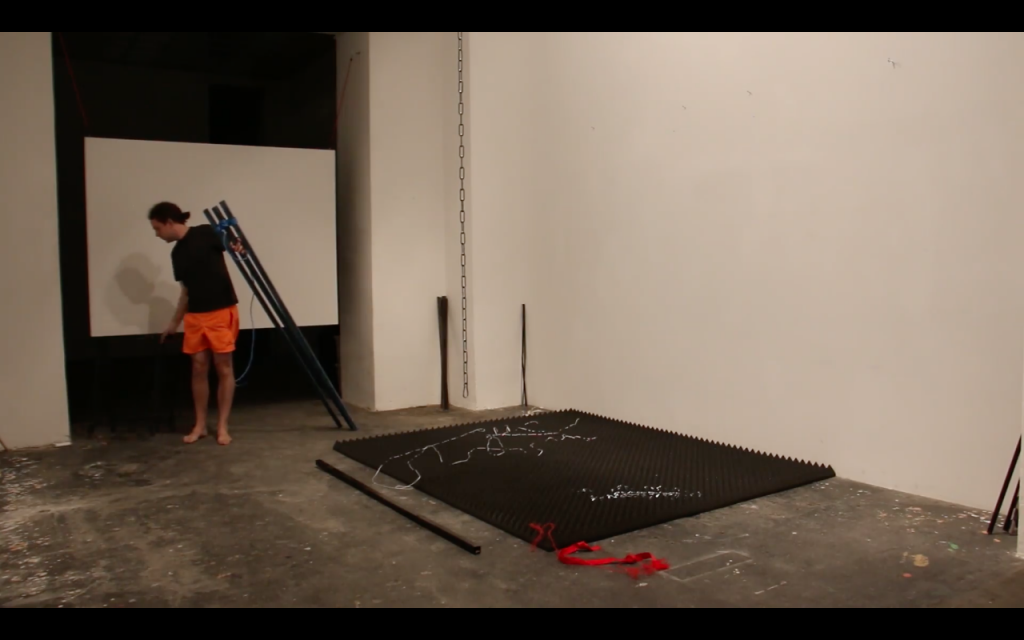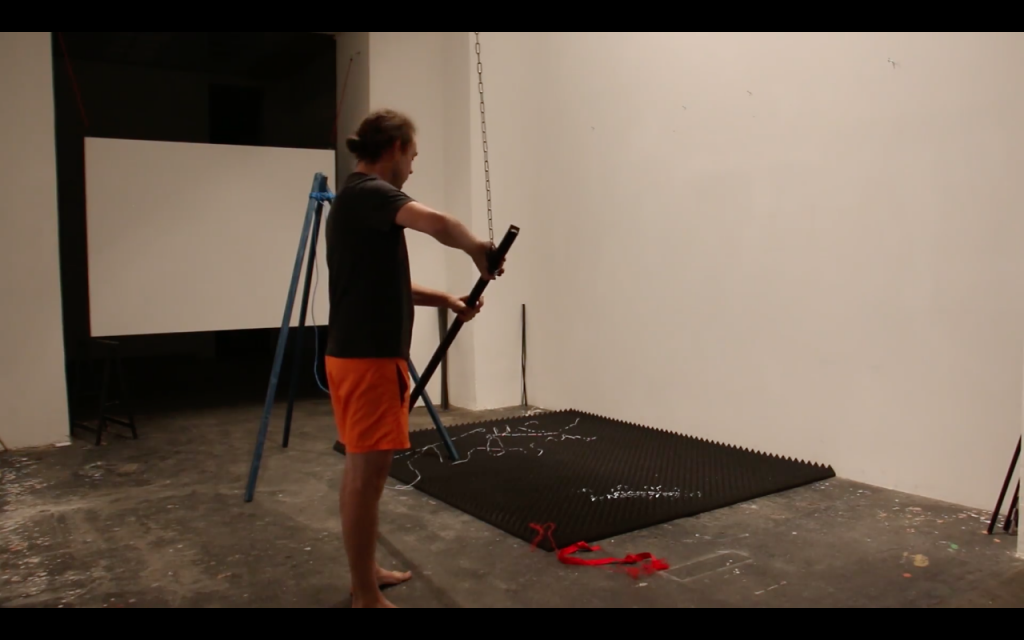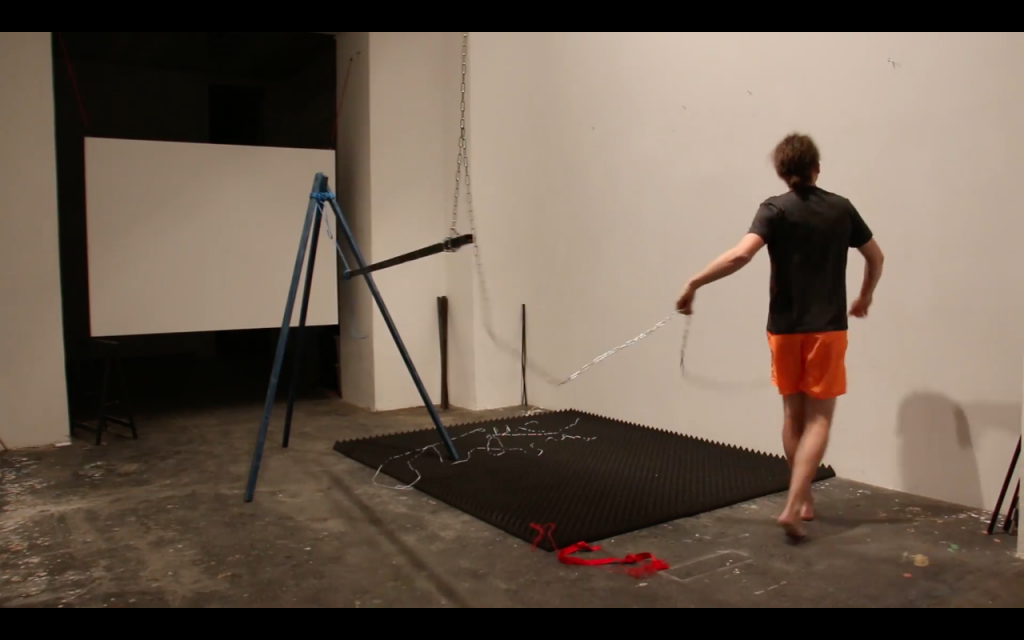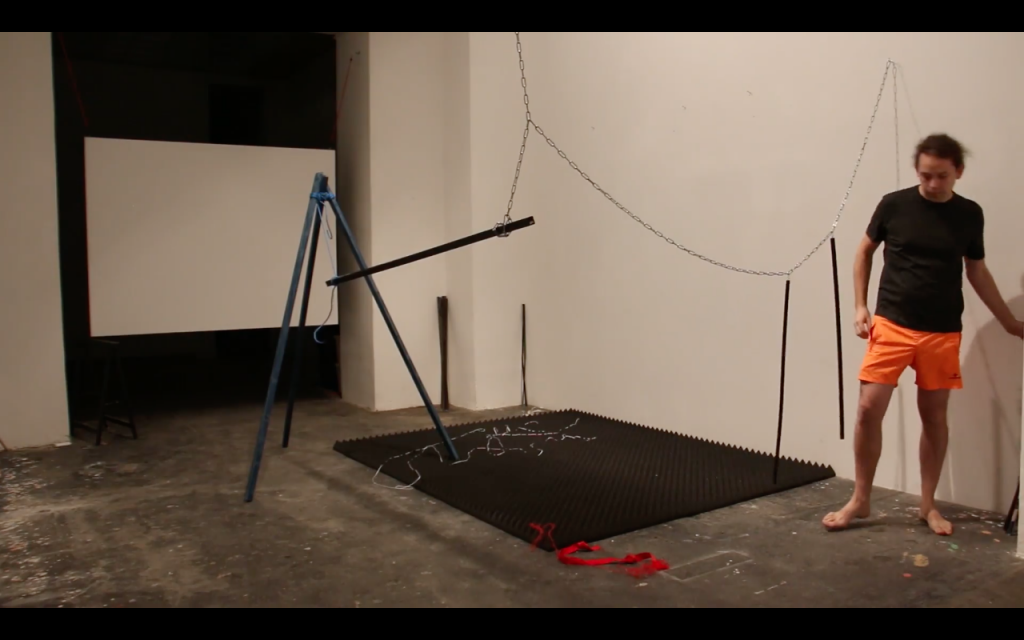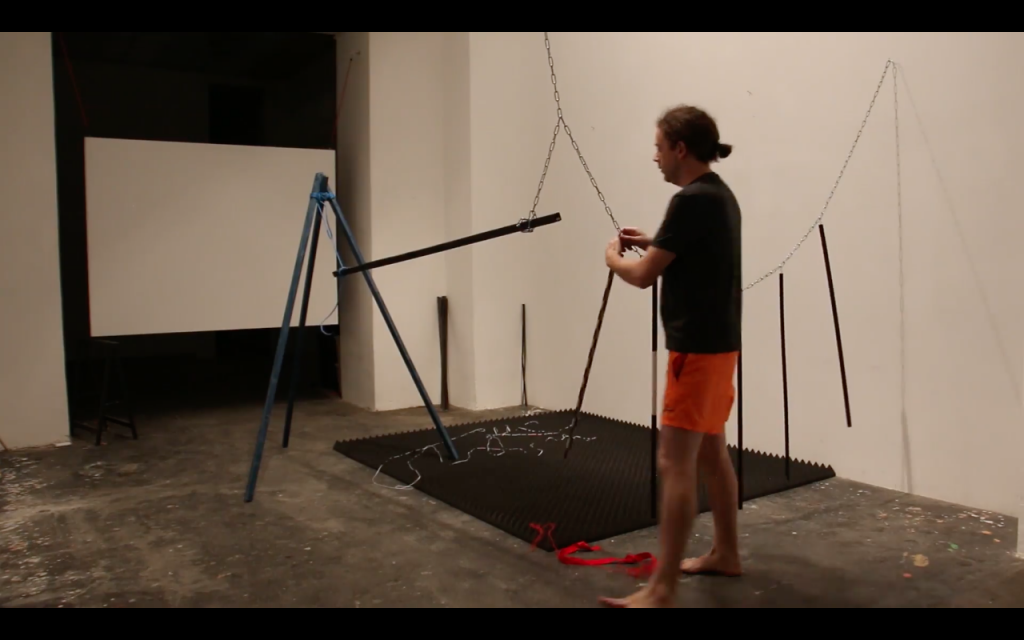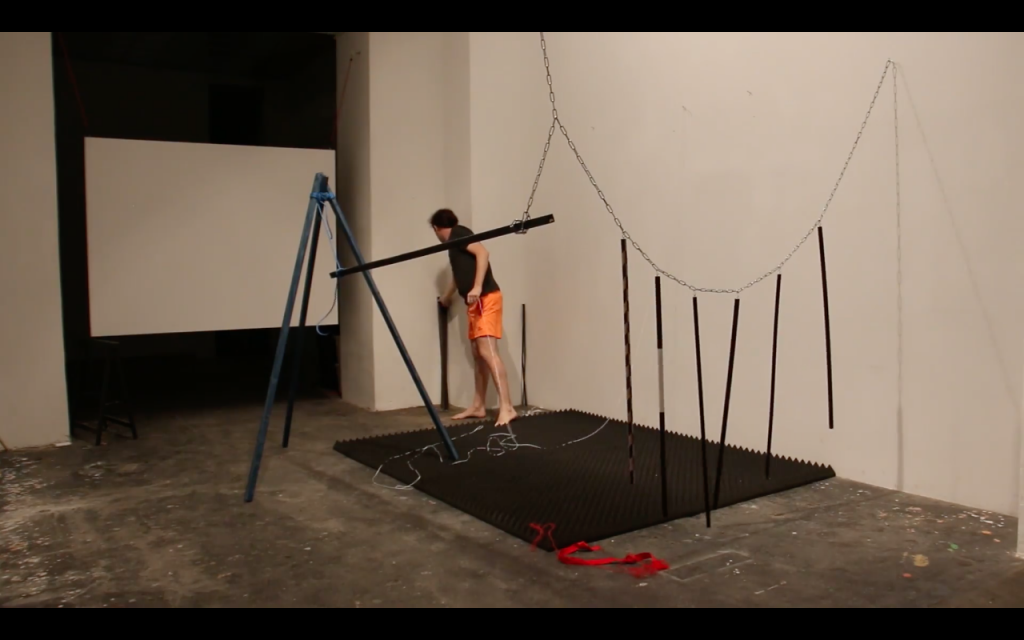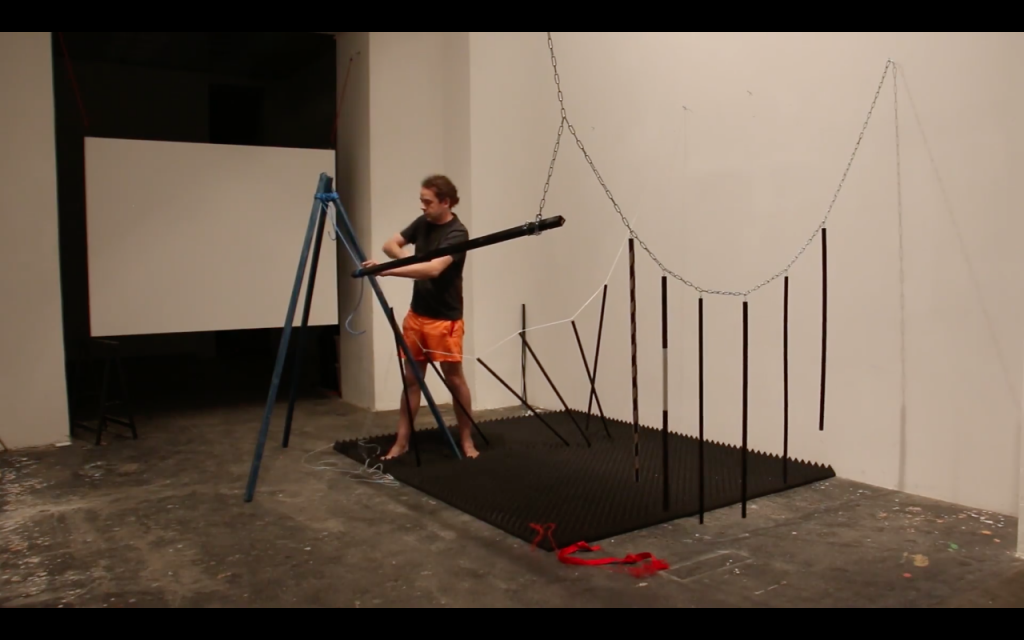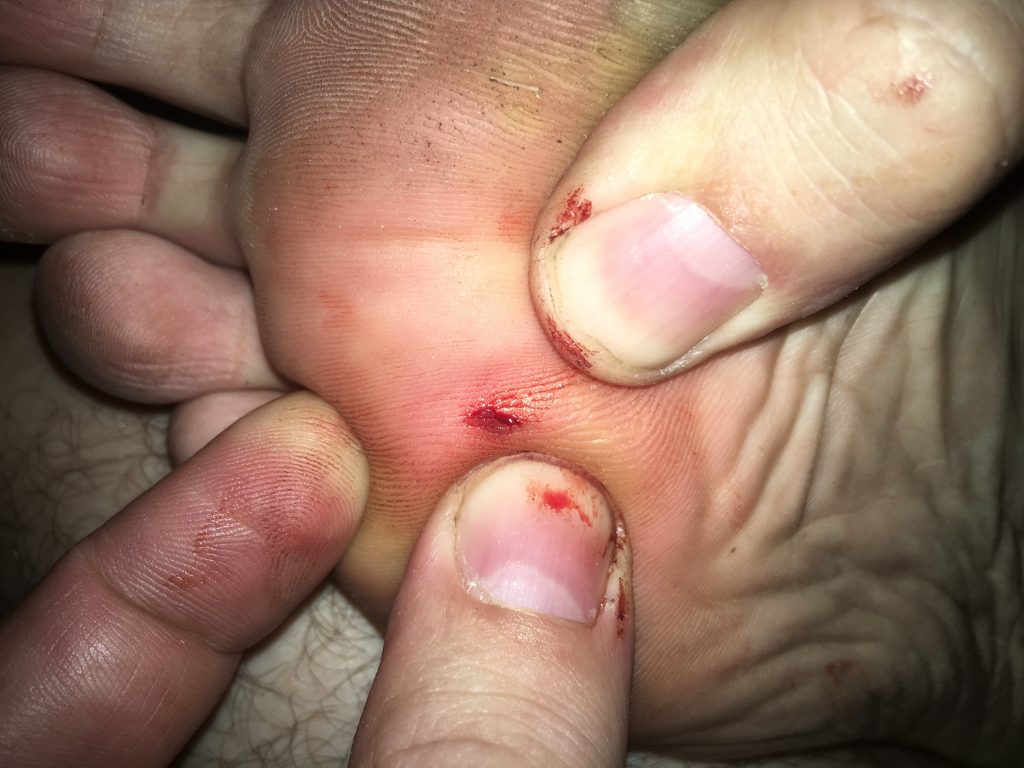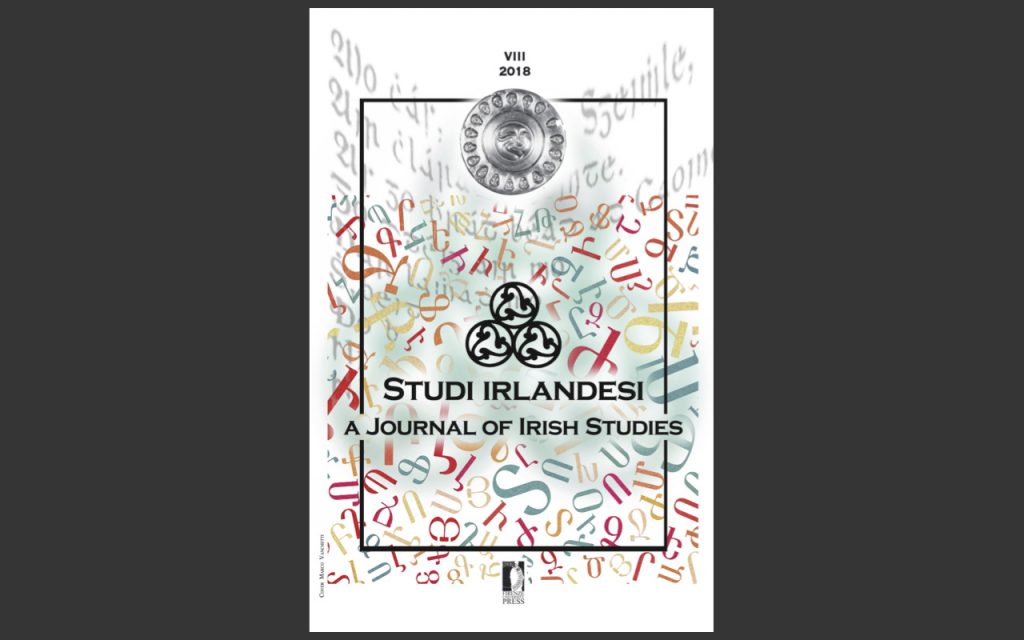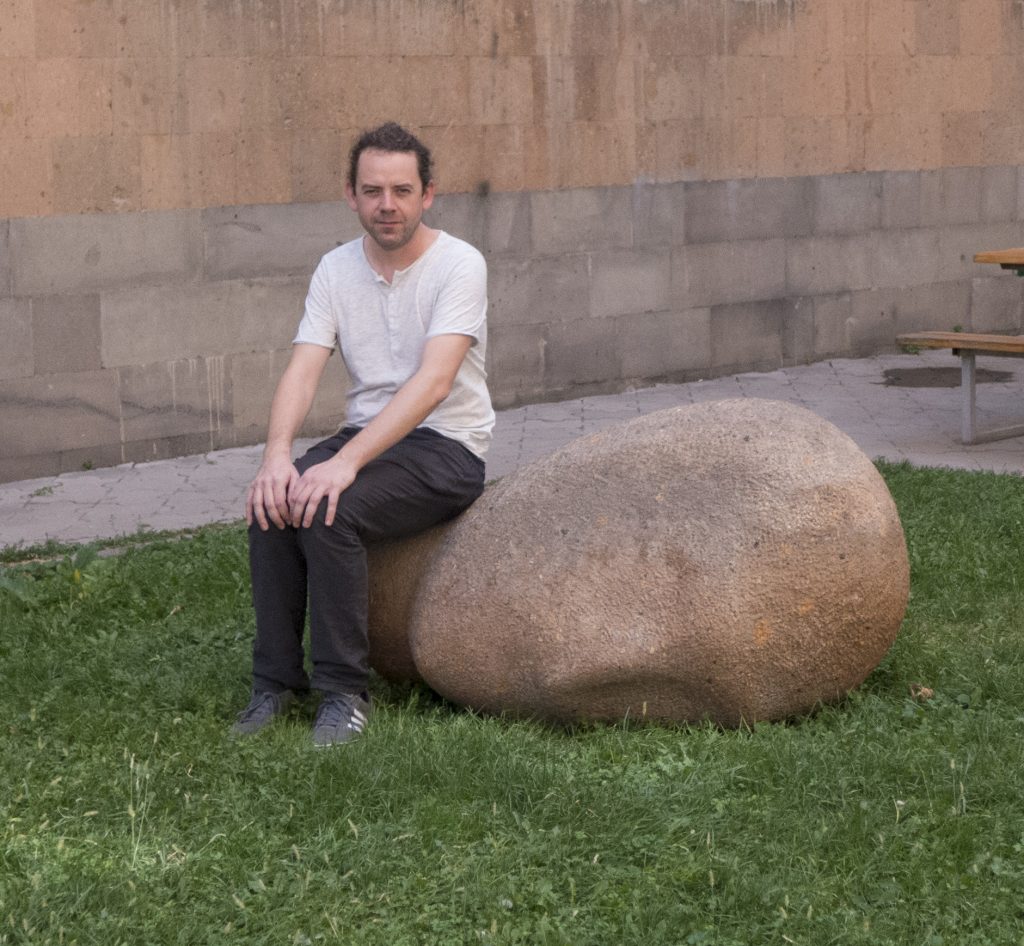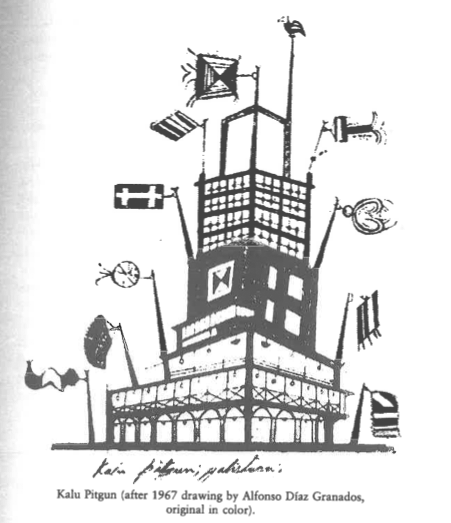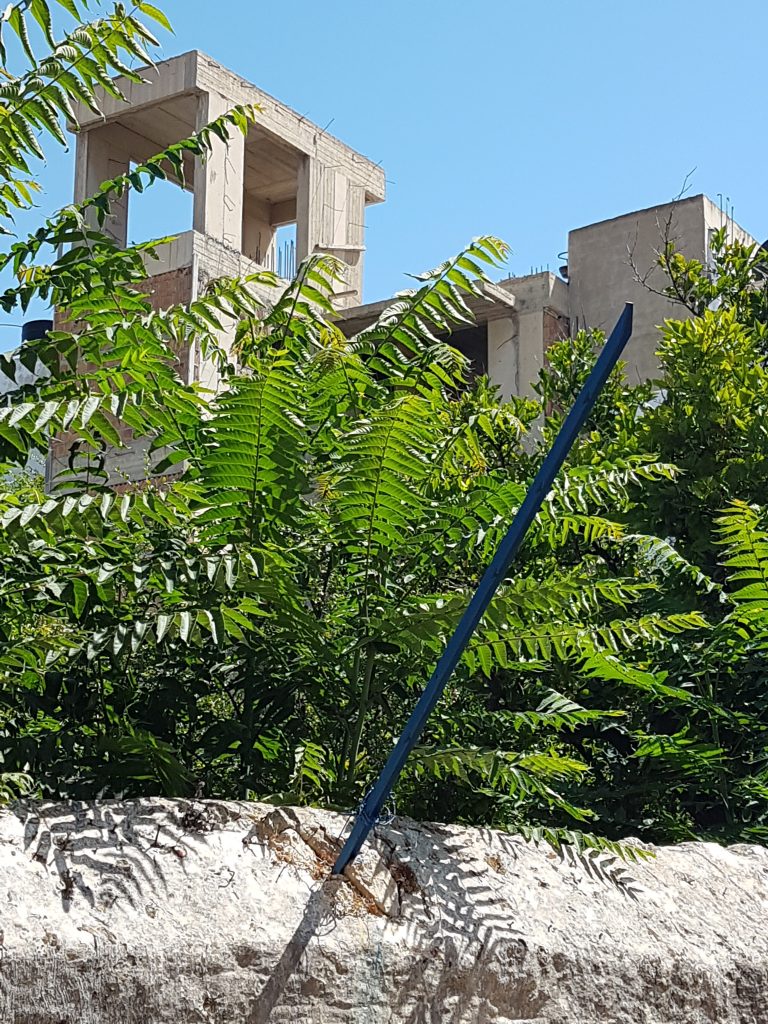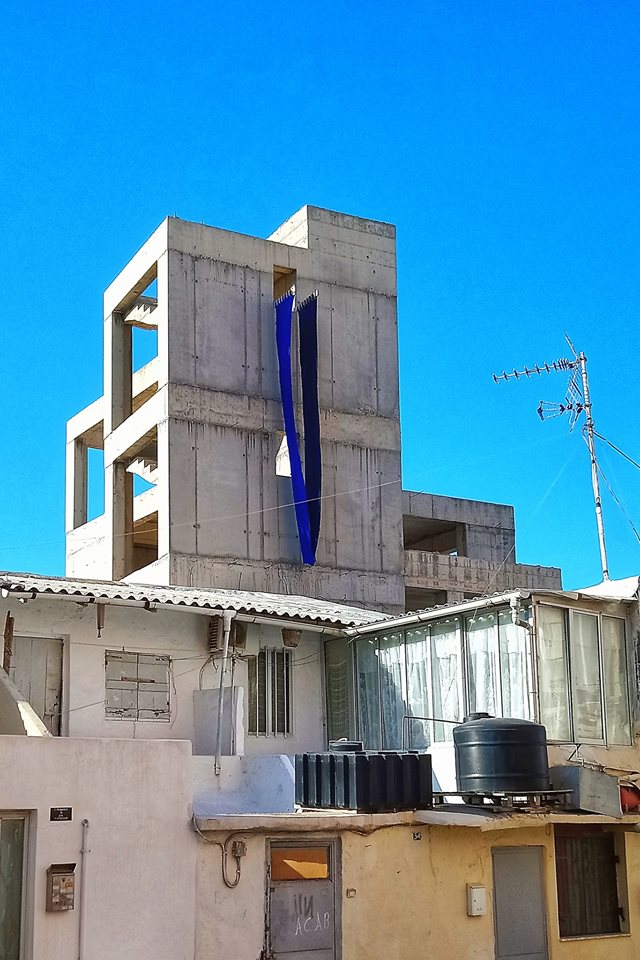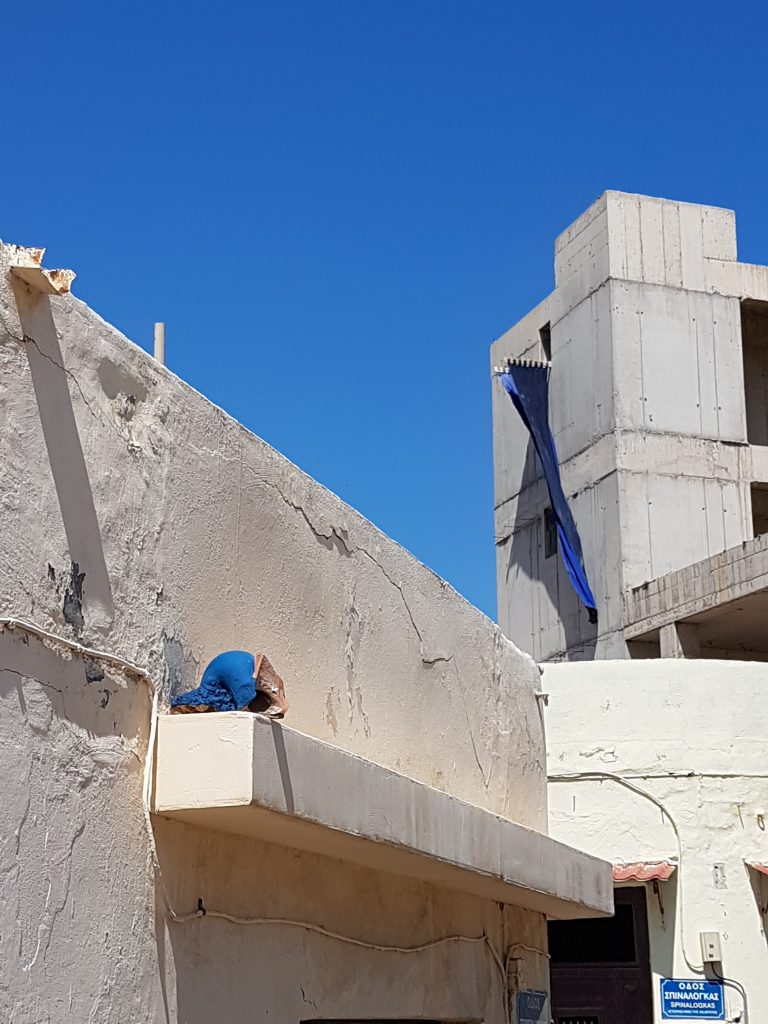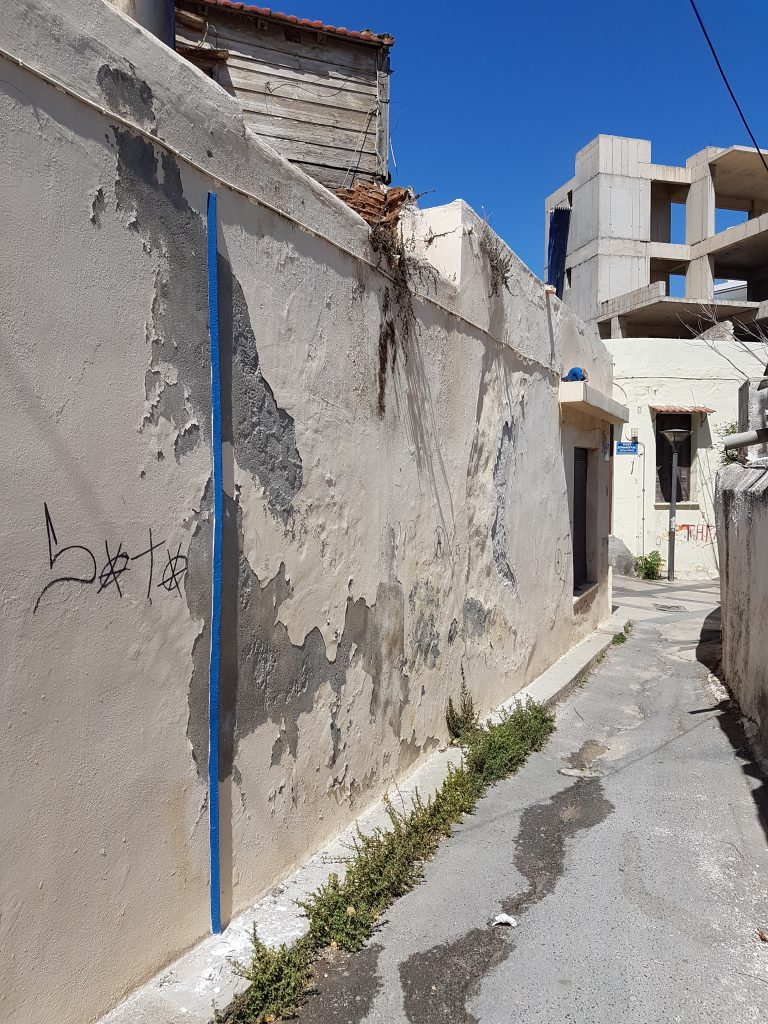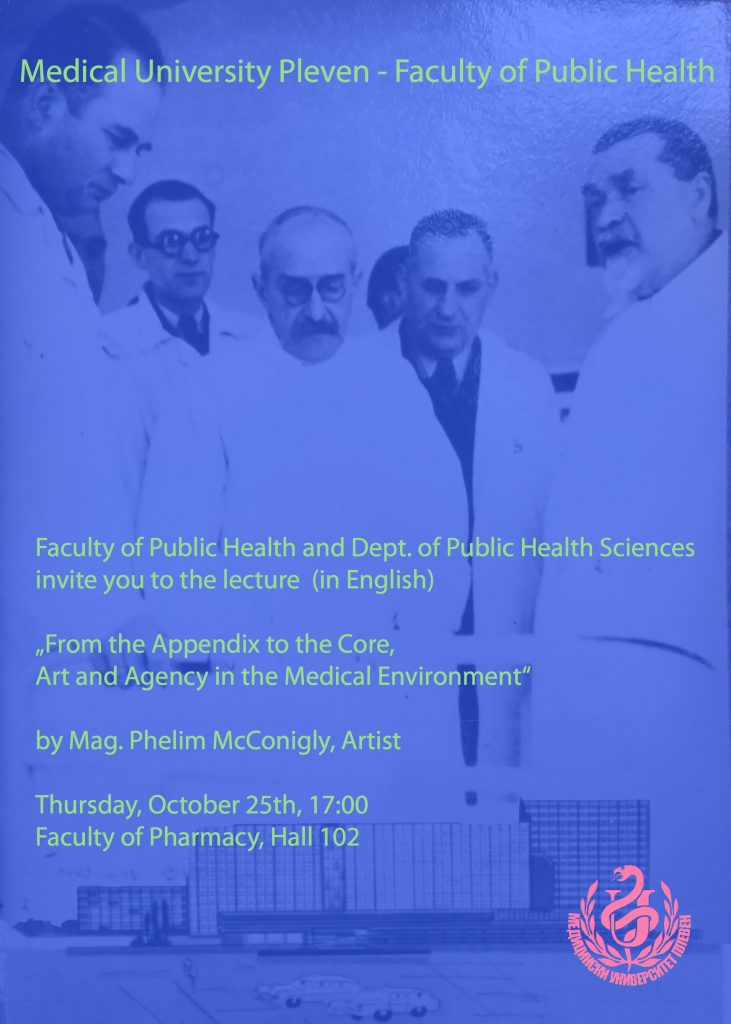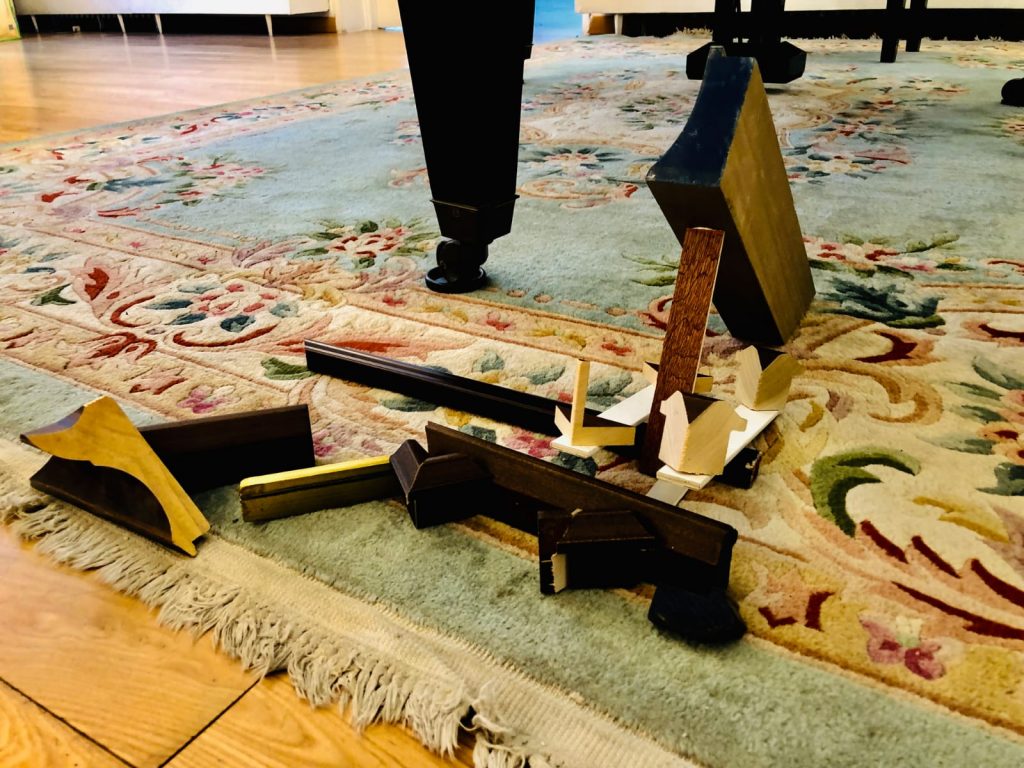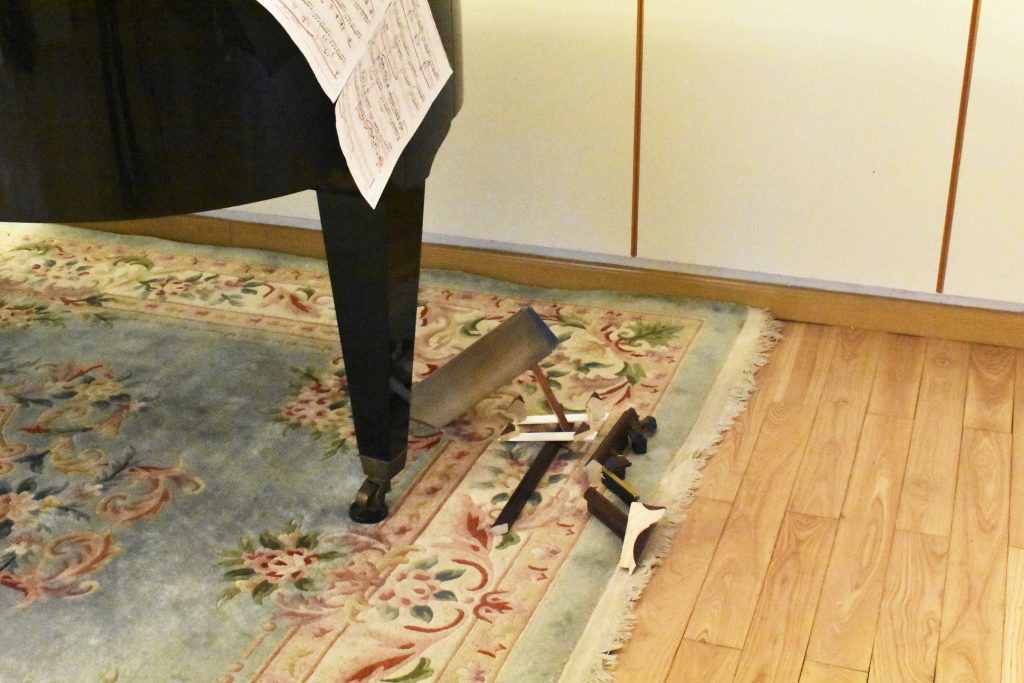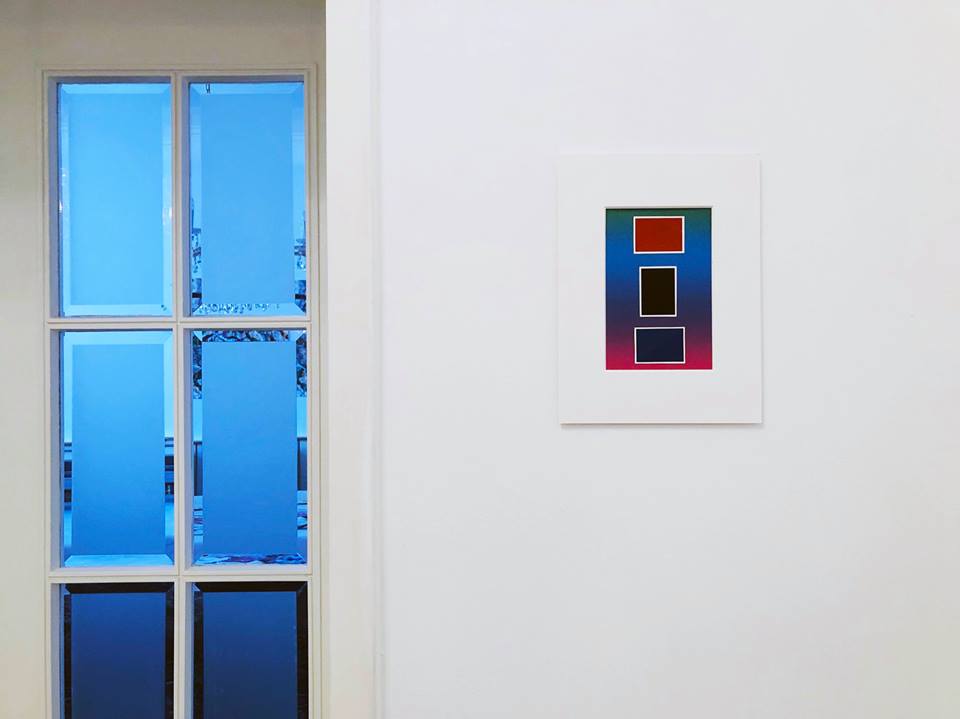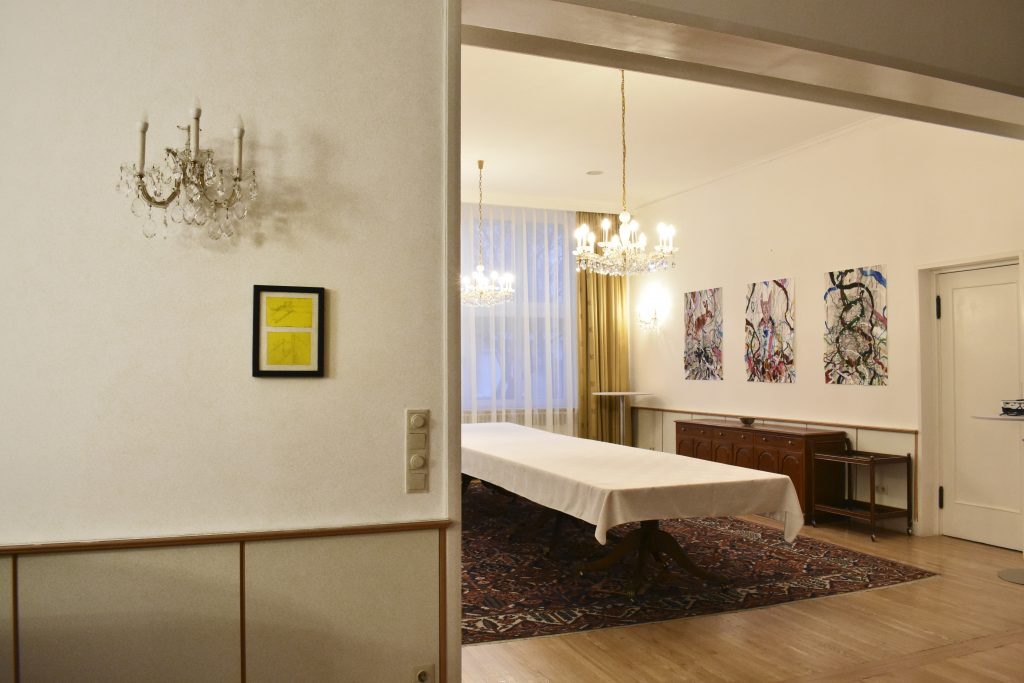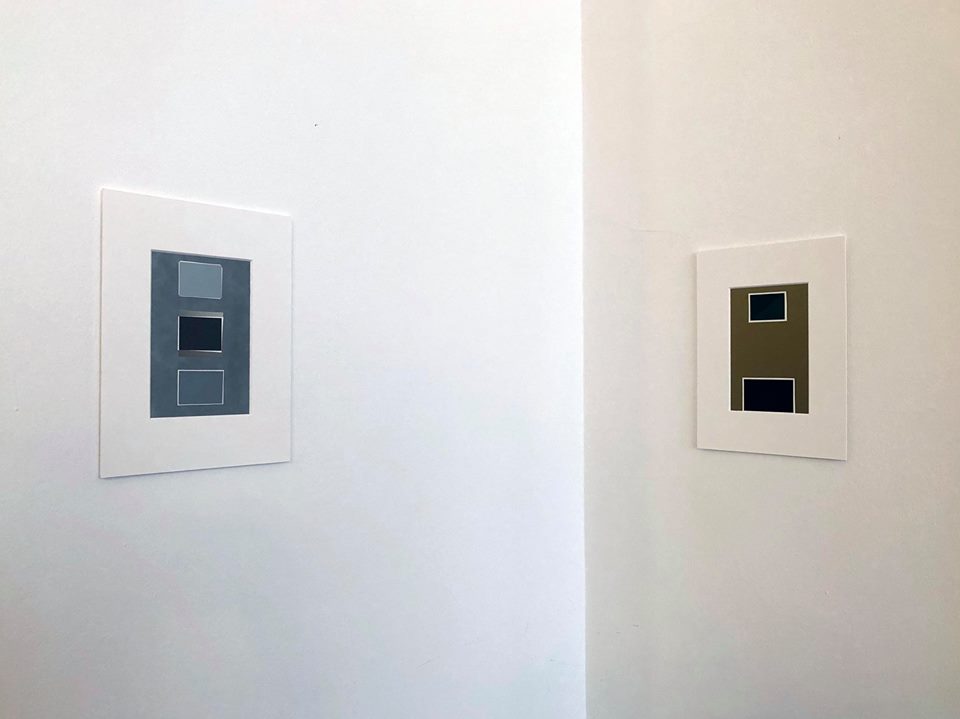Performative Installation @ Schneiderei / Studio Ruyter, Wien
The illusion of safety in an object – is also a reworking of a previous piece which I made regarding this Bulgarian Architect Atanas Petrov, who I’ve been in contact with because of his medical museum from 1965 in Bulgaria. I’ve been working with that space both as the formation of ideas regarding institutionality and artistic research since 2015.
I remade my last work on this topic into this more precarious hanging work, as a method of reflecting on gaps in knowledge I have of the Architect and his character.
The text is a recorded conversation between the Architect and I from 2016. It is one of the few tangible pieces of work I have in connection to Atanas Petrov and his history, but also my first meeting with him. The text is only somewhat readable, as the transcription is sometimes vaguer than the accuracy of the translation, partly due to his inability to stick to, for example topics such as modernism in soviet Bulgaria, but alluding further into history, Greek antiquity and sometimes mythology, emblems, symbols, and artefacts of interest to him.
The conversation, as it is, being full of holes and part information, I have attempted to appropriate in this reordering, – its (re)animism, its precariousness, its difficulty, its differentiation from its previous form. The transcription is loose. Re-hanging this work, originally a reflection on the foundation of the medical museum – foundation in terms of re-institutionalising the unused building as a contemporary space existent within the hospital.
Nae Nae, not from Pleven, Silistra. They both eh when they were born there it was Romanian.
Dr. Greganski was his best friend, he asked him to build this museum together with this guy. He is a doctor. Write this down: He is the founder of the Pleven Medical Academy, and he was the one… Moment… Founder of. And he asked you to. Musea. They were friends. He was telling him about the Trachean archaeological past of the region, and they influenced each other… Centre. Bolnamisea (hospital). Trachea. 2 years ago they found a graveyard with a mask from 2nd century Trachea from someone who was described in Homer’s Iliad – someone who was with Agamemnon. This is interesting for you. Ilion and Troya. Now. This mask was much more beautiful than the one in Greek. I don’t want to provoke you because you are Irish, but because you love Britain so much. Gervana (flag) Anglia – the three lions like a country sign (two to the east, one to the west) this was taken from the Bulgarians – this is in the British Museum, and in Valace downiae (?) even Elizabeth the second, they are wearing with the Bulgarian (I don’t know how to say it in English) testament. The first lecture eh ehe he. Eh. ? With two… na evrot (laughter) Govesavenia. Not the Roman testament but the Bulgarian – Orthodox? I took my camera with me, I walked around, and I found this building. I asked Tashko what it was, and he told me it was the old medical museum. I asked for more information and he gave me this book (150 year history of the hospital). This book has your name in it (Atanas Petrov). They wanted also a picture of him but he didn’t want to give them one. They were best friends with the writer (of the book). Every evening they were talking. When is the last time you have seen the museum. 30 years ago… In the eighties? Was it still open? Yes it was working… He gave him as a present an artifact. From the museum? No no. a medallion. Rimski provincial. Selo Gigen (village) The big park there… If you go there you will see the train platforms and the train tracks and the horse and cart have made traces on the streets, you can still see the traces from the horse carts… very strange feeling you get there. Then i suggested to him… and it was forbidden before, to make a copy. You cannot imagine the Anatomy of this face (Eskolop). He (Atanas) has a copy of this medal at home. If you move it towards the light, you can see the reflection of all the muscles of the…. Mmmm (in agreement) Where did you get the medallion? In relation to the museum? No No No this is something different. Mask of Agamemnon, da… Let’s go back to the architecture… The architectural design. Architectural idea – plastica he took from the Helinski Demos – Greek state parliament. Trojanskata, Atrium, yard inside. In this building was the parliament. In their yard it was open. No portal. There is a portal, no but not a door, there is – you can see here, there is a door. And then the people went inside, and when they had a discussion, they went inside. They were working one month in the year, this is my idea, he thinks they were in December, from the 24th November to 24th December, because then it starts the light new year. Because you are an artist three months ago in Italy they made a monument of Altec. Altec is the smallest son of Kubrat, write this down, and this is the old Bulgarian Kahn. Kubrat is the father. He united the French right to create France. Lombardia Longbeard (Long.. beard…) Let him ask you the questions because otherwise… Concentrate on the connection between Demos and Kubrat / Longbeard. There is none. Have you been to Pompeii? Everything… the main building… It also has a very… Da… He wanted them to cover it with glass so that you could protect it but they didn’t want. Also quite modernist elements. It’s not typical for Bulgaria… it’s a modernist… Yes the details. The composition is old greek and the details are modernist. The details, the modernist, economic of Bulgaria, in Bulgaria it was… moment. Moment. Moment. He says. Bulgaria back in the days, there was no money for details so he would do it more modernist. There was no money, not for details. The excuse is the modernism, something similar to the architect, Walter Gropius, new classicism, but the elements are not detailed as beautiful, a little bit more simple and dry. In Pleven in 1965 there was no modernist ideas. He says this is… nobody said do it like this, he just did it. He spoke about these things a lot with Dr. Greganski. This was your first building? No, he says this is not even part of my work, I have beautiful buildings. Ahhh. (something about Pleven). Where the big roundabout is, a viaduct… It’s a very powerful building. It has a very dark aspect on the corner…. NO! Manhattan, no. His one is modernist and simple. It’s a manufacture for modern Italian clothing. 68 he made it. He wanted inside to be like mode show, italian haute couture. Technologically, its covering still another building, the eiffel tower. Aaaah. Going to the sky. He will paint it for you. 34:20 – 34:40 (only bulgarian spoken while Atanas is drawing his ‘Eiffel Tower’). He doesn’t recognise this (museum) as an important building, it’s not even part of my main work. The plan of it is… these are the apartments. Corridor. Here is the lift. There was an earthquake, he didn’t even prepare, thanks to him (some other architect?), the highest building in Pleven. 23 floors, it didn’t move??? This is a bus stop called the Chinese Wall. 25 years before. After I saw that it is the same structure. Important is that in the centre is the lift. When did you start building? 64. So its a very early building 65 yes Media is 68 70. We didn’t, everything was. And this wall was also part of the plan? Yes. To close the panorama view in the inner courtyard. Doctors who died in the fight against. Memorial for doctors. And it was protecting. He says he is always. And the wall is not straight. This is why. If there is water, Ah no wait there is a gap, 2 metres, maybe 3, not 10. If there is something like fire, evacuation should be fast not like… something. Do you have plans of the museum? No. He made it without money, without contract, I was working but nobody paid. To make a comparison there are five buildings in Druzba the area where he lives… I made this one. Lots of people are scared of this height. They think they will fall. In order to not have this feeling he made… mmm hmmm. Yah. Da da da. Functionally very… but he is… Gerganski was totally a mess, and I don’t give a shit about these things either, we did it and then… A few years ago… I spent some time with Tashko. How do we work within this institution, the part of the hospital that is not used. The Appendix of the body… When I found it… He says that they were making exhibitions, there were beautiful flowers… He is like, oh I can imagine…. The museum was used as storage for 25 years. The windows are broken, this wall is gone, the roof is broken. Because 20 years ago, the medical institution registered as a business… I think he is a bit… There is no spirit, no art, no culture. But this is what we are doing now, no expectations, My grandson. Because he has an idea like this sometimes. This year he graduated architecture, his diplom arbeit, they chose together, and I suggested, one old historical museum, the museum, in Pleven, the whole… area of the museum to close it. Together with architecture like an amphitheater, open performances, hotels, restoration… Archeological facts to make as souvenirs, not to make some kitsch. His arbeit is not… My interest is not… I come to the space as an artist… the idea is not to restore, 25 years of storage was cleared, we spent a long time to get an empty space. A nice staccato floor. Black white black white… Why did he do that, oh because he wanted to. If you want to reinvest in this, it should no longer be part of the hospital. He wrote to the mayor some years ago, the fountains in Pleven. He is just explaining that… Rivoli in Paris. Ramkite. Inside there is a plastic architectural structure, in the courtyard there is potential, and inside the gardens, there is – even in England. Lots of people used the hof, even now. They make elements that have a ritual/spiritual influence. Here you did a good job. Even after, you see the changes that you made since. Its connected, its genetic. You have his genetic memory. The Hospital, is not the place for keeping this space, Gredanski was like – maybe. They were speaking alot with Ilian hey lets… make a Quartal. Last year, while setting up, it was a long weekend, a large container removed old furniture. There was a fountain. The wall is there but not the water. Inside the museum, ah there’s a hole in the ground. Yes that’s where the fountain was. It’s a medical institution, as a private business, and their first priority is towards the buildings, to allow us to work there. Yes but there are two options, either you restore it or leave it to the hospital, if you come and use it as is, then who are you? I am an observer… You shouldn’t be surprised that… Jerusalem? The castle of Solomon. There the building of Solomon in 1287 when Jerusalem was finished, and became the capital of Imperial Rome, this castle was made into horse stables. So don’t be surprised, after there were no… Da. Some historical… They were protecting the castle. Nothing interesting. For me – from an art institution, to the medical, and the practice around that. Institution as a Sphere. How do you find the interest to work there, it is not architecture, but I see the interest in the architecture. I see the function of the hospital, but through… The architectural plastica – is a space for function a flow that covers ideas. There is a very interesting book called Architectural hilfsmittel. Mark Wigley – an inner skin. Kristo Vashev. We were studying together. His Professor. He didn’t make any painting. Painting was more academic. Atanas Petrov was a phantom. Do it do it, but he didn’t realise that it did happen. He is like me we are similar, we are connected. There is a connection between medicine and art. You can invent one, yes. Three years before I made that museum, I went with the director of all the museums to nocopolo and to look at the big Marin – on the top of the ship there is a protective weapon, a cannon. So he sees one on the edge of the Donau during the ruska Turkish war or it fell, during the transportation, stayed there forever. Lets use this one – put it on the castle so that you can see it from the Donau, and they were like… My colleagues the architects wanted to take it up and put it on the castle, ok we do it we do it but that was not what i wanted to say, when we actually tried to pull it up he brought me to one really small church, one of the earliest christian churches in nikopol, very small, just beside it one graveyard, one coffin, there was… when it is full of water, not to destroy it, it came out from here. Romans did it. On the bottom something was written in French. And then i decided to… 18th century a french guy cameby. nikopolo. This is a cercofak (cercophagues) devoted to Ehlia – she was the wife of the Roman main guy in the capital. She died very young, and this is a very poetic lyrical place for her. She is the Roman goddess for souls, for dead people. Place de Concorde. Dujarden the french guy writes down on the coffin which was actually ? Shisman (workers) Now people are studying this in the architectural departments. On the danube, beside the Romanian border. Silistra – Sculpture park. How the fuck does he know that… Danubius. Dunav…
